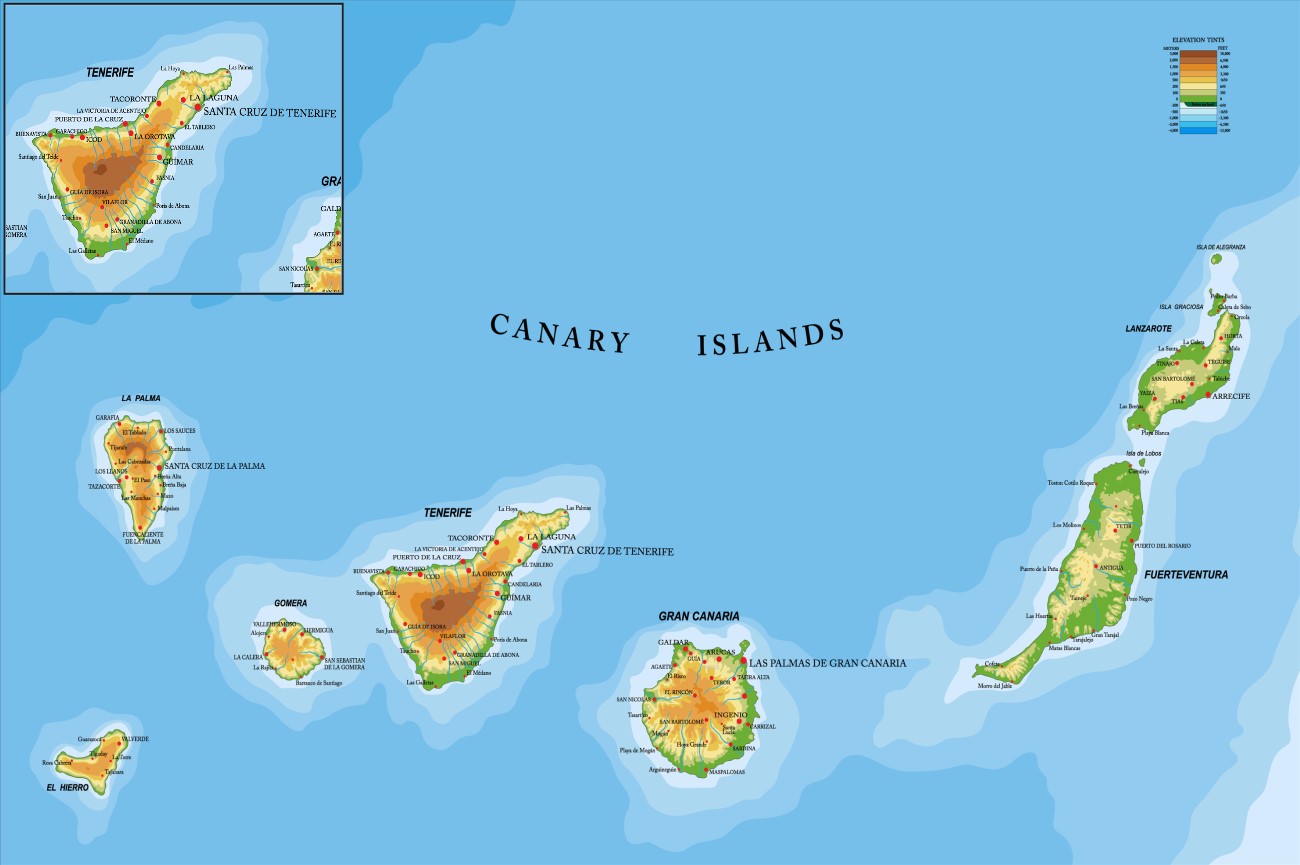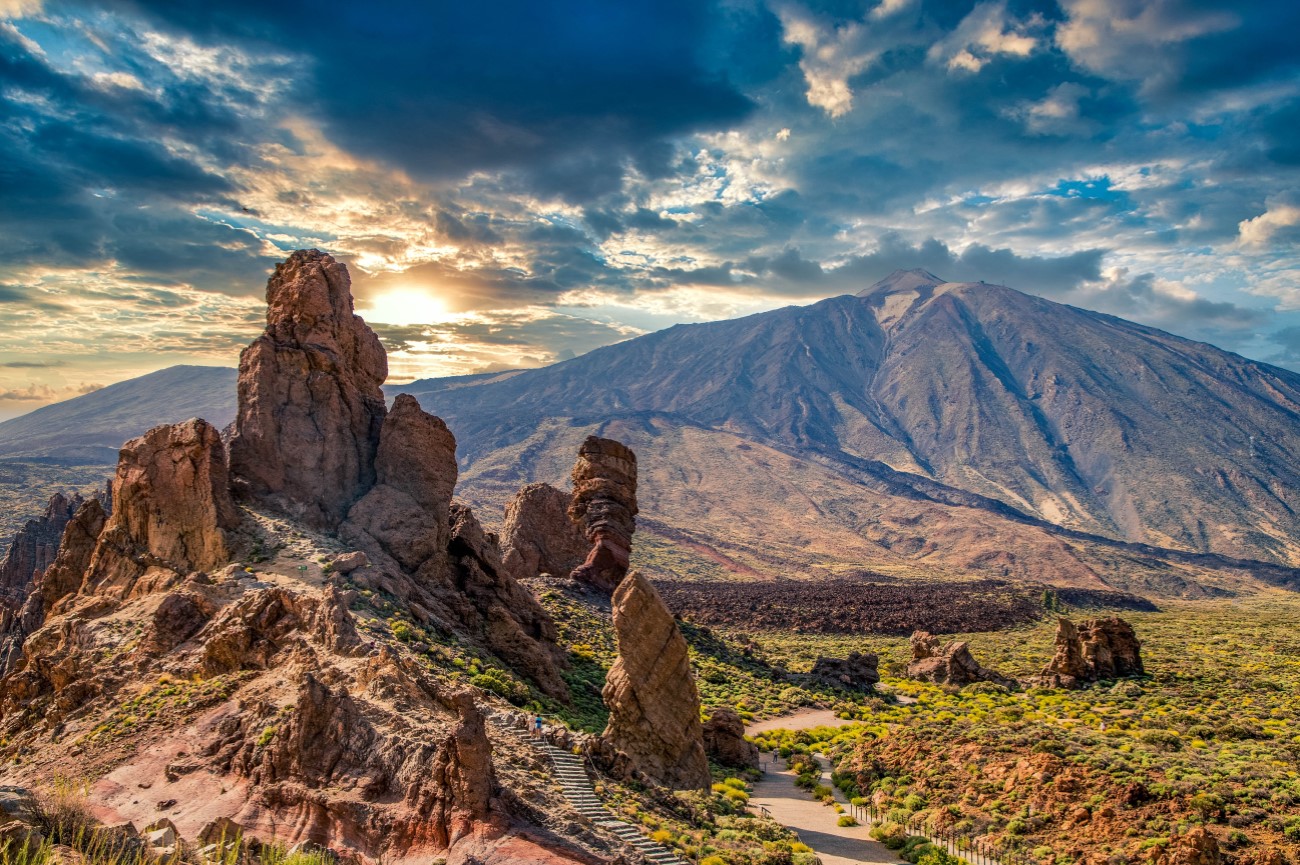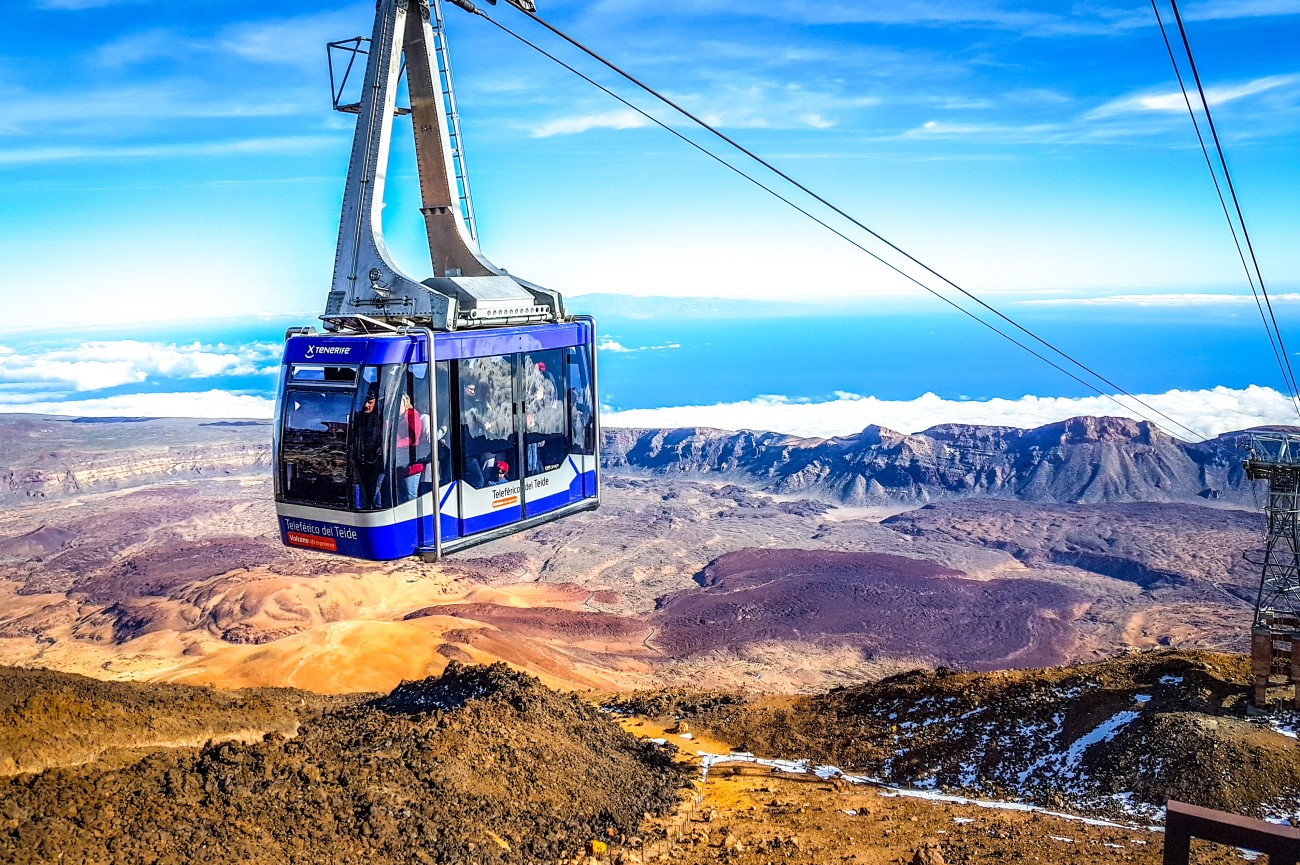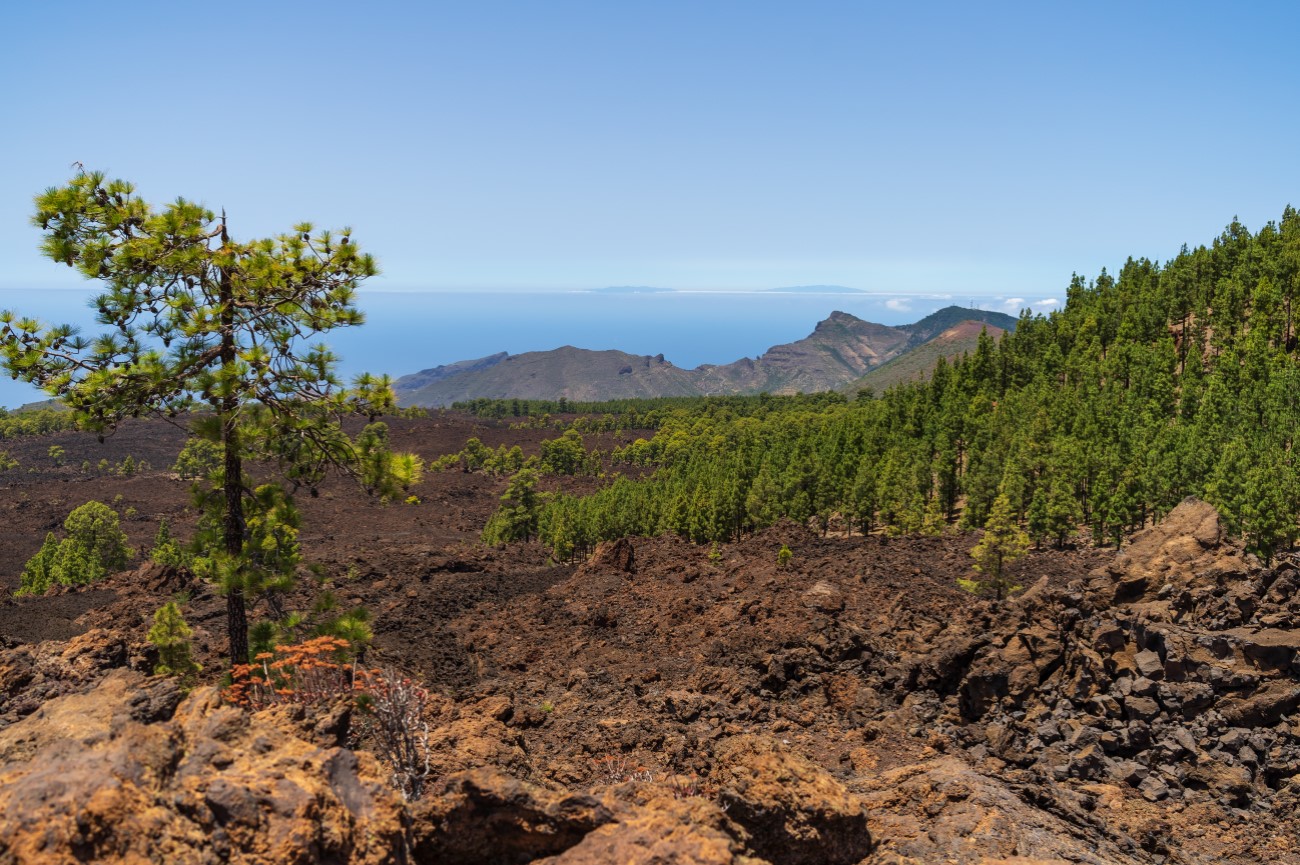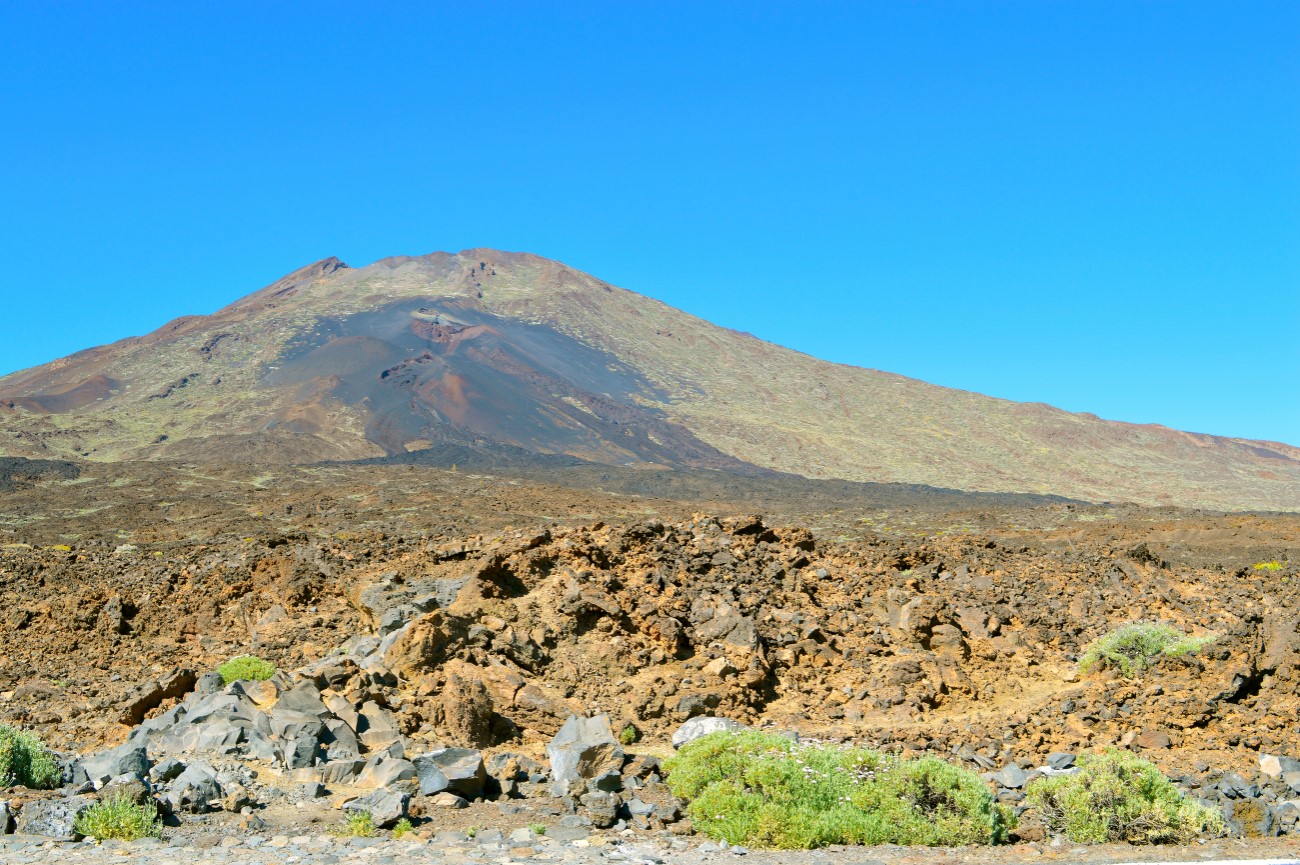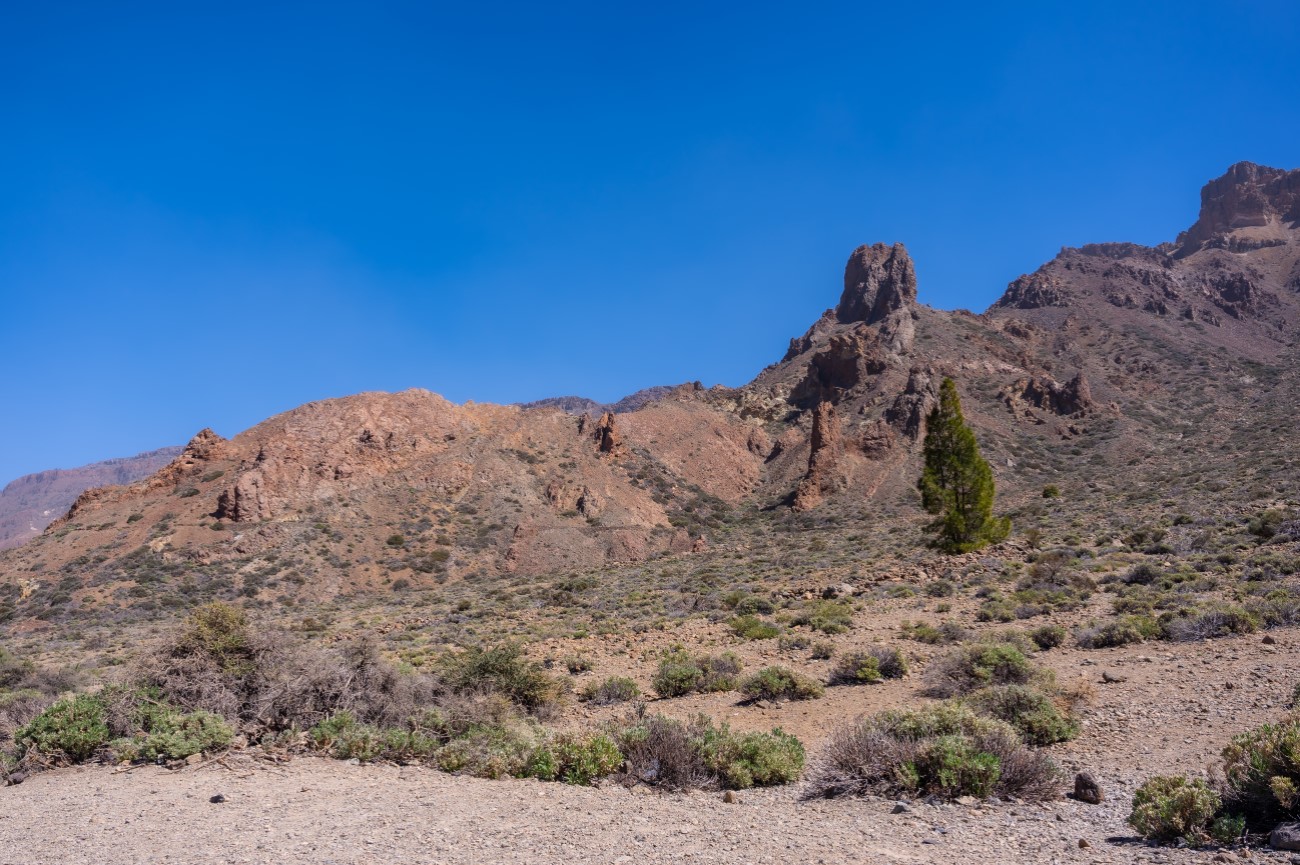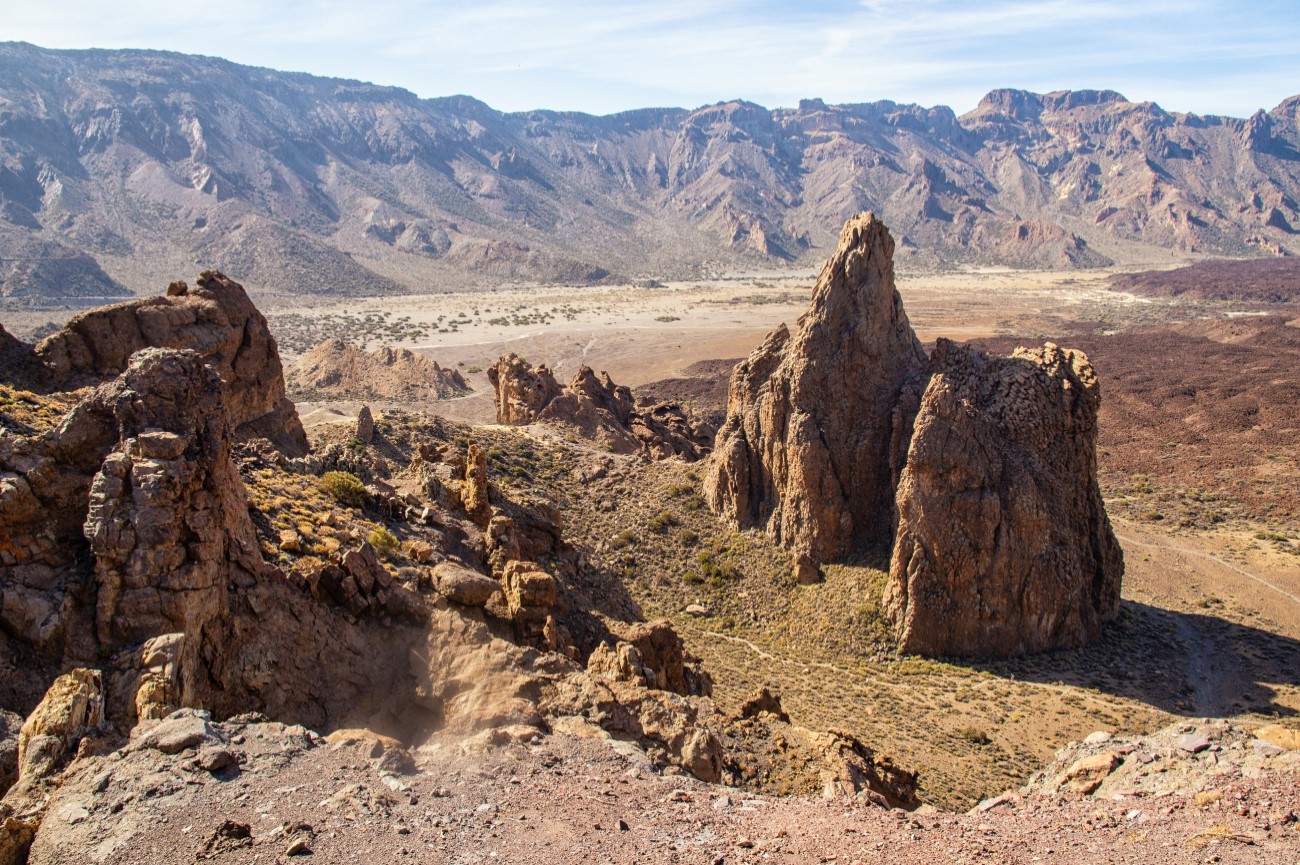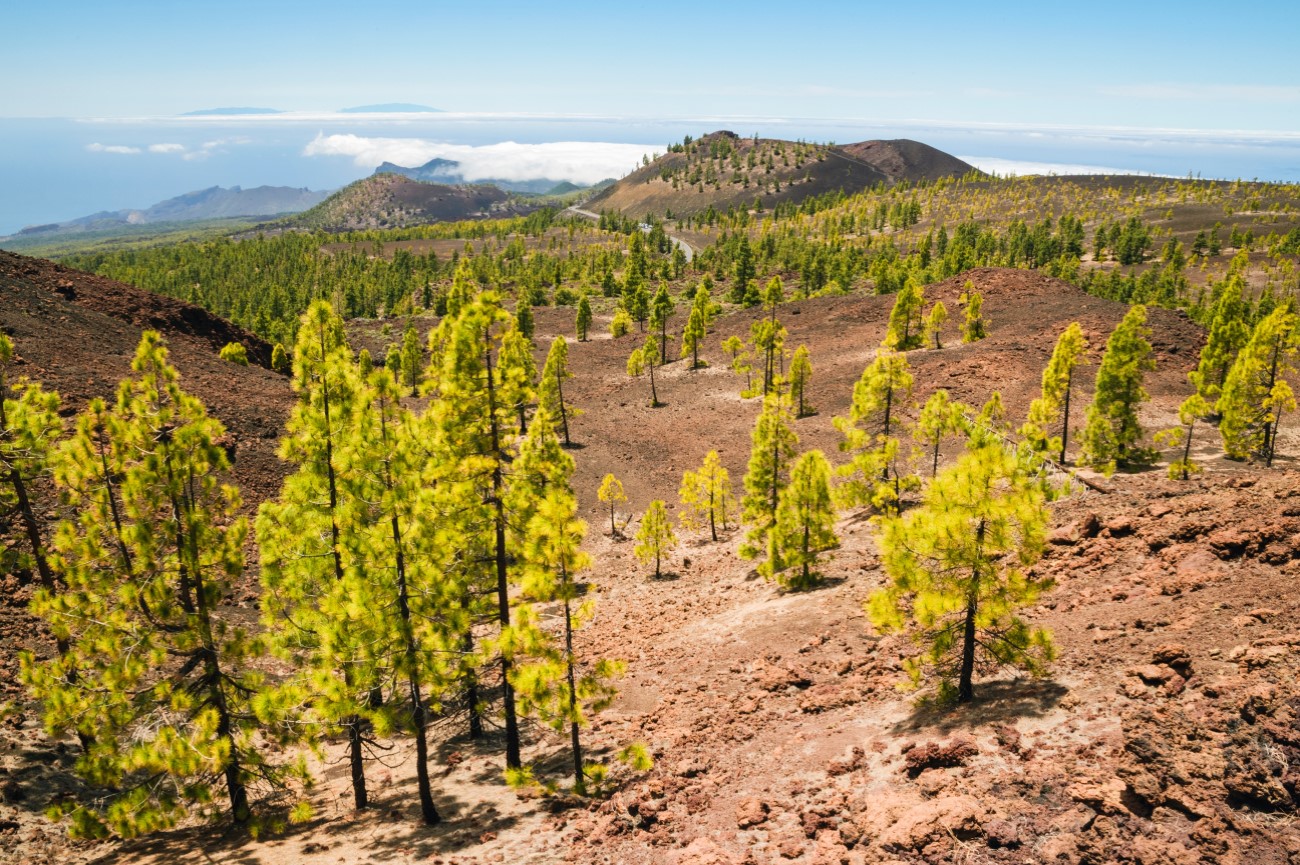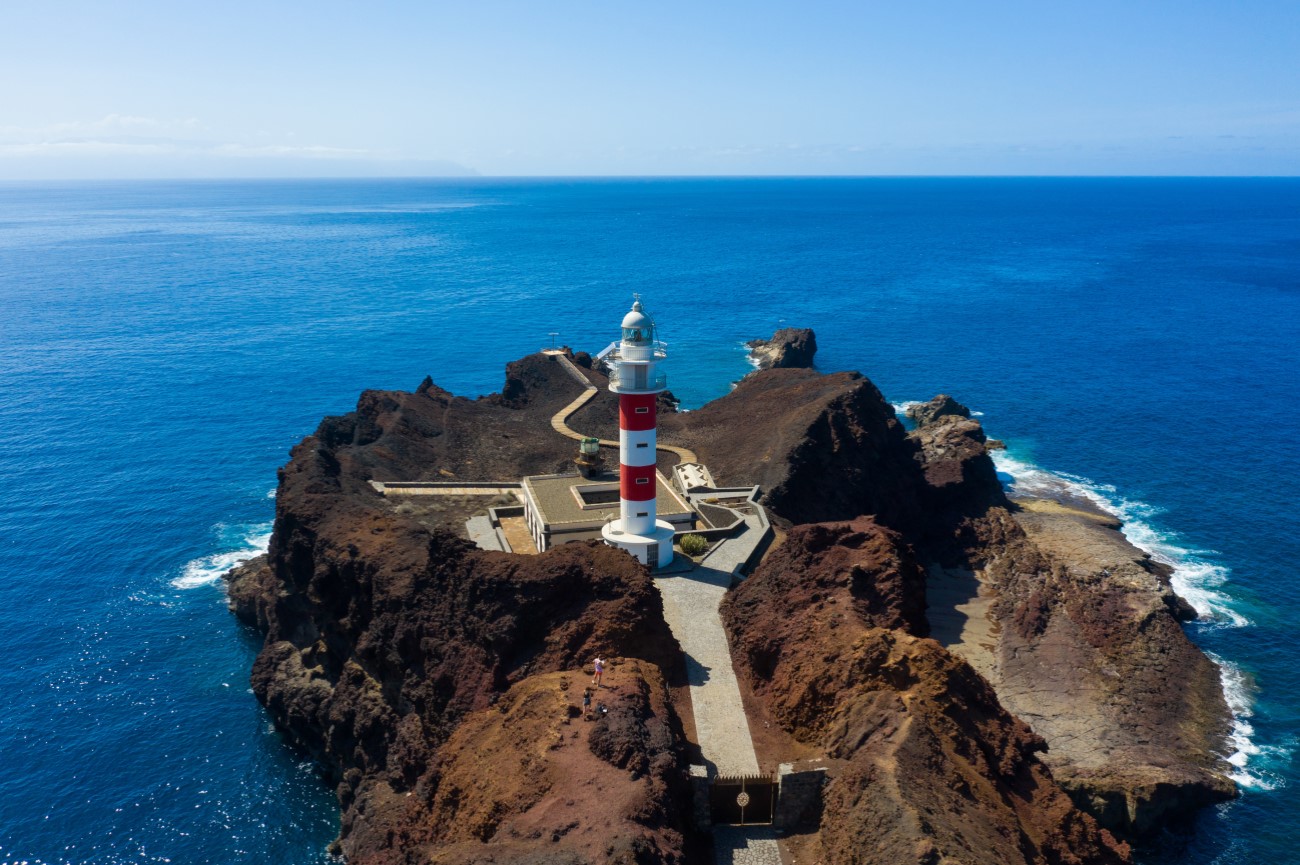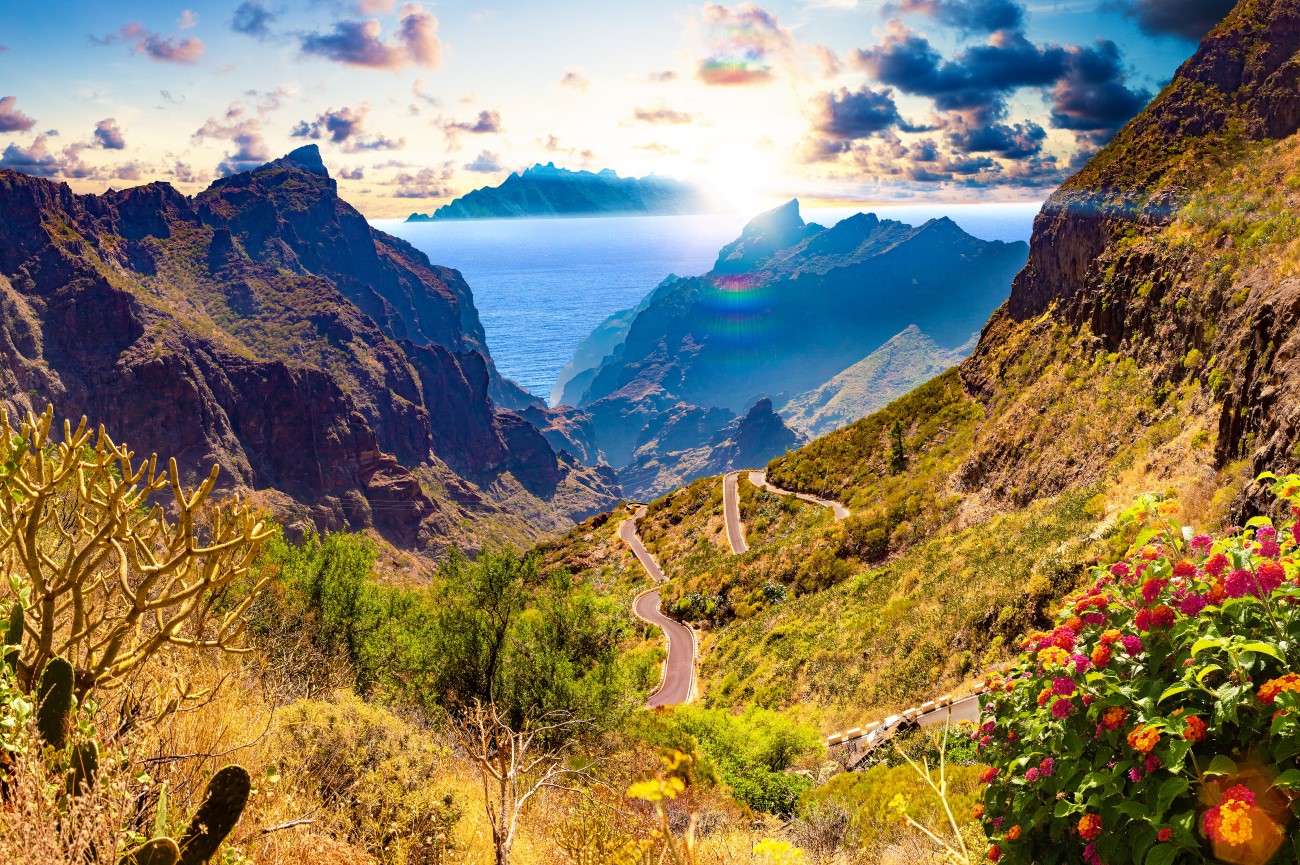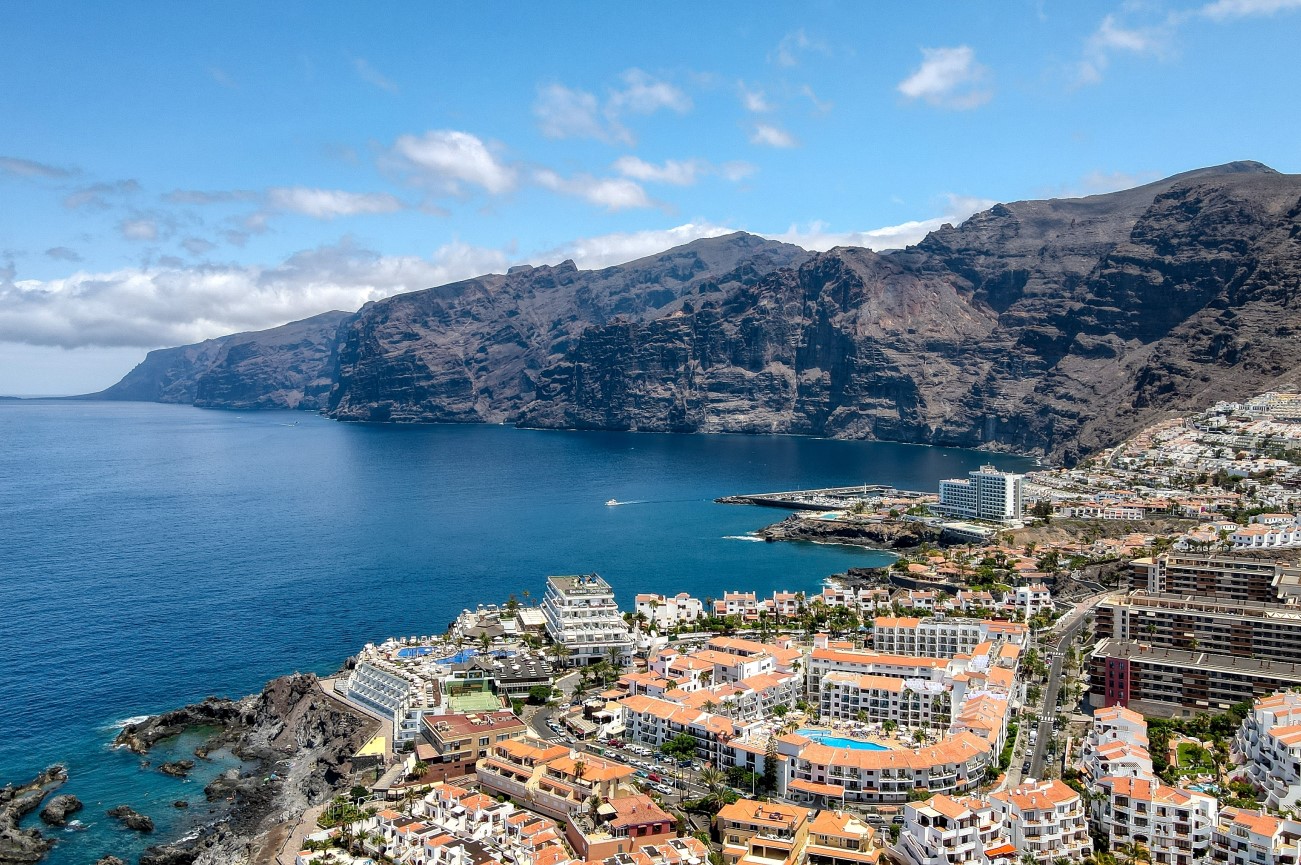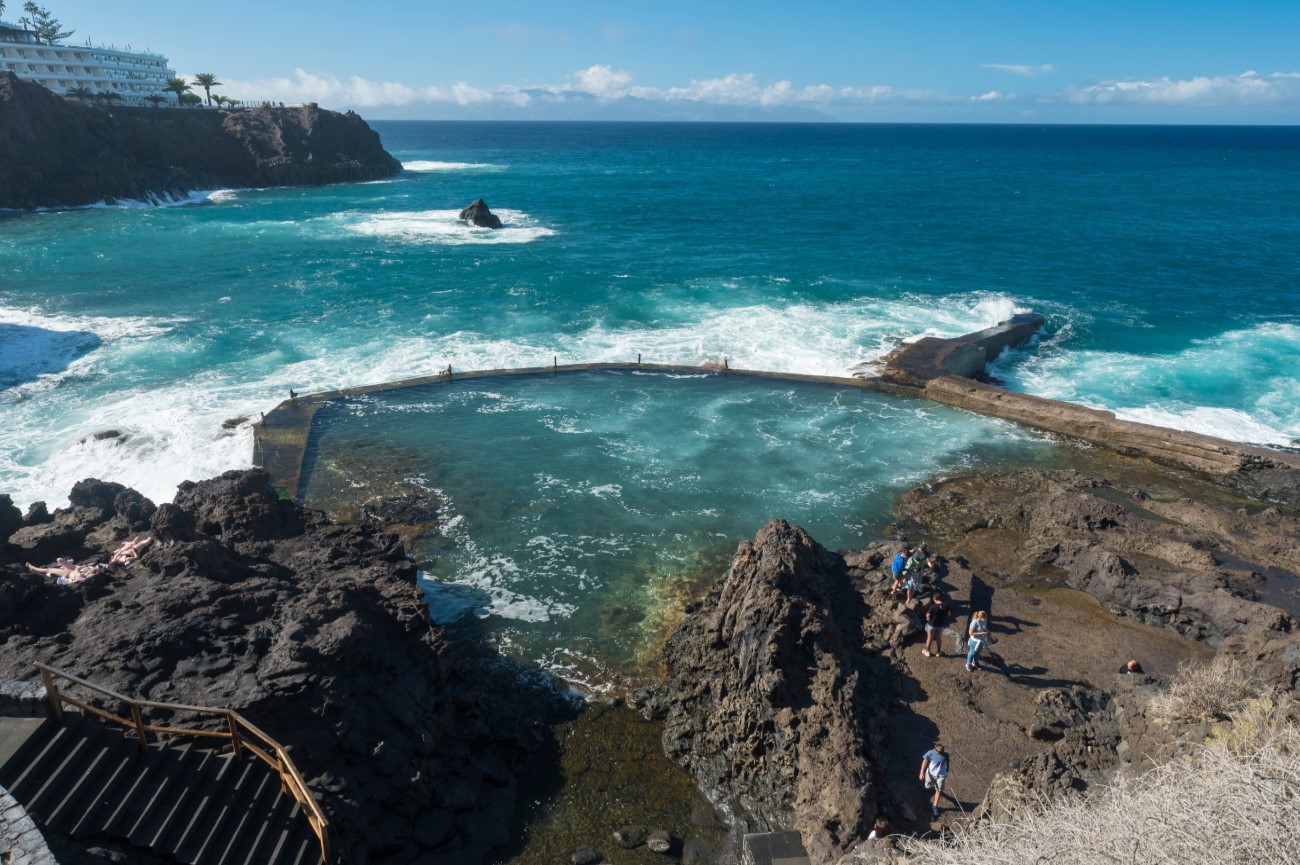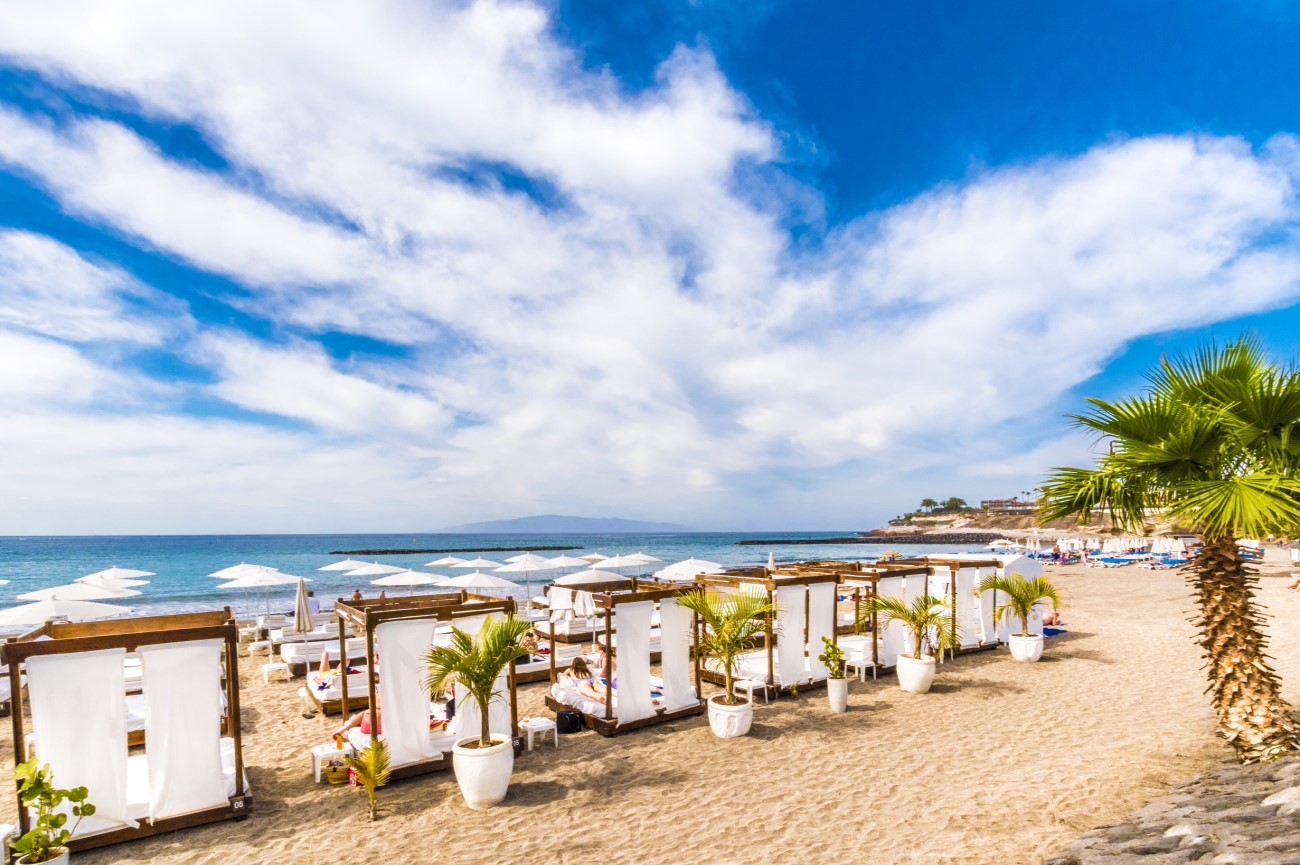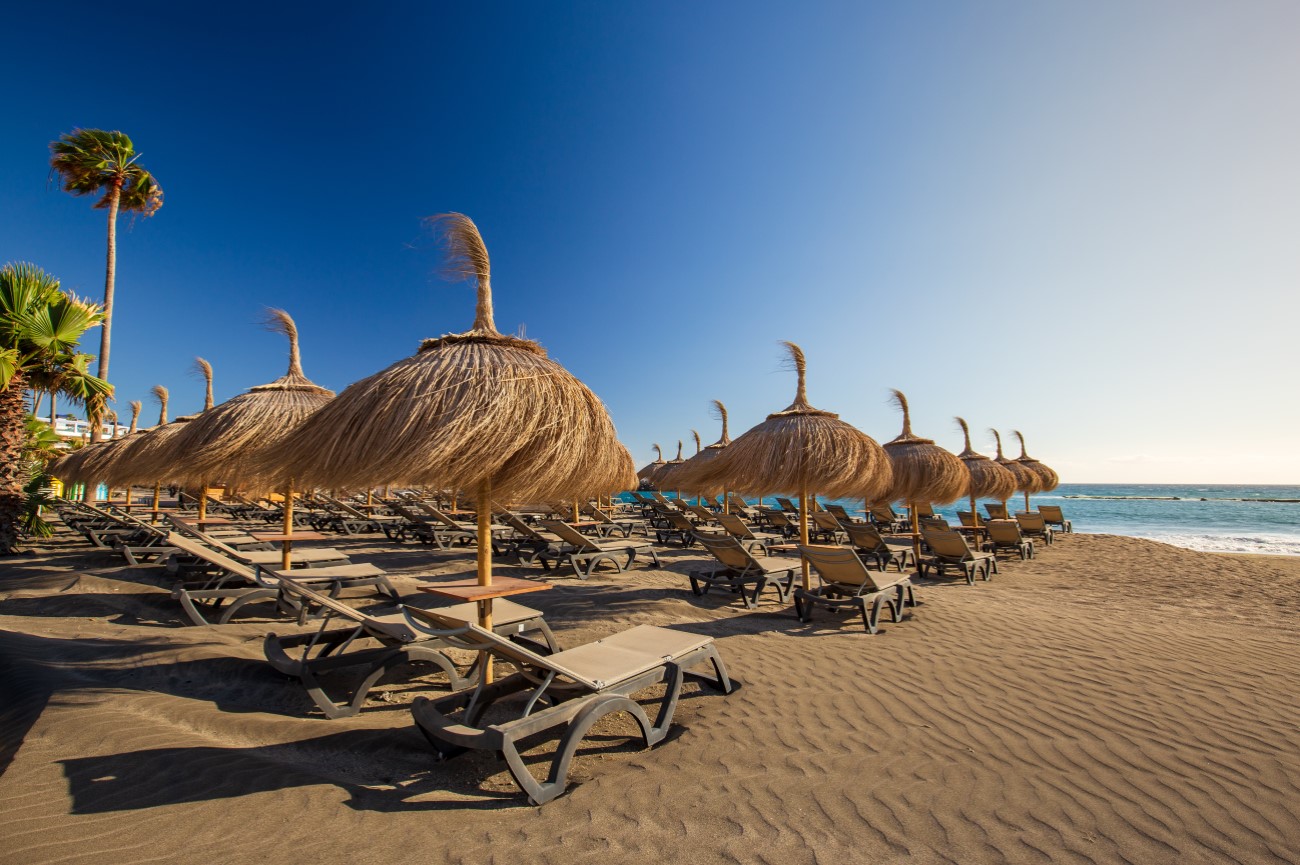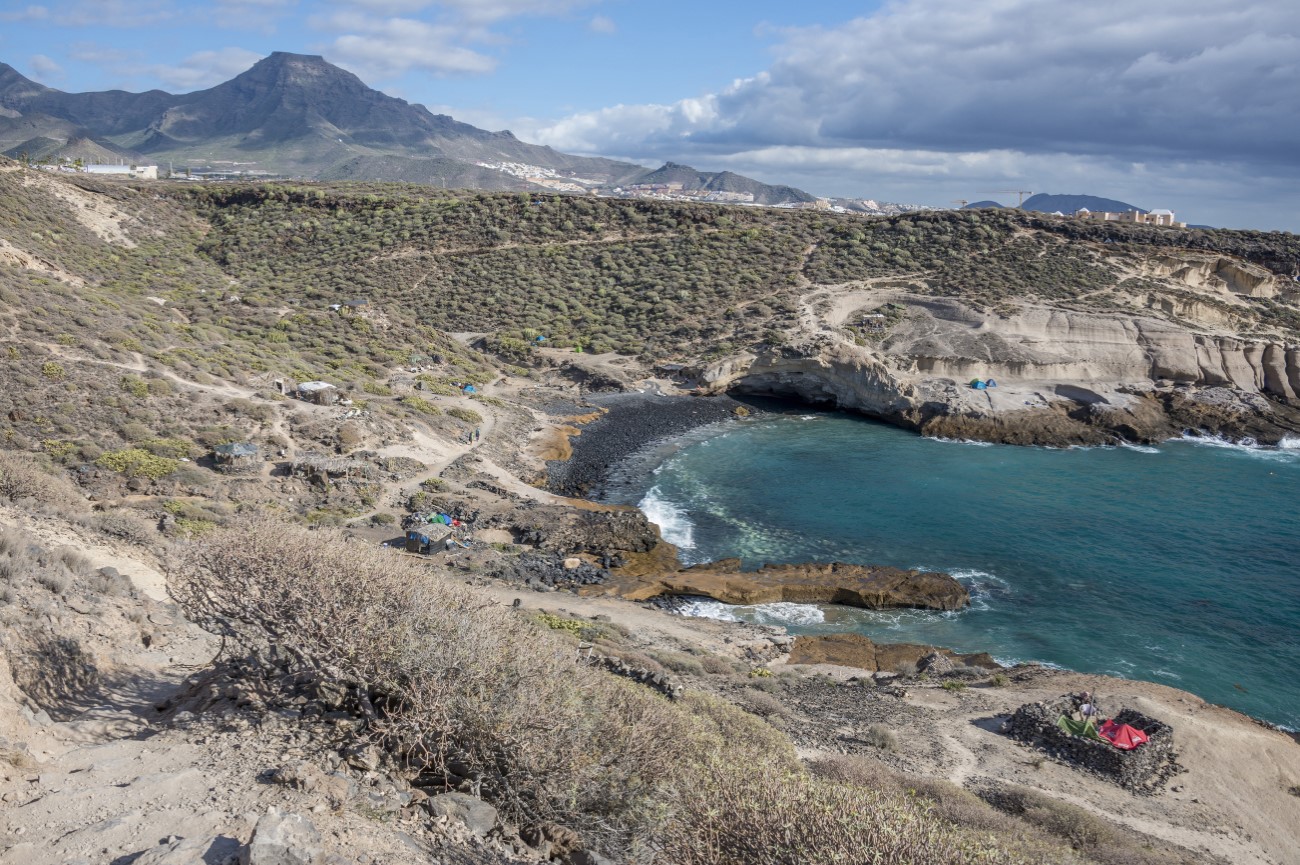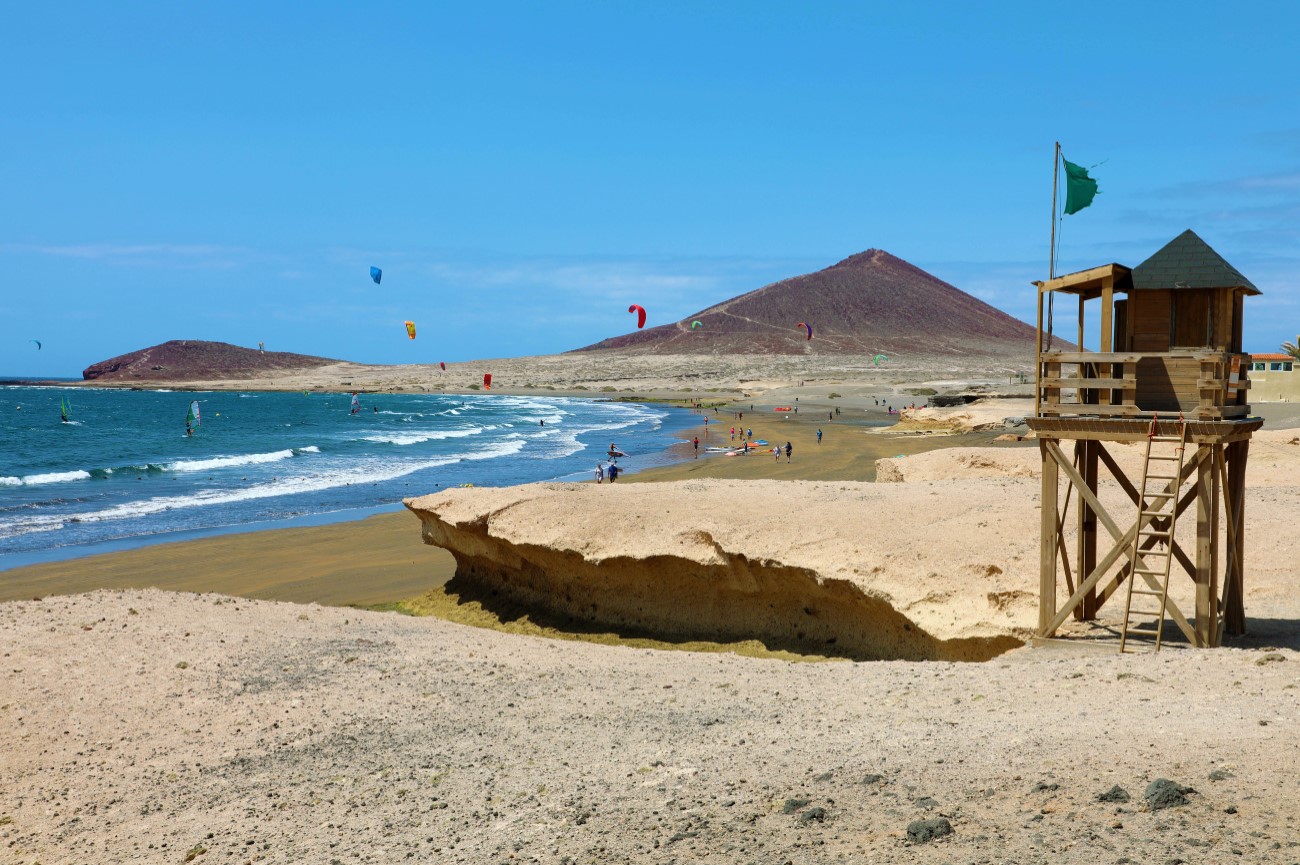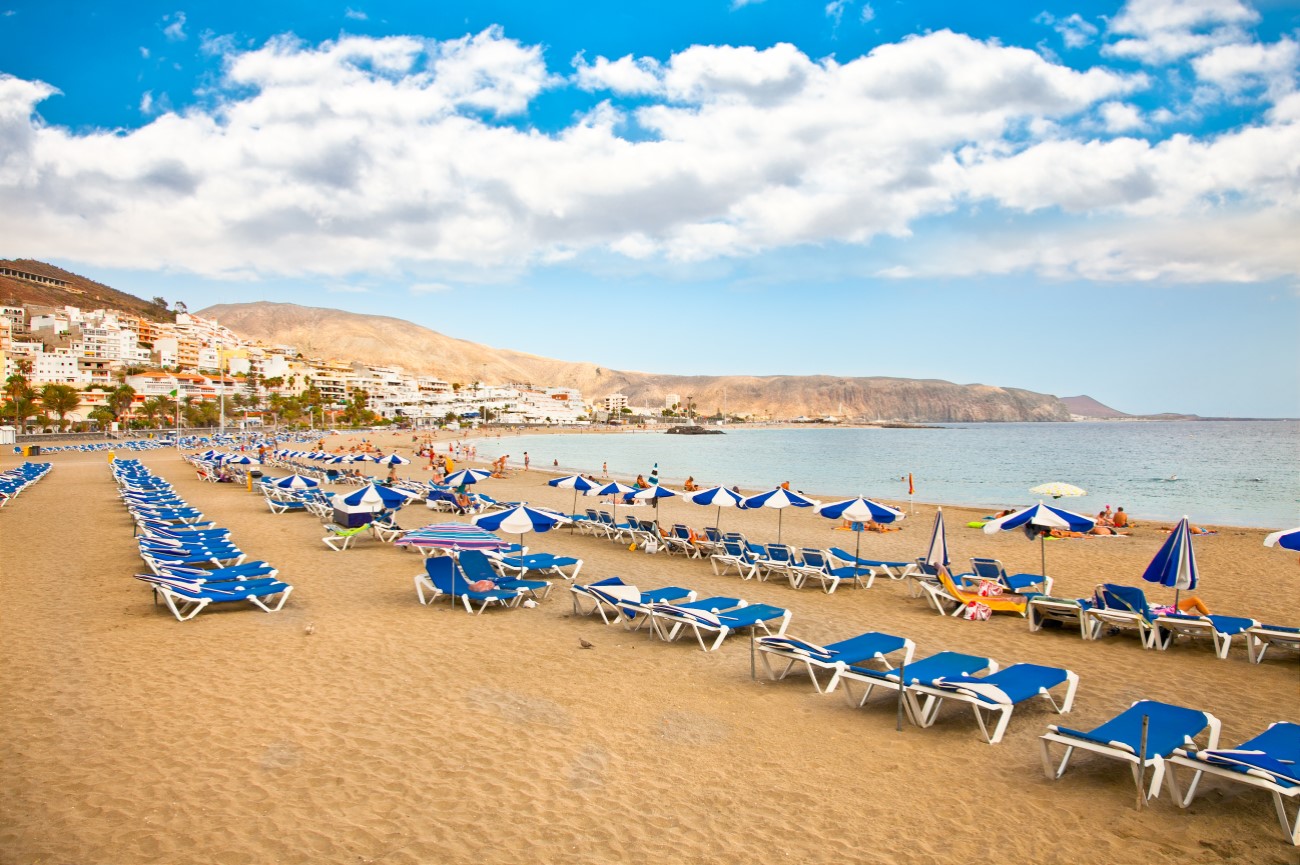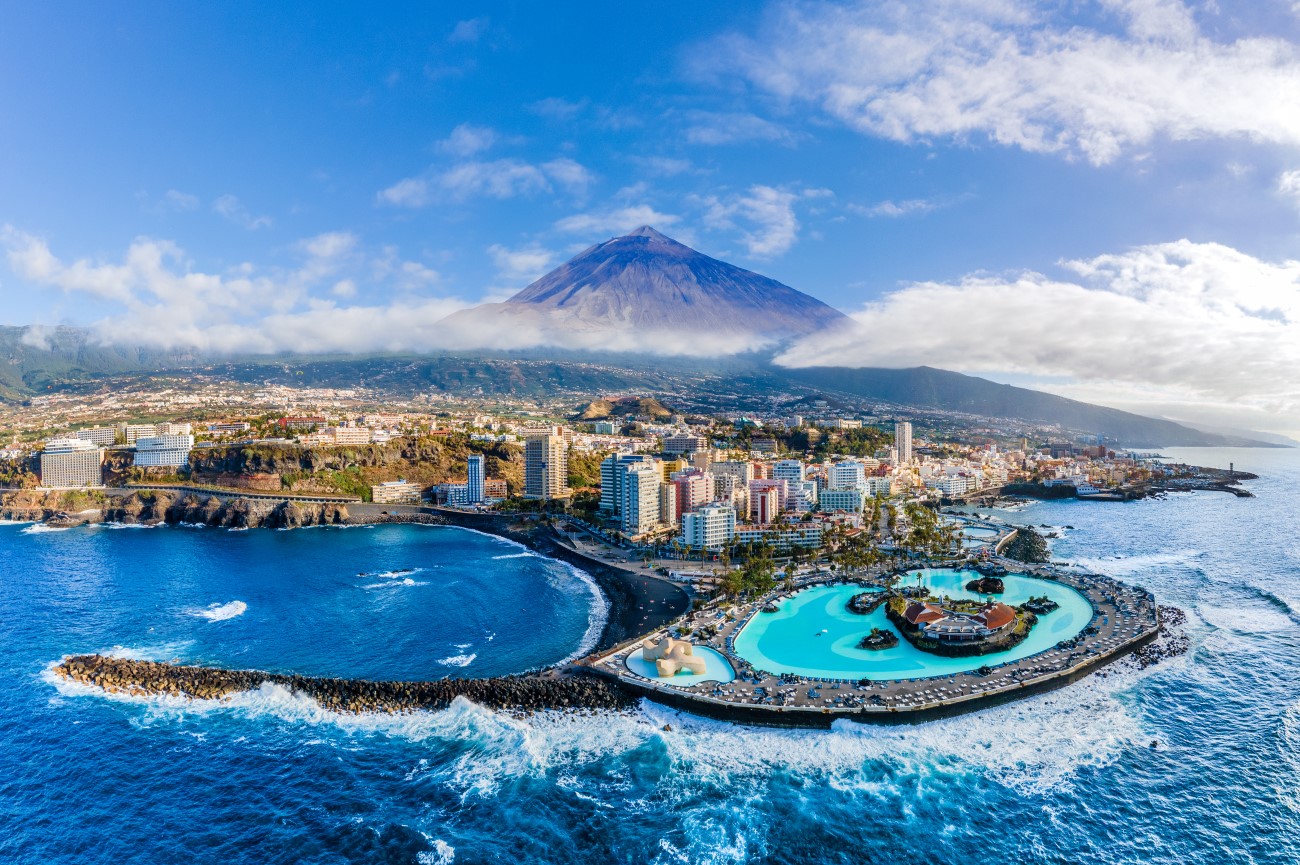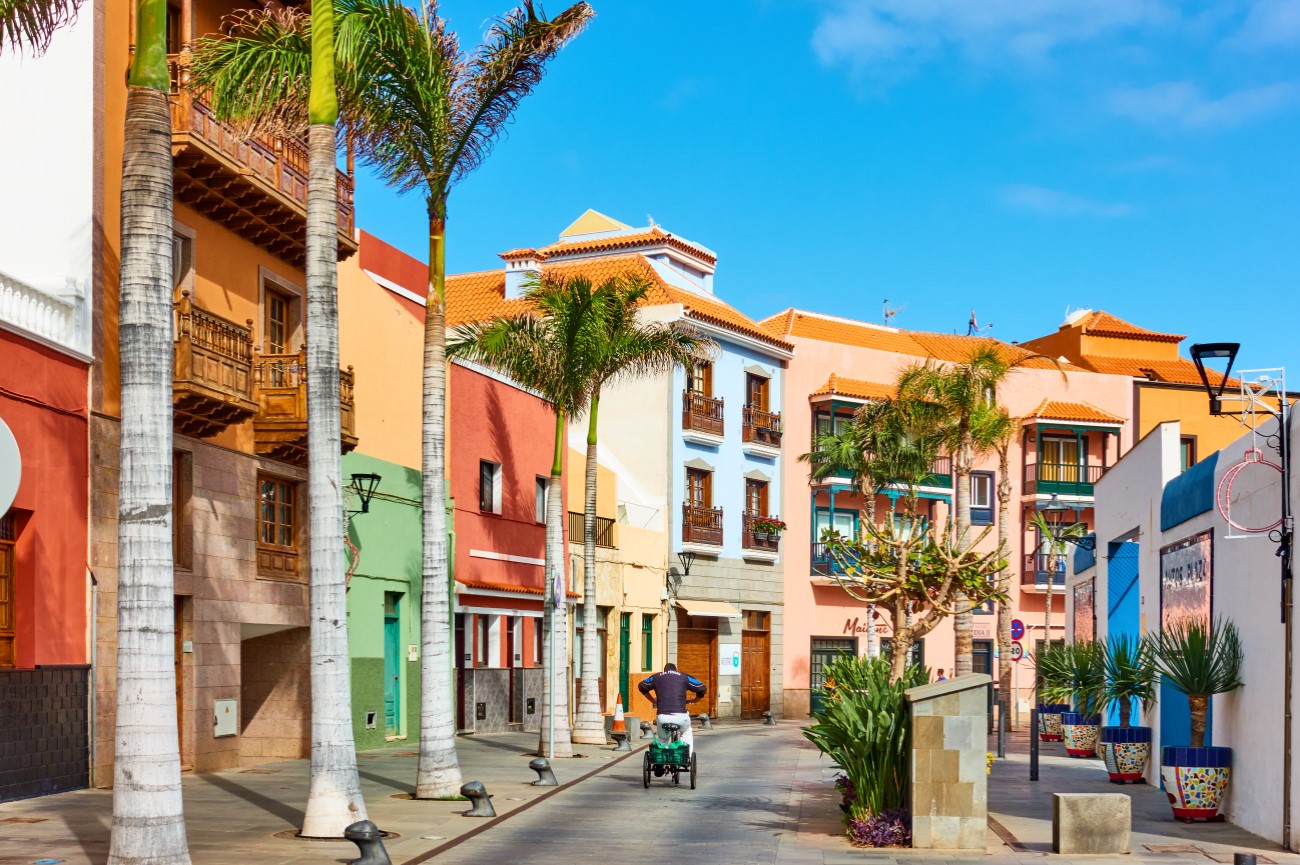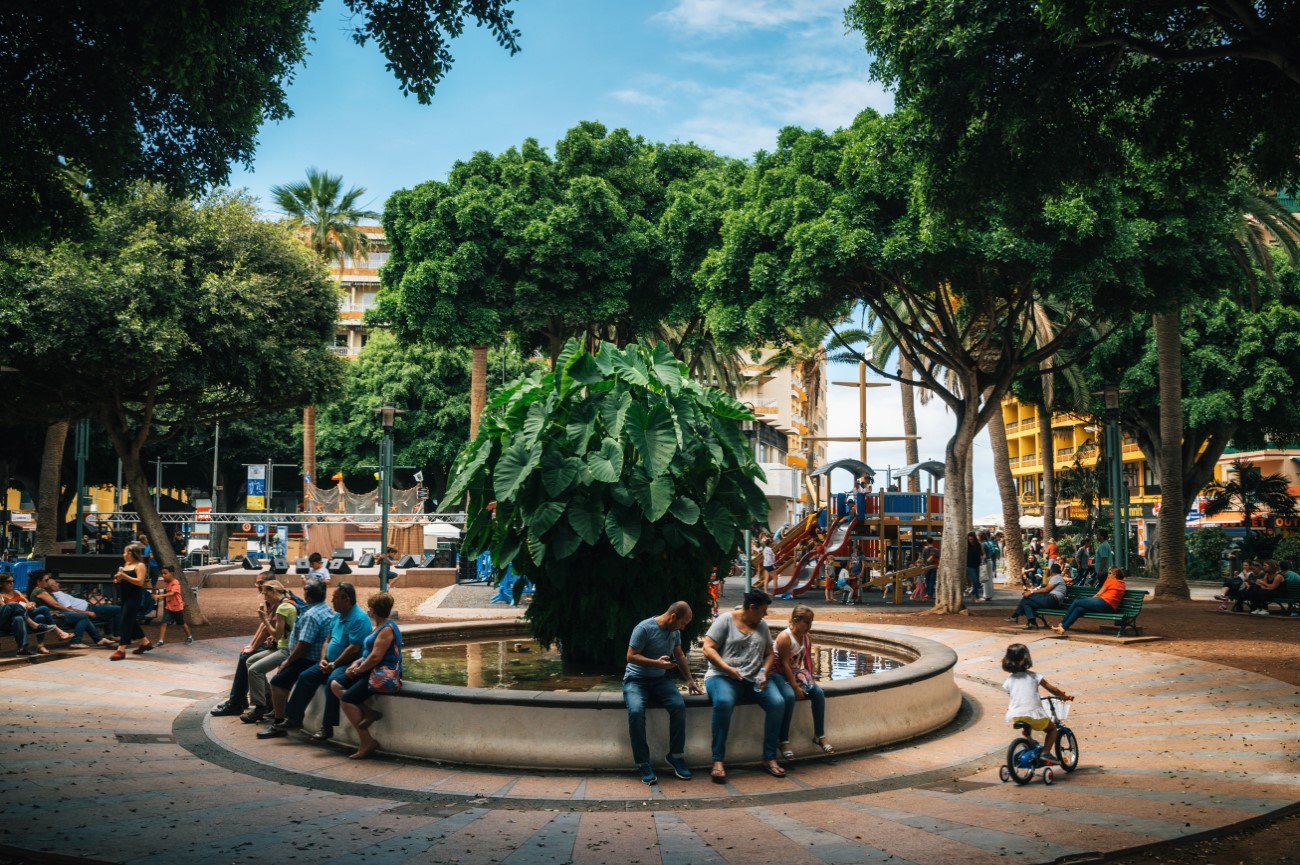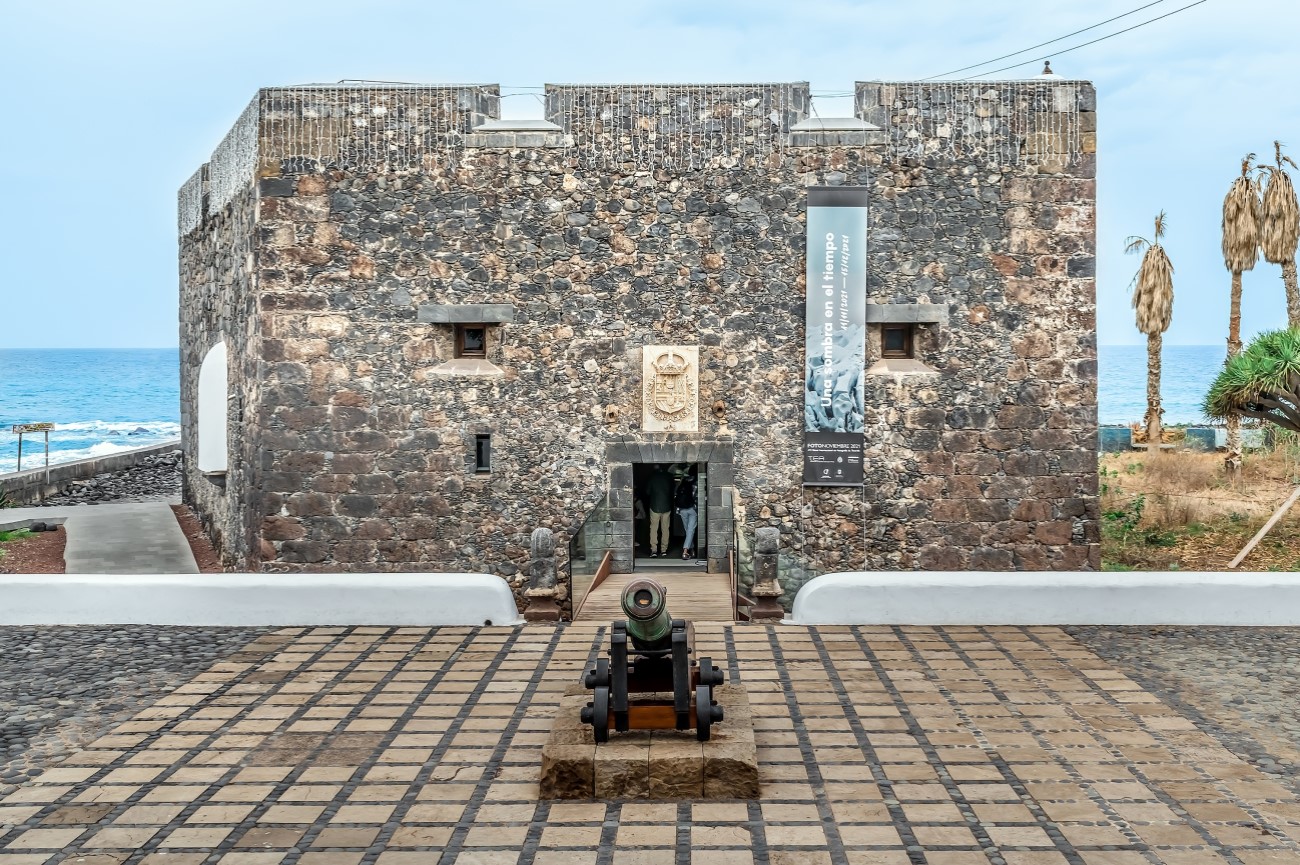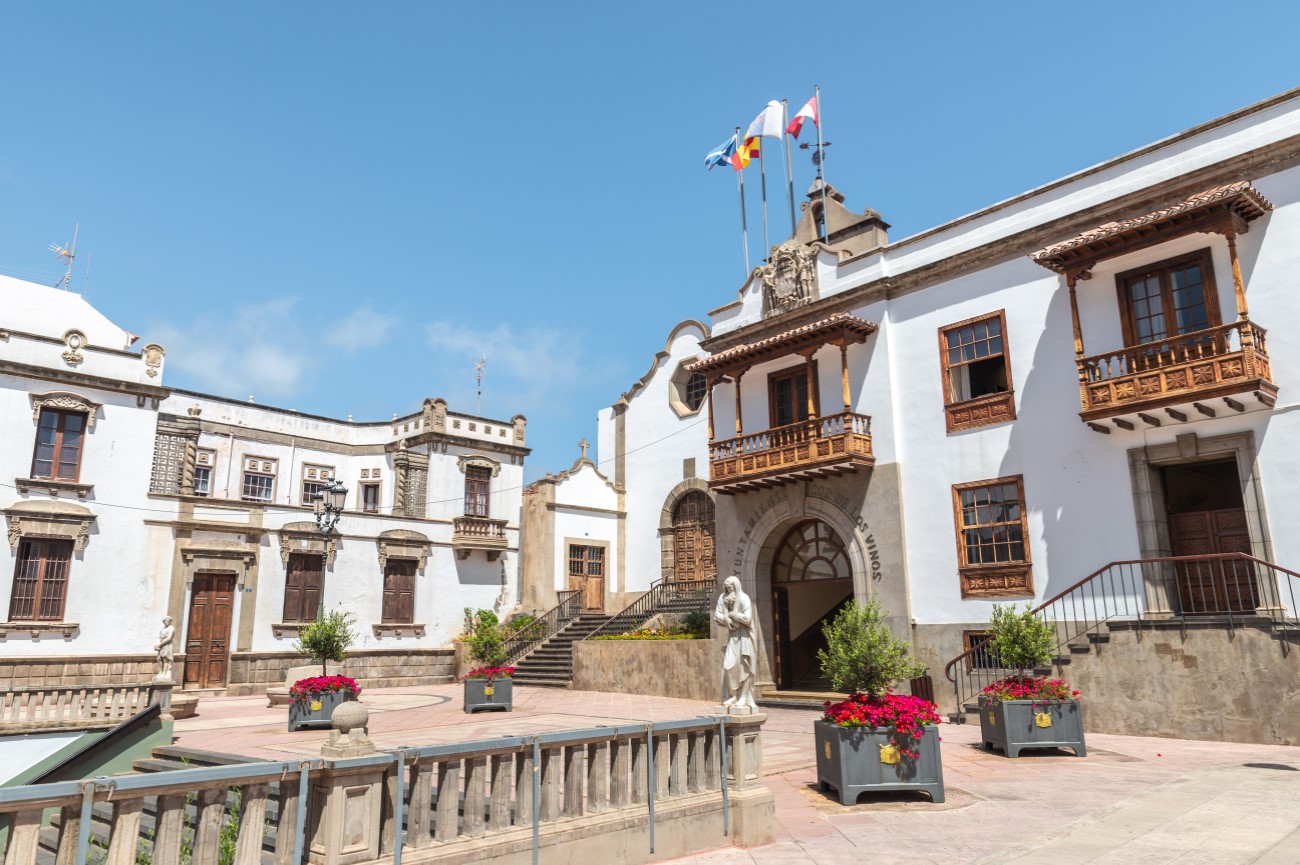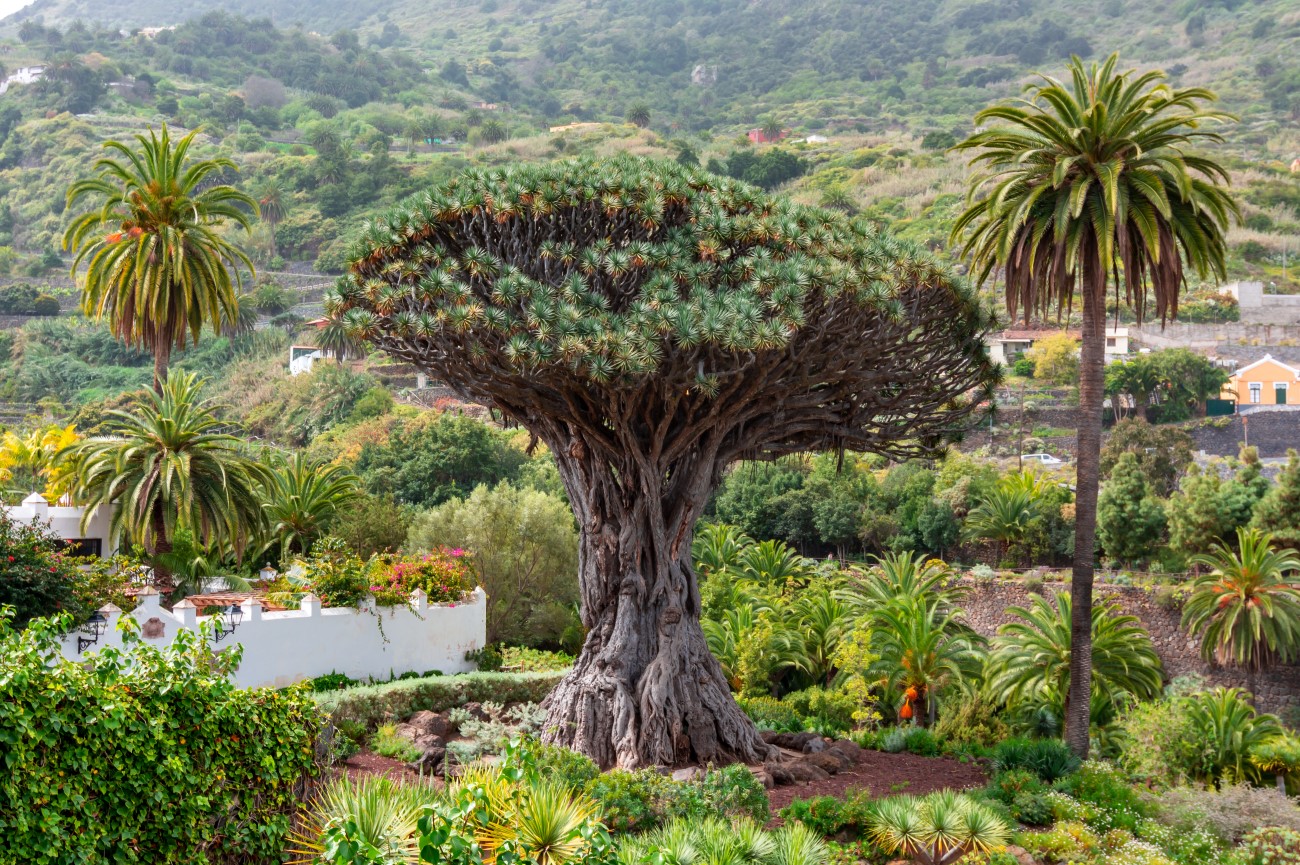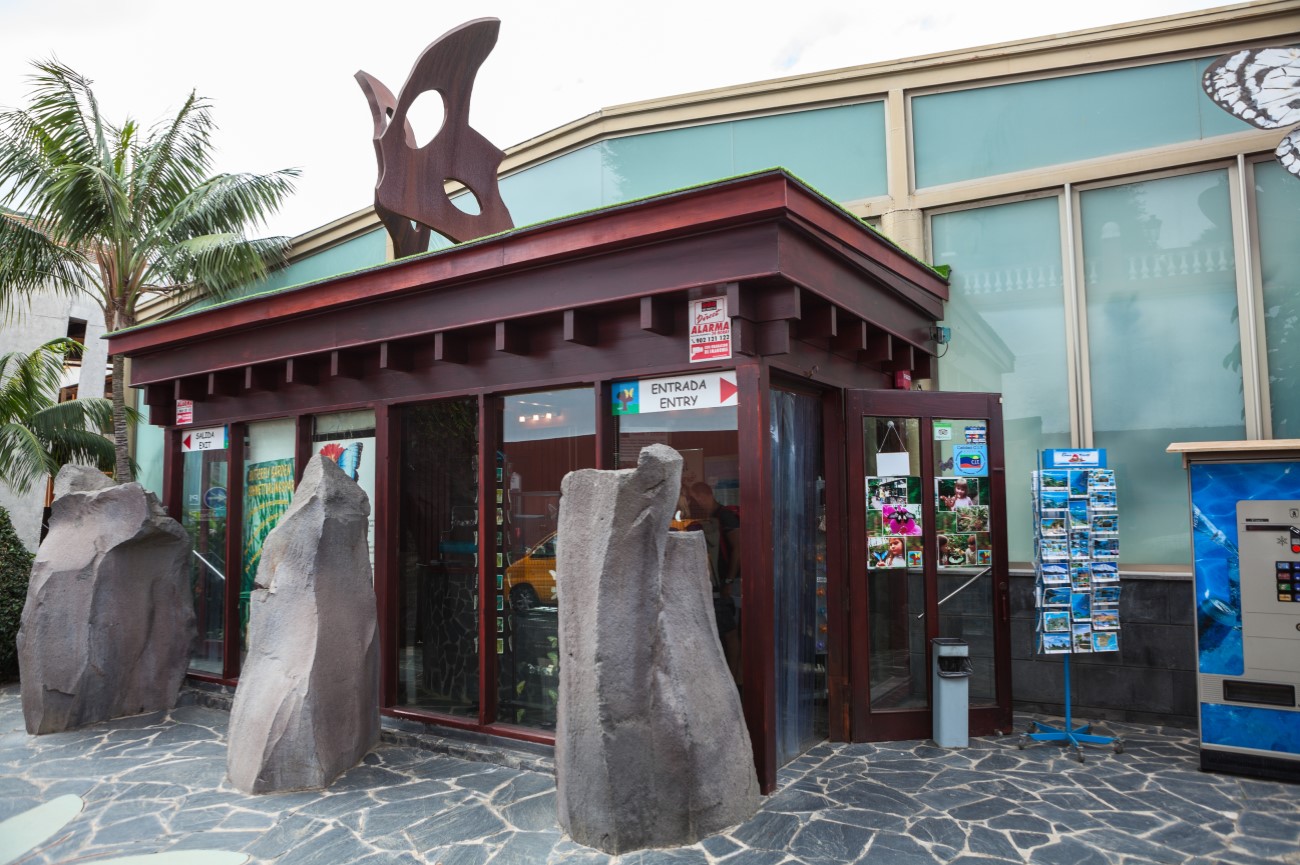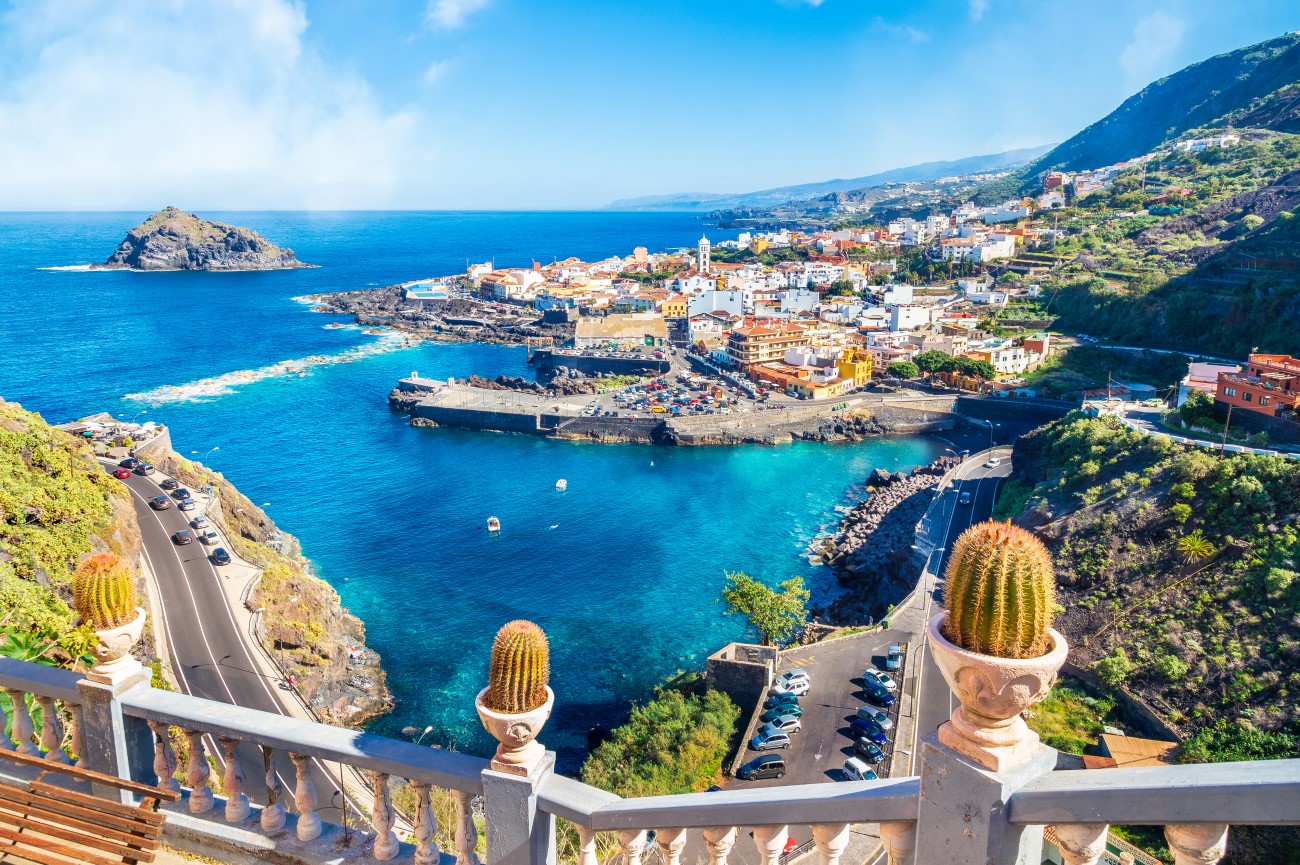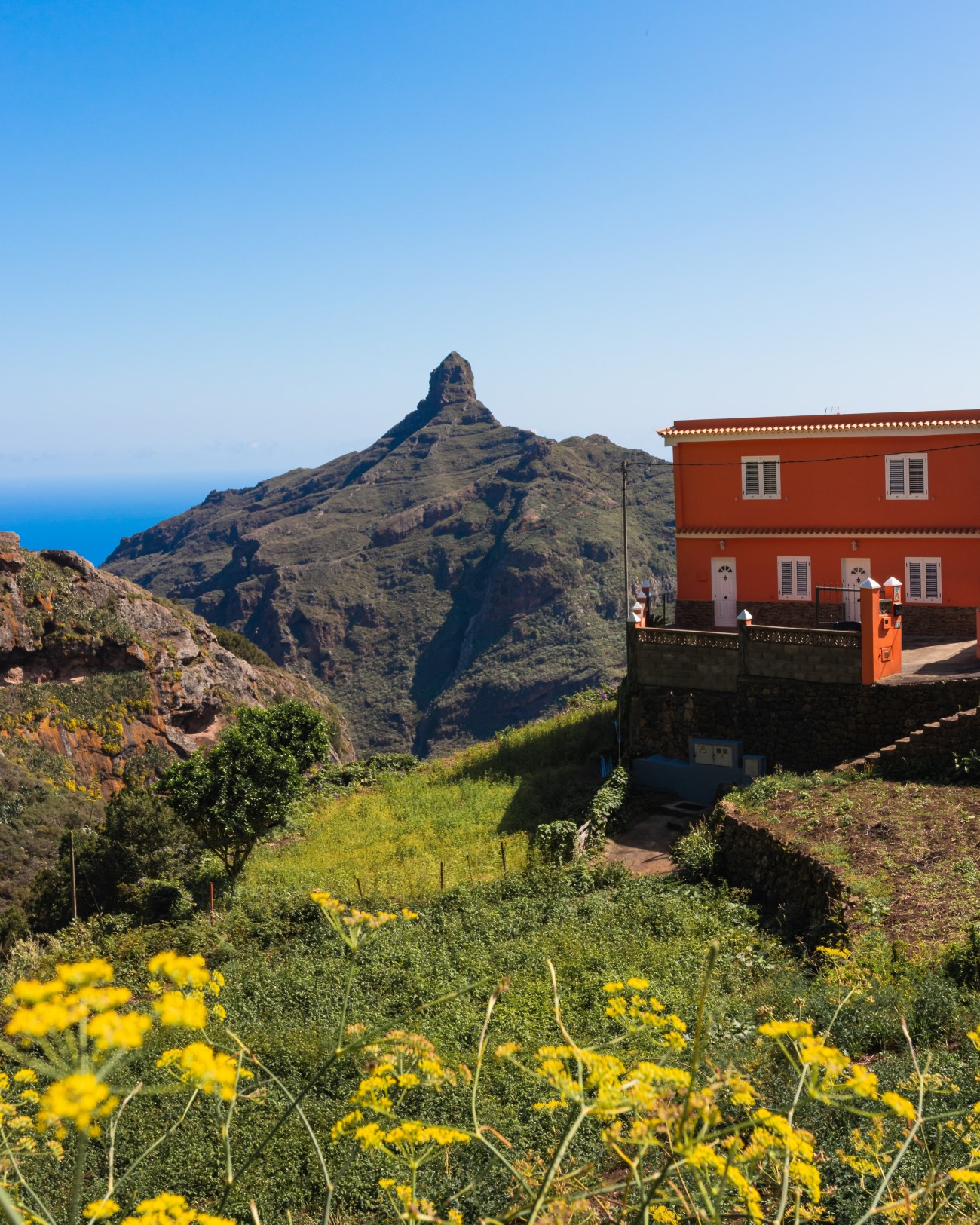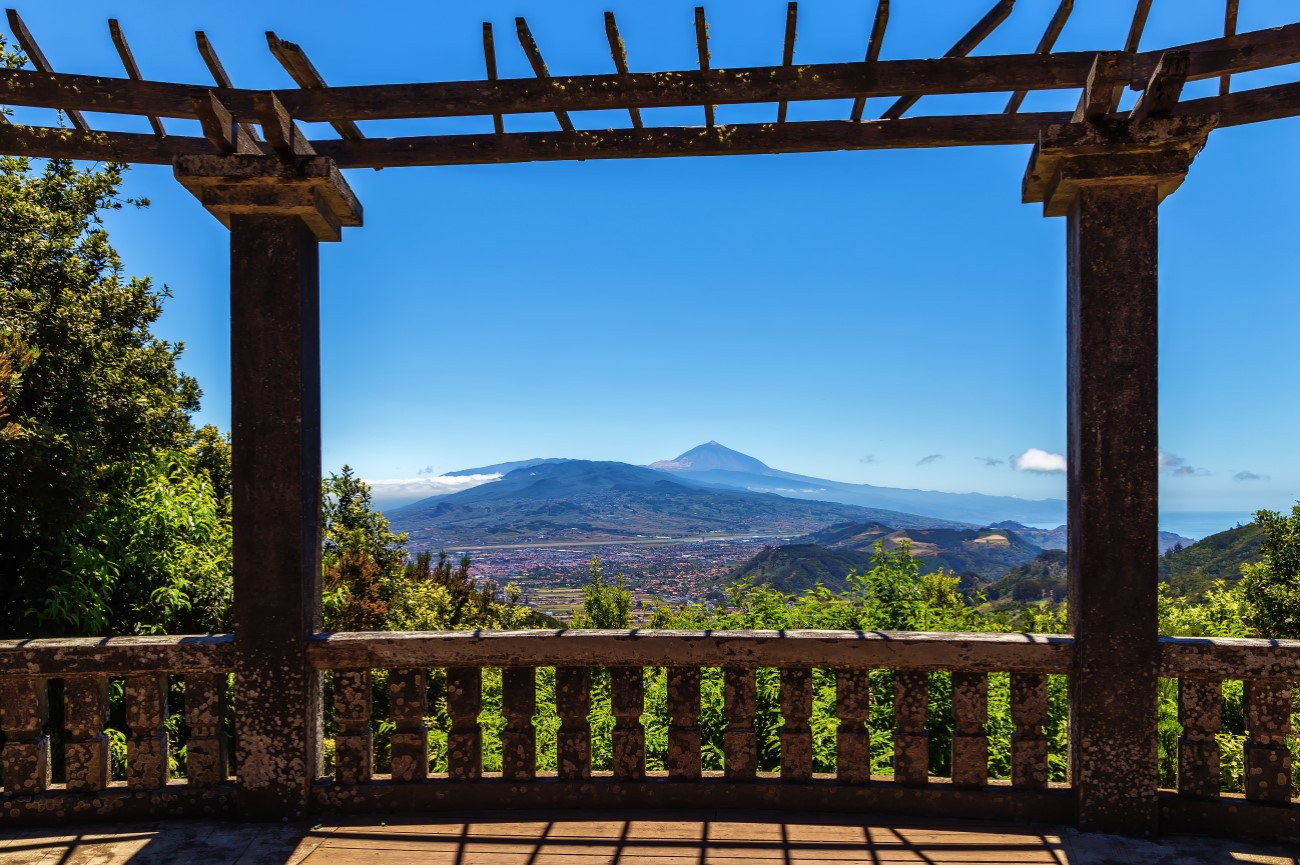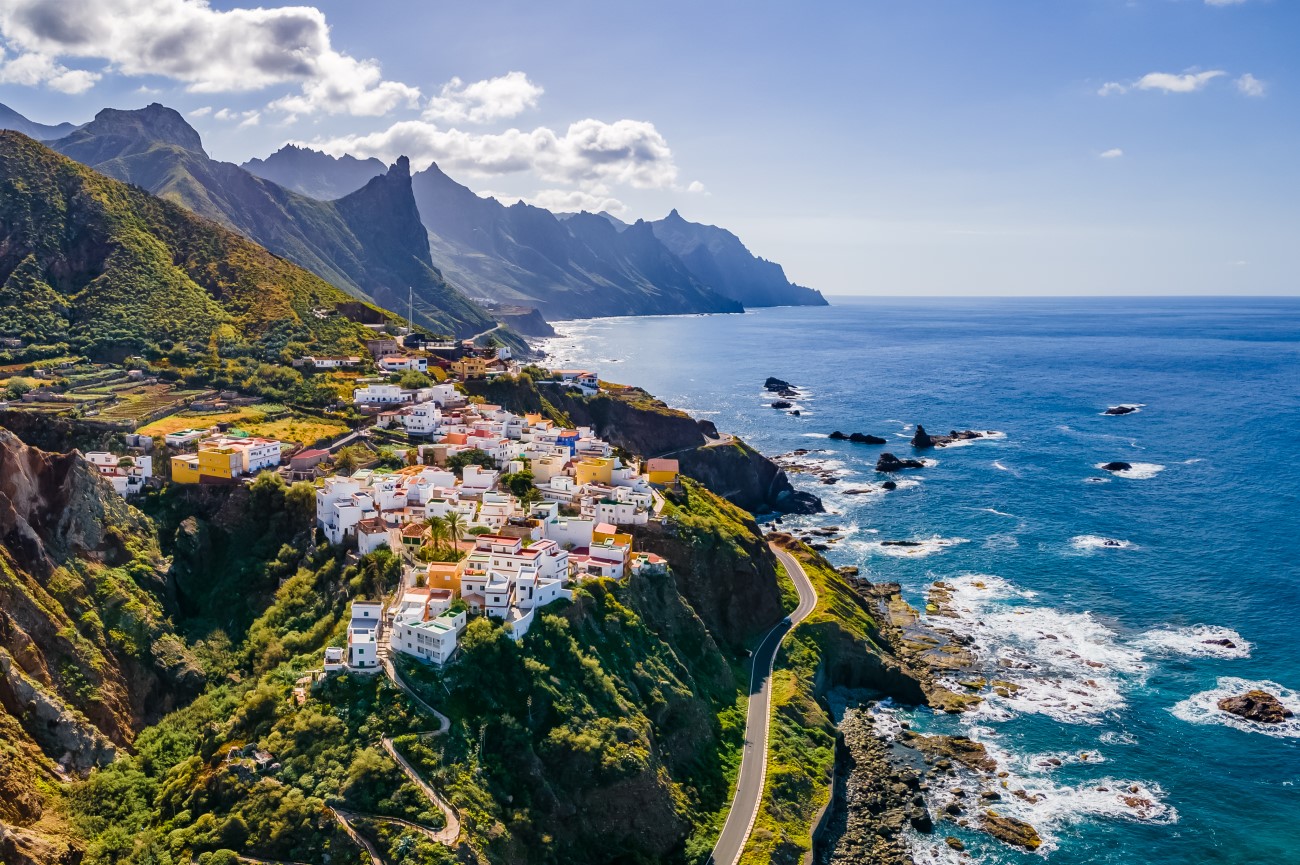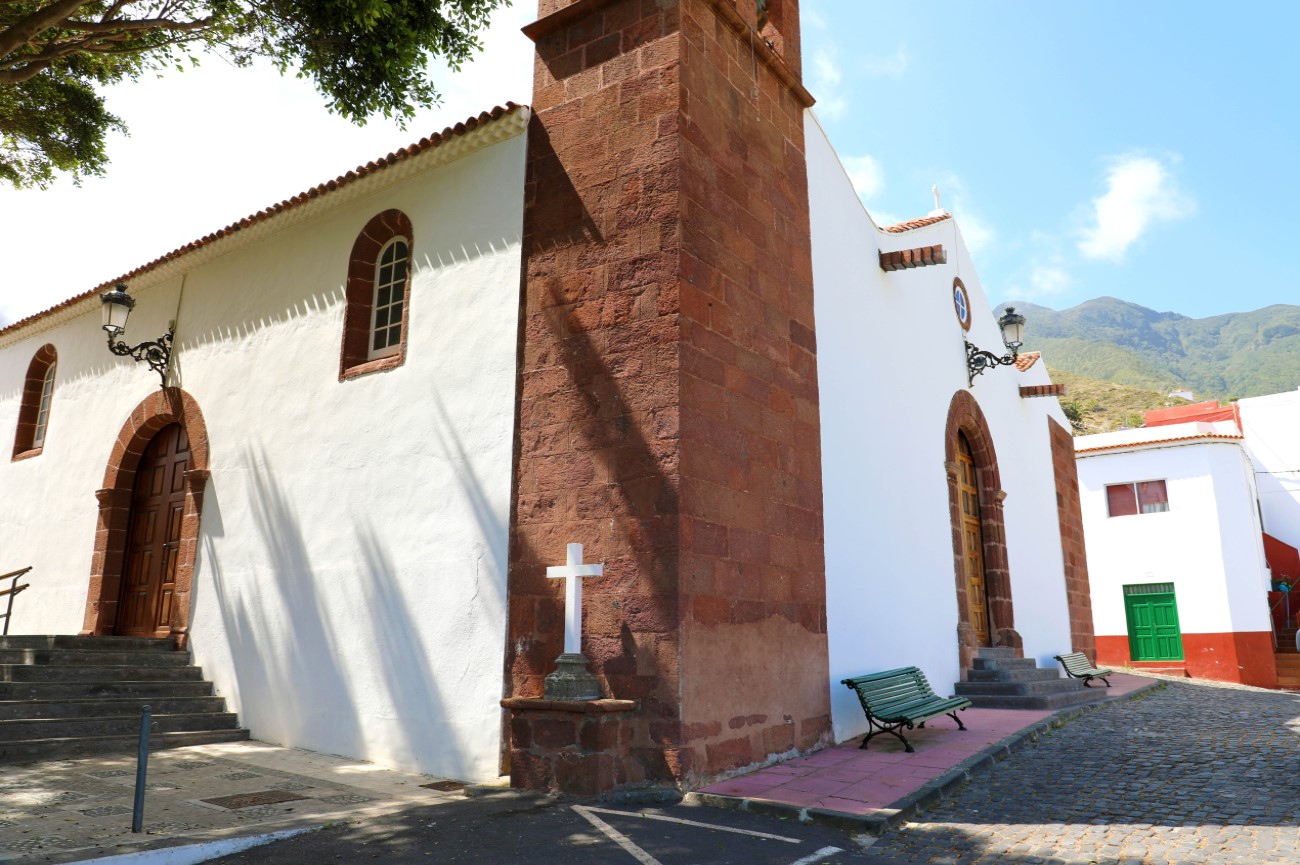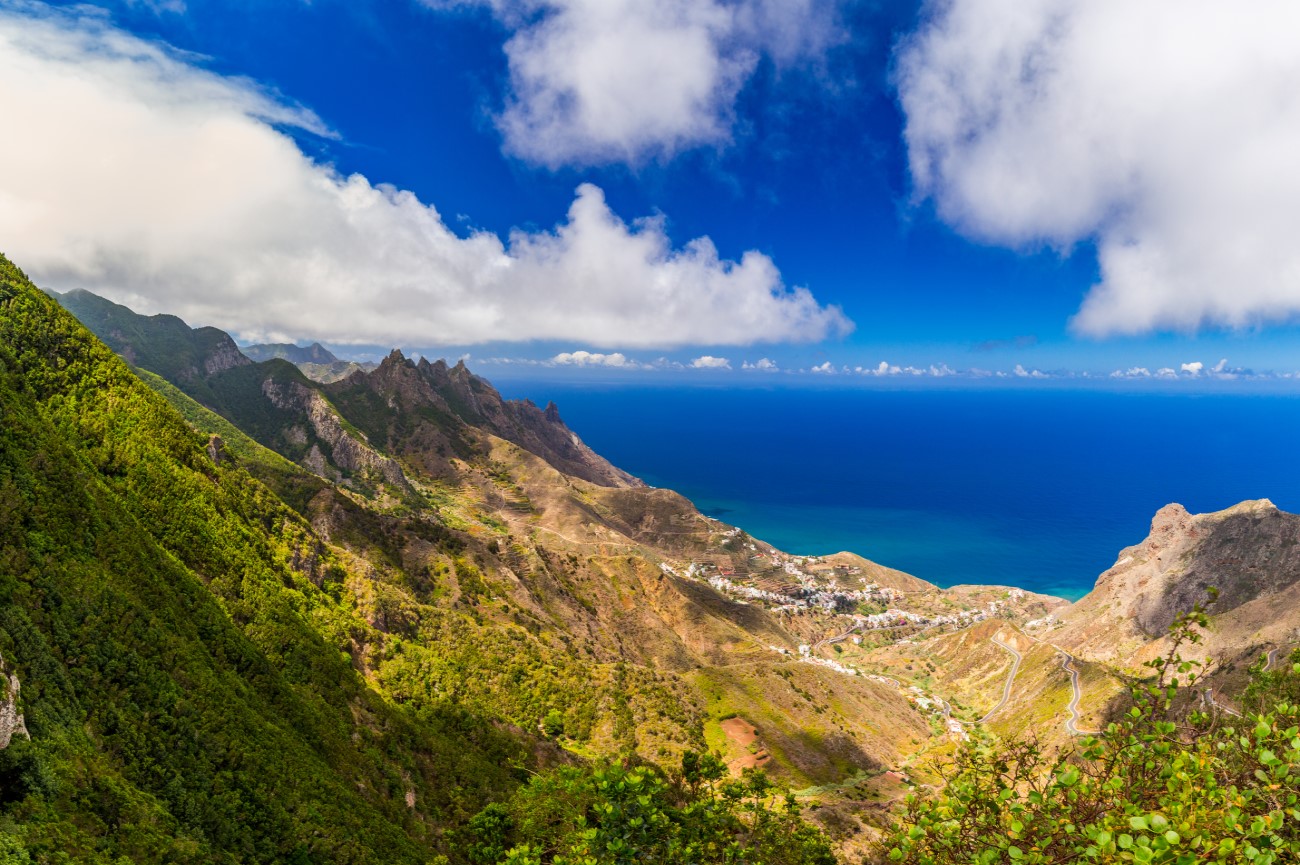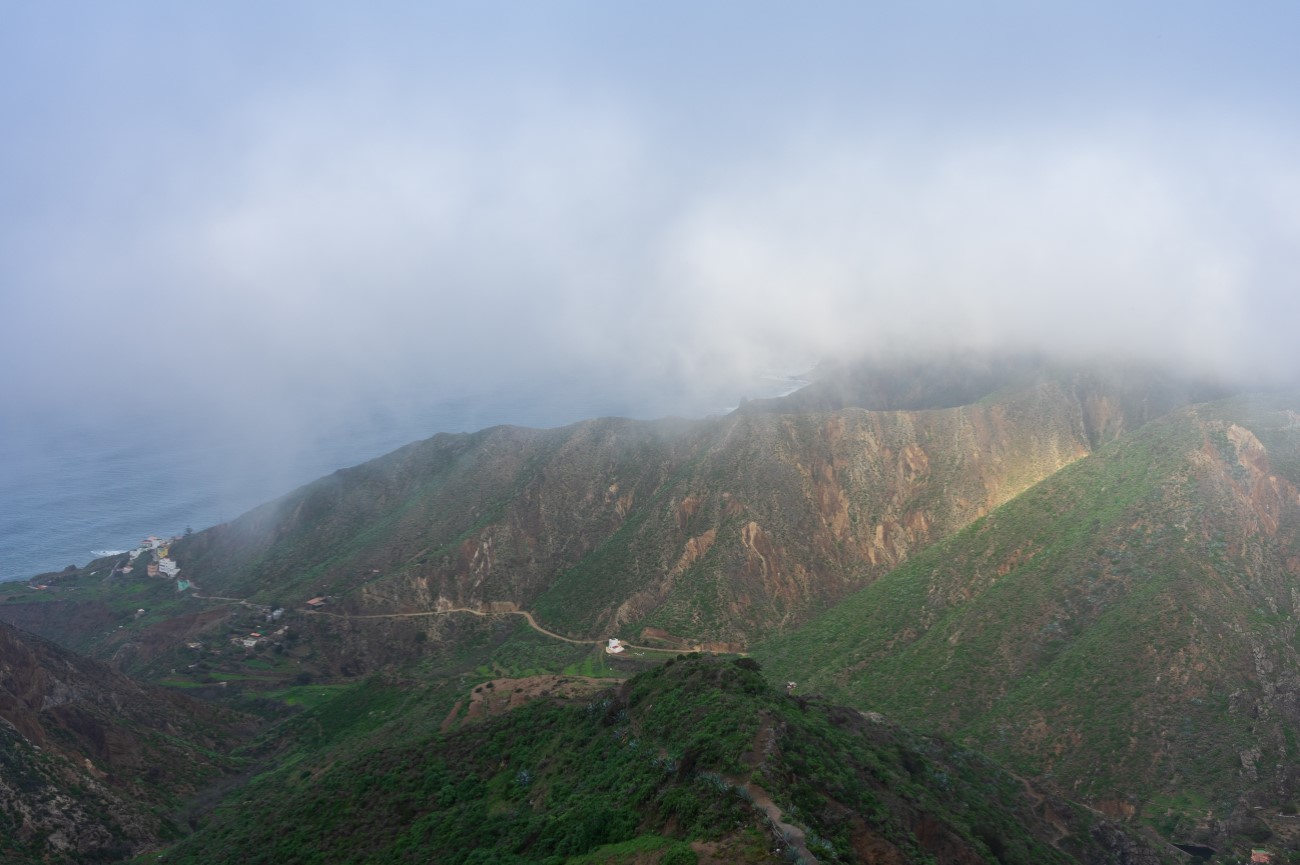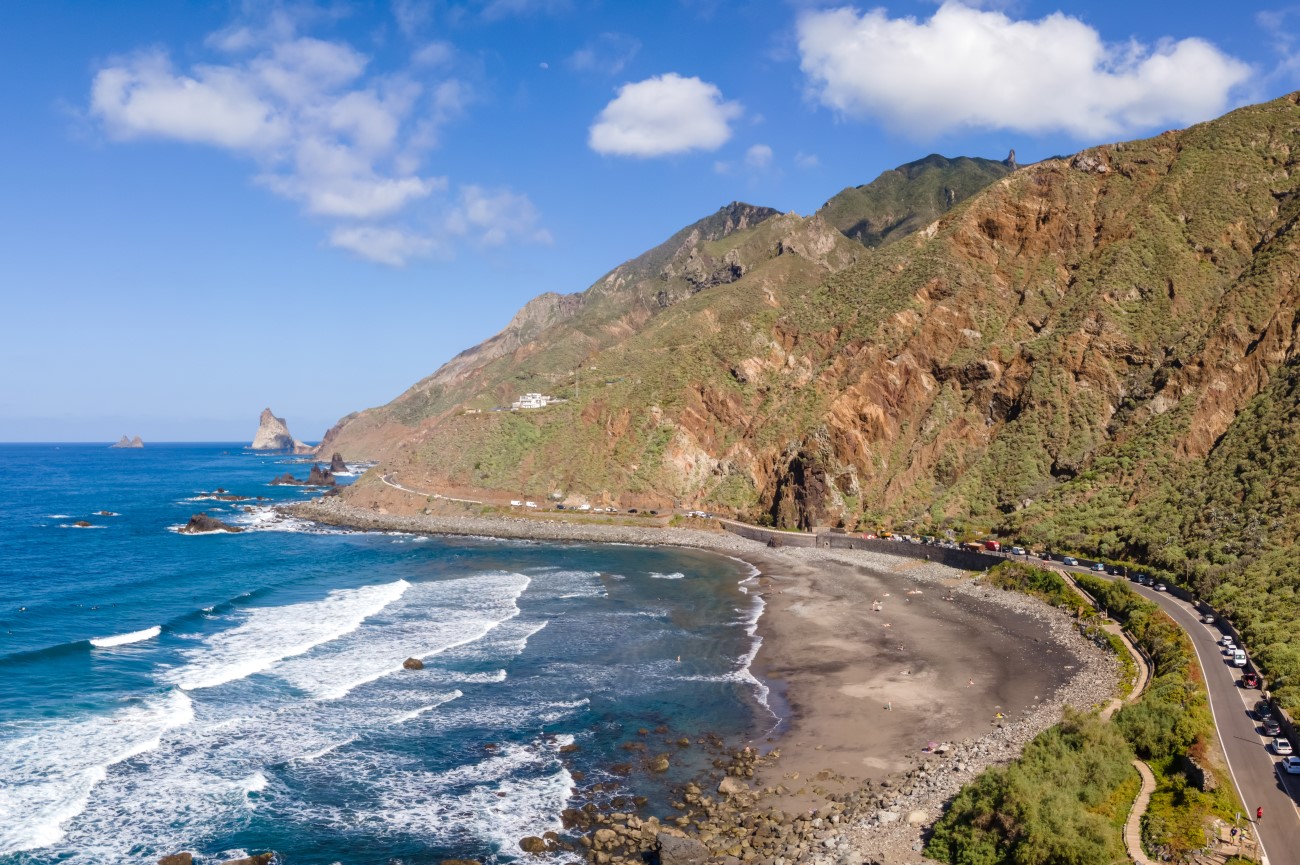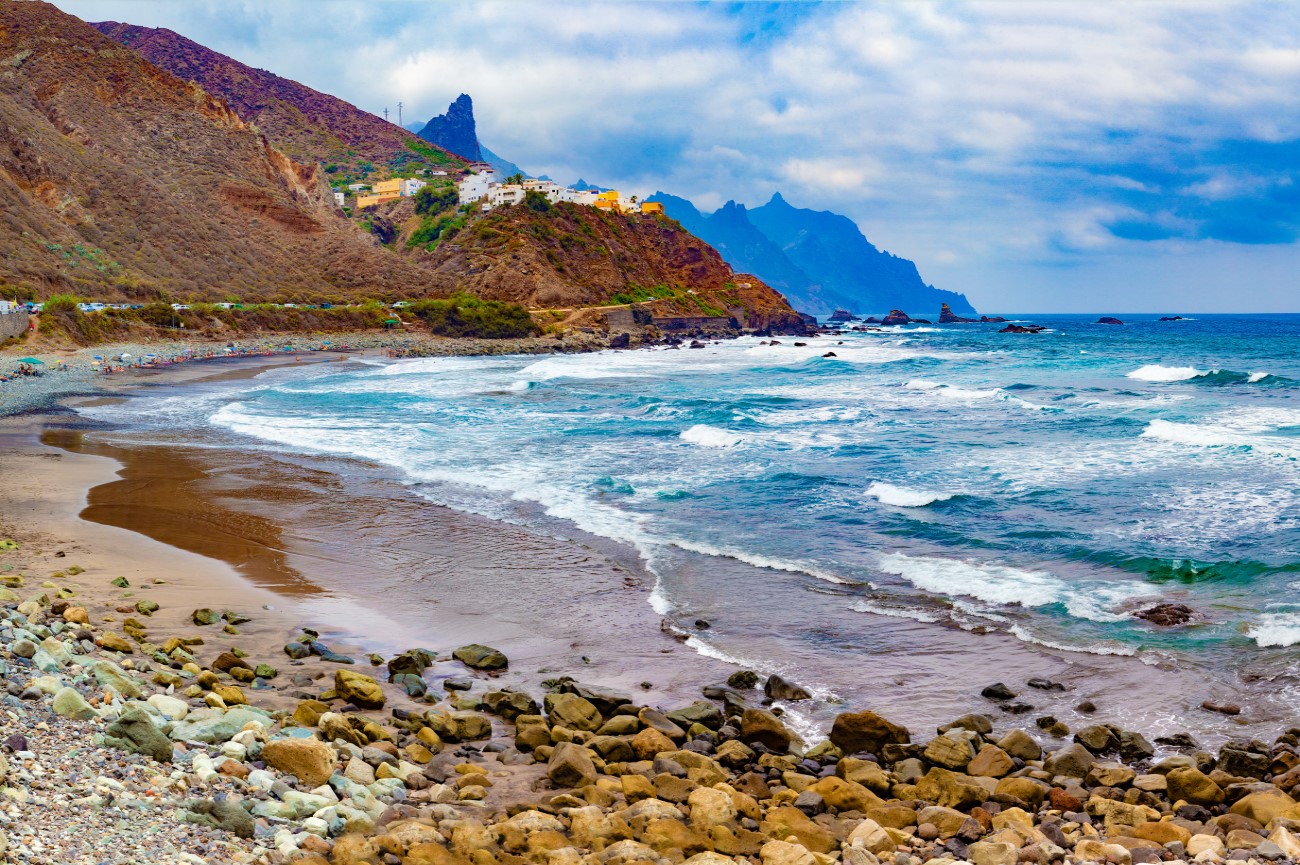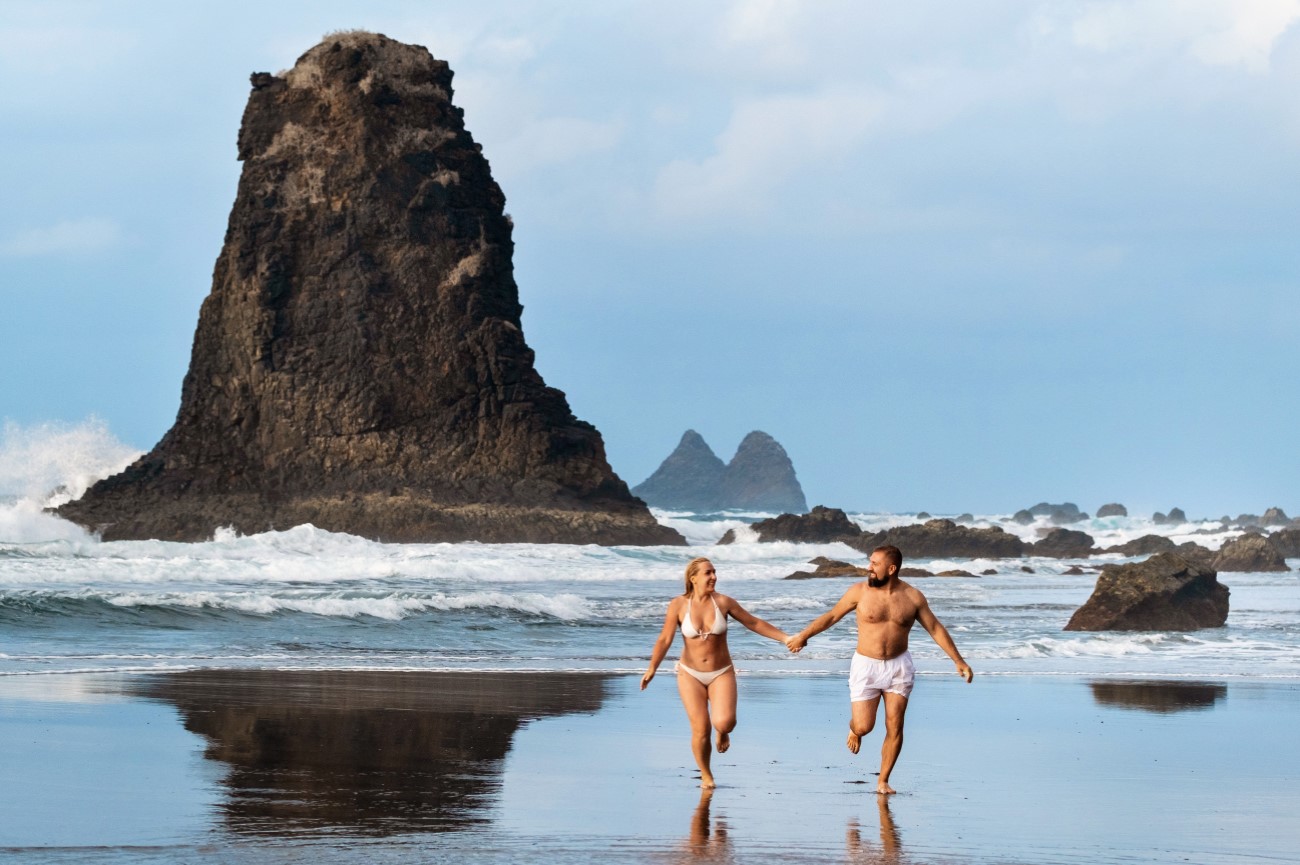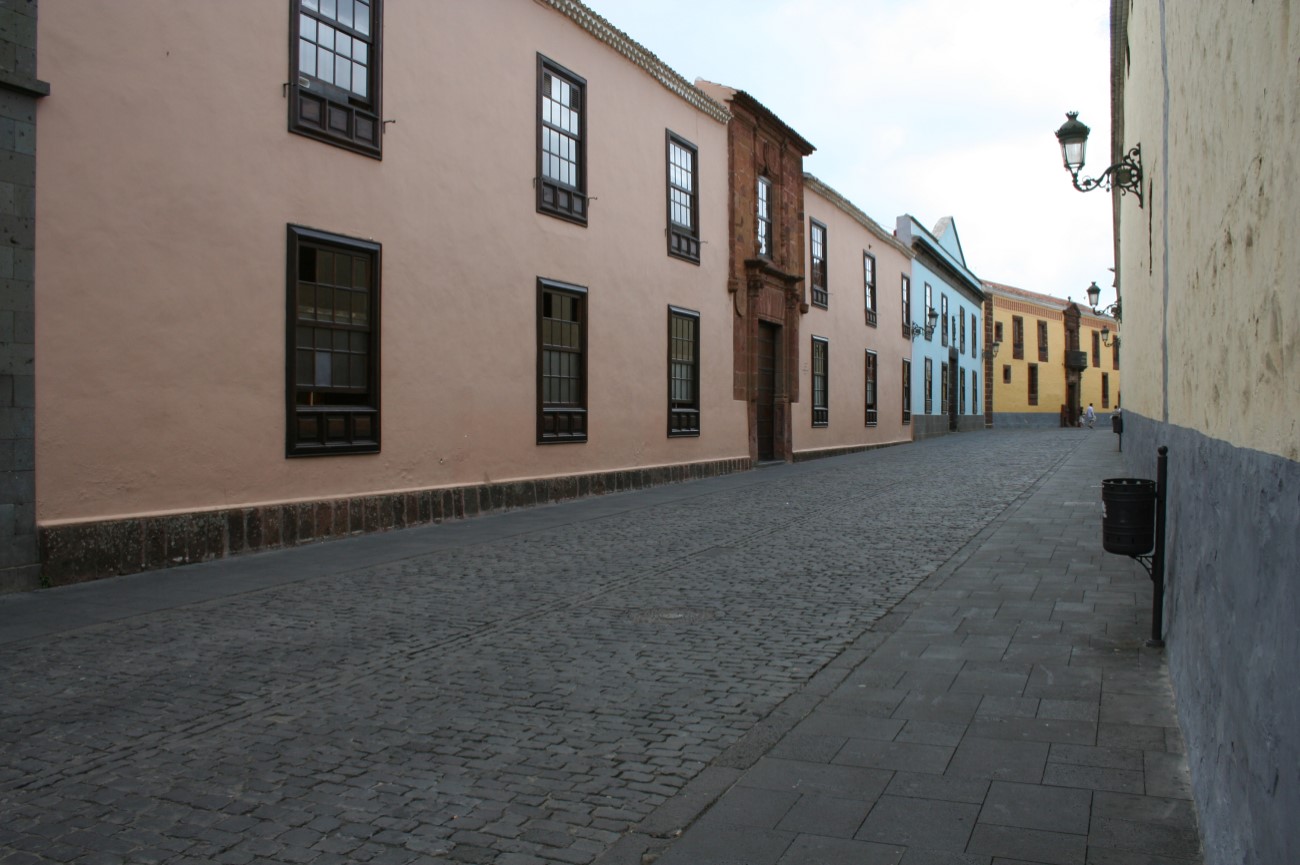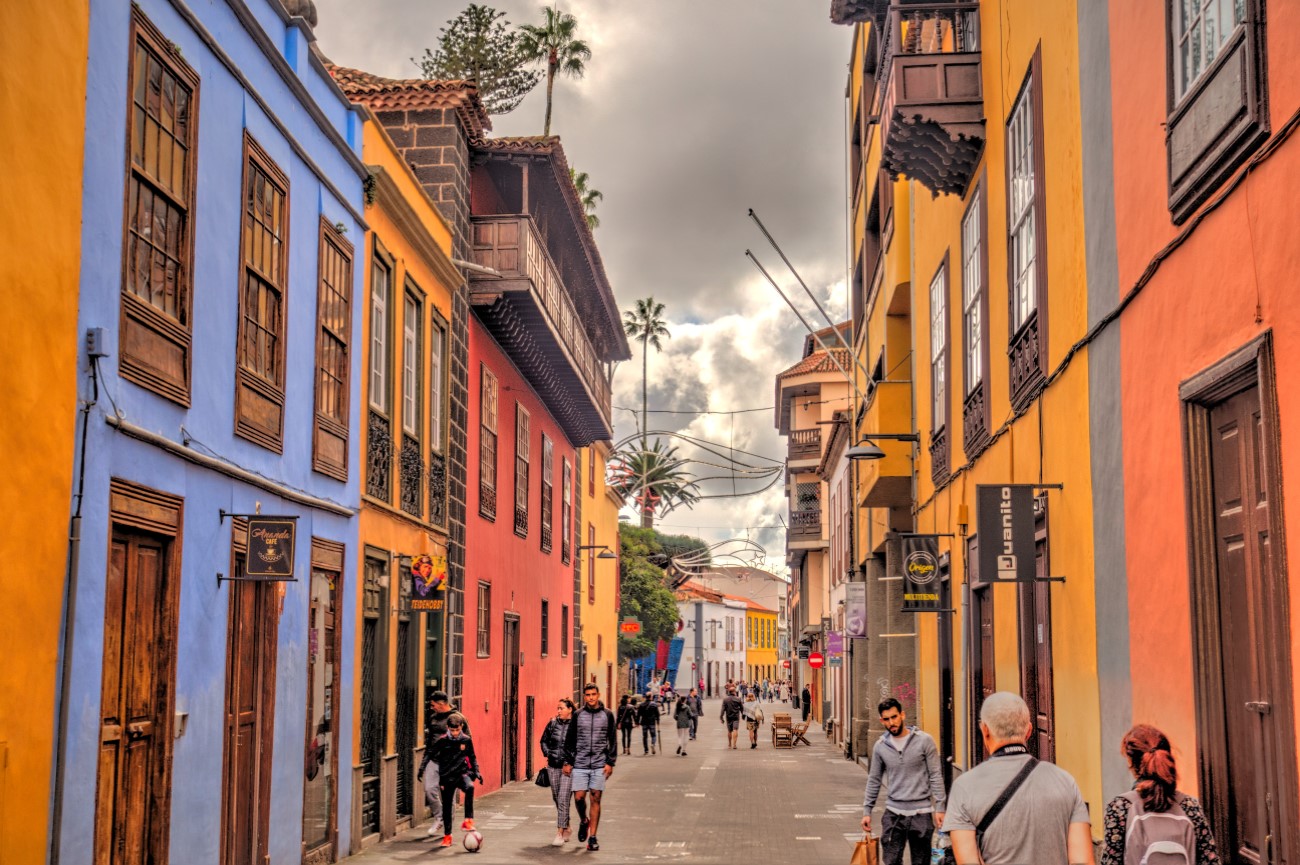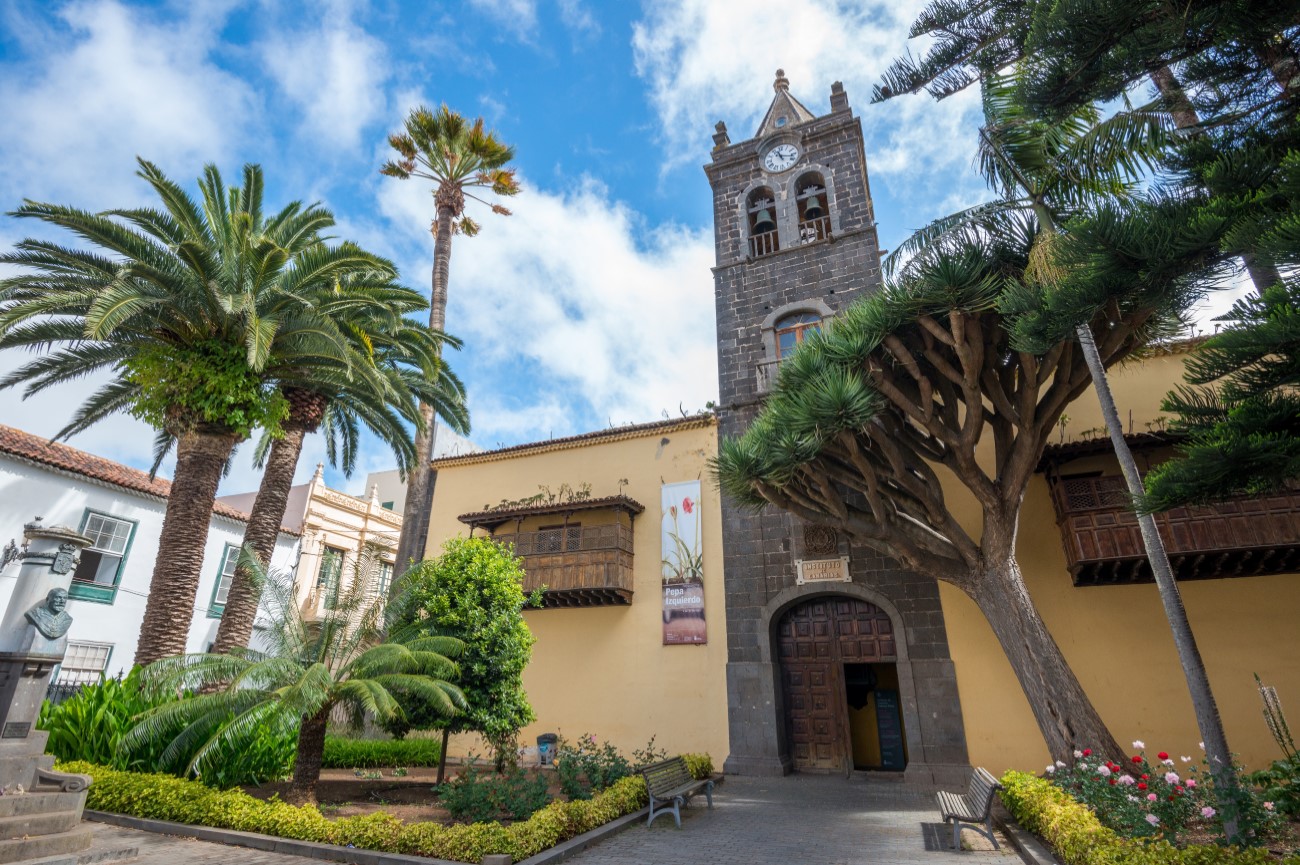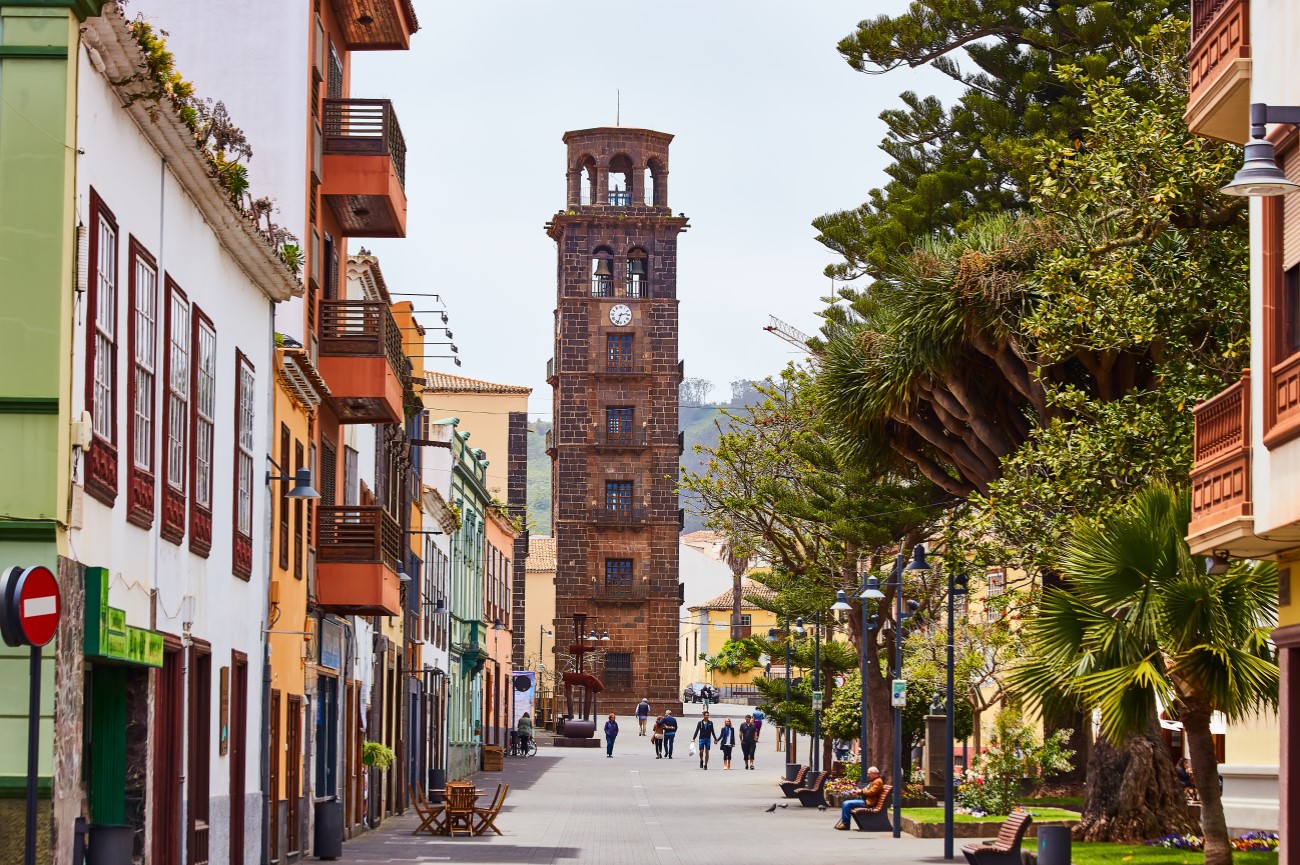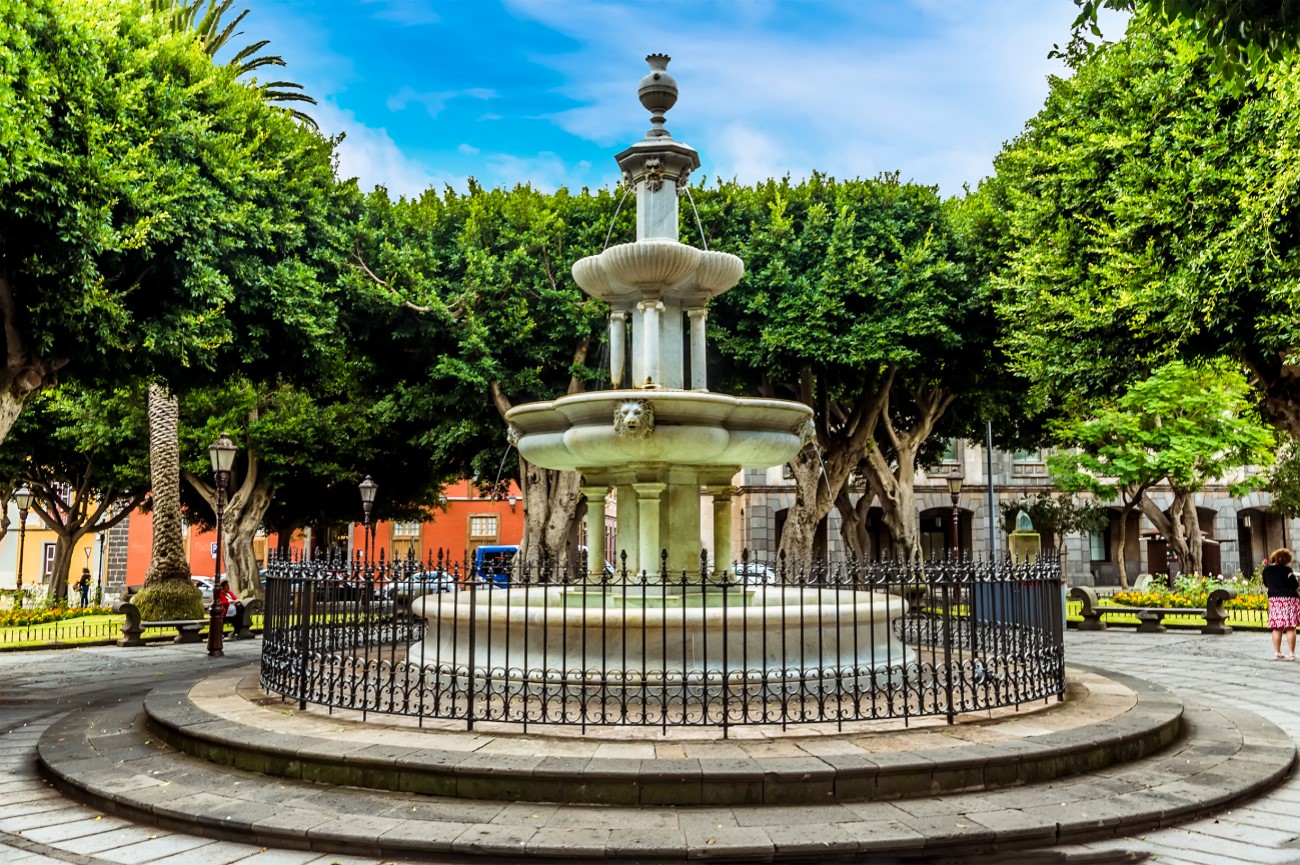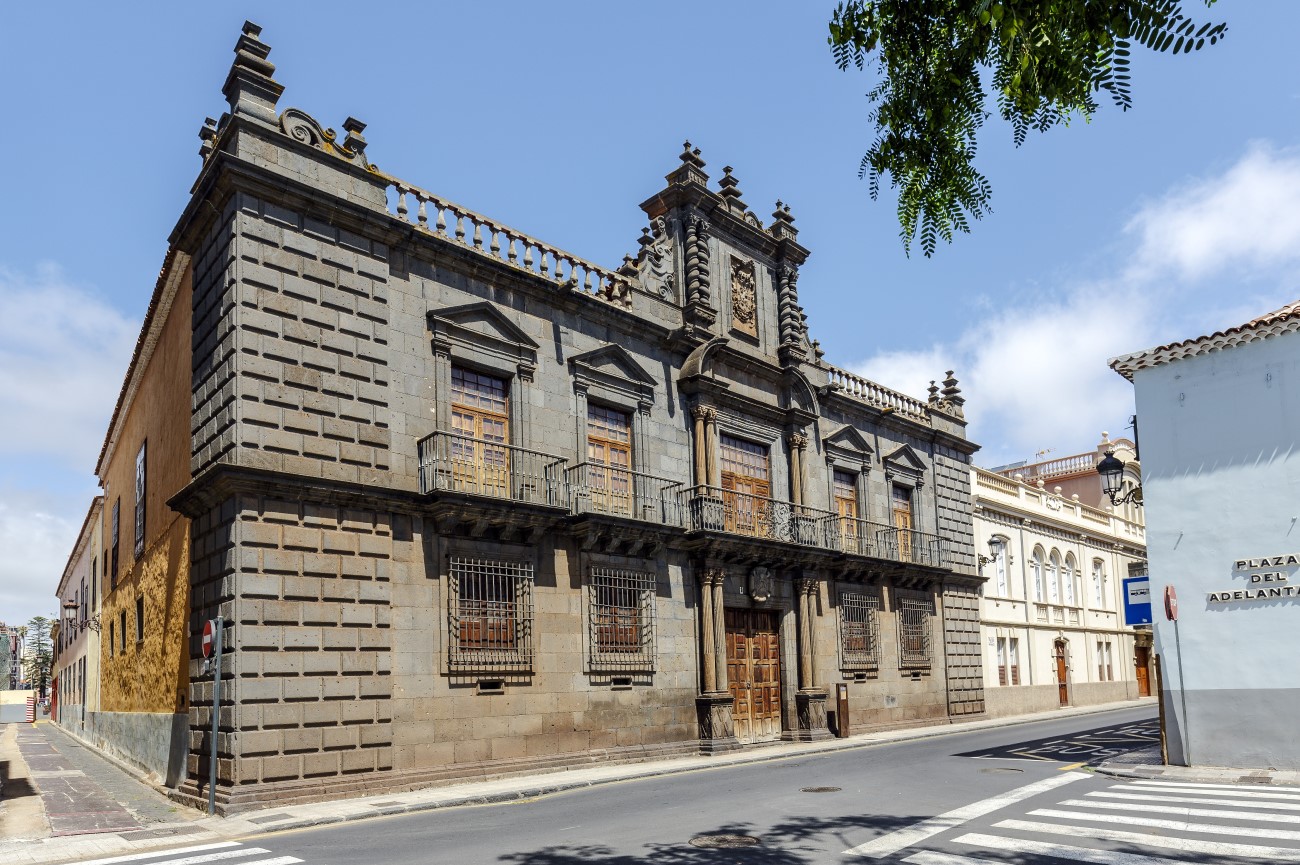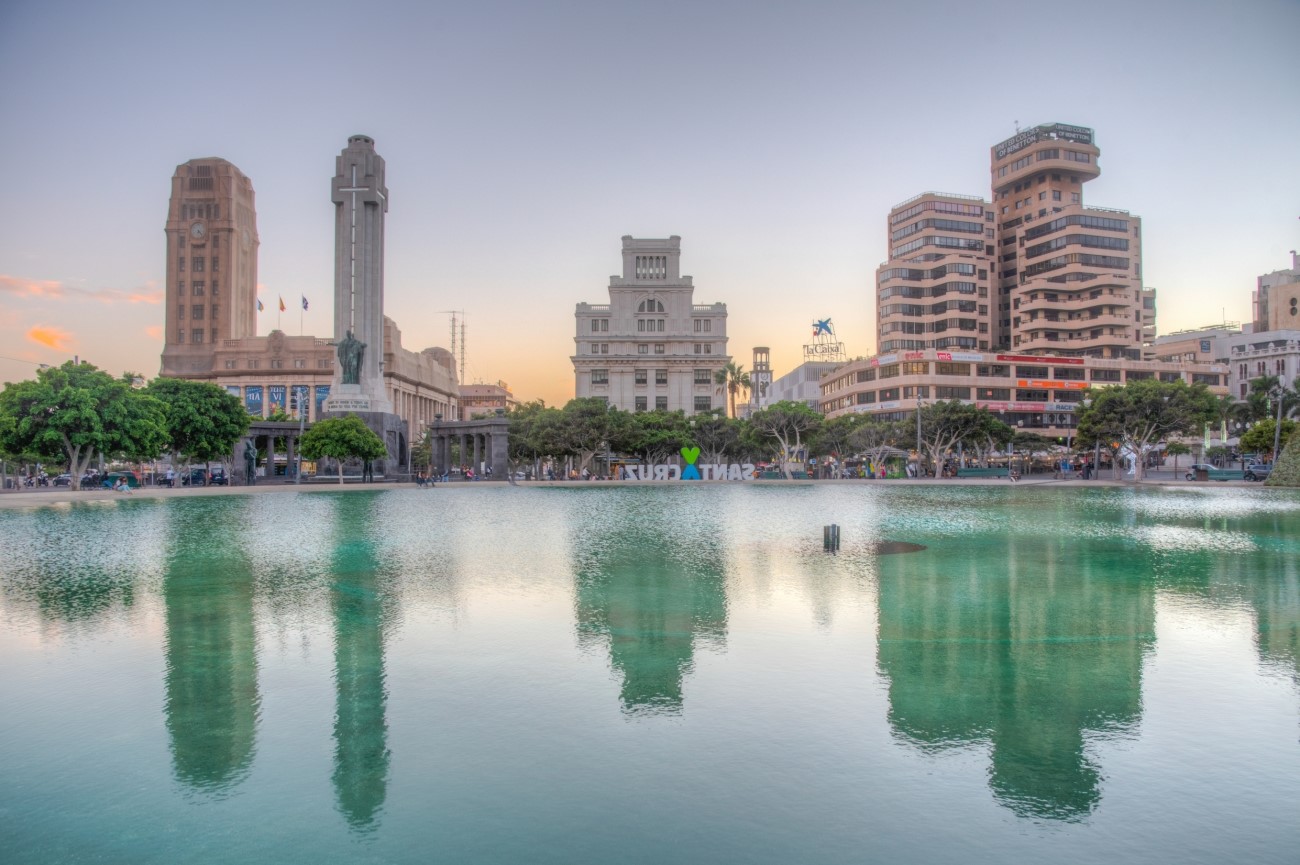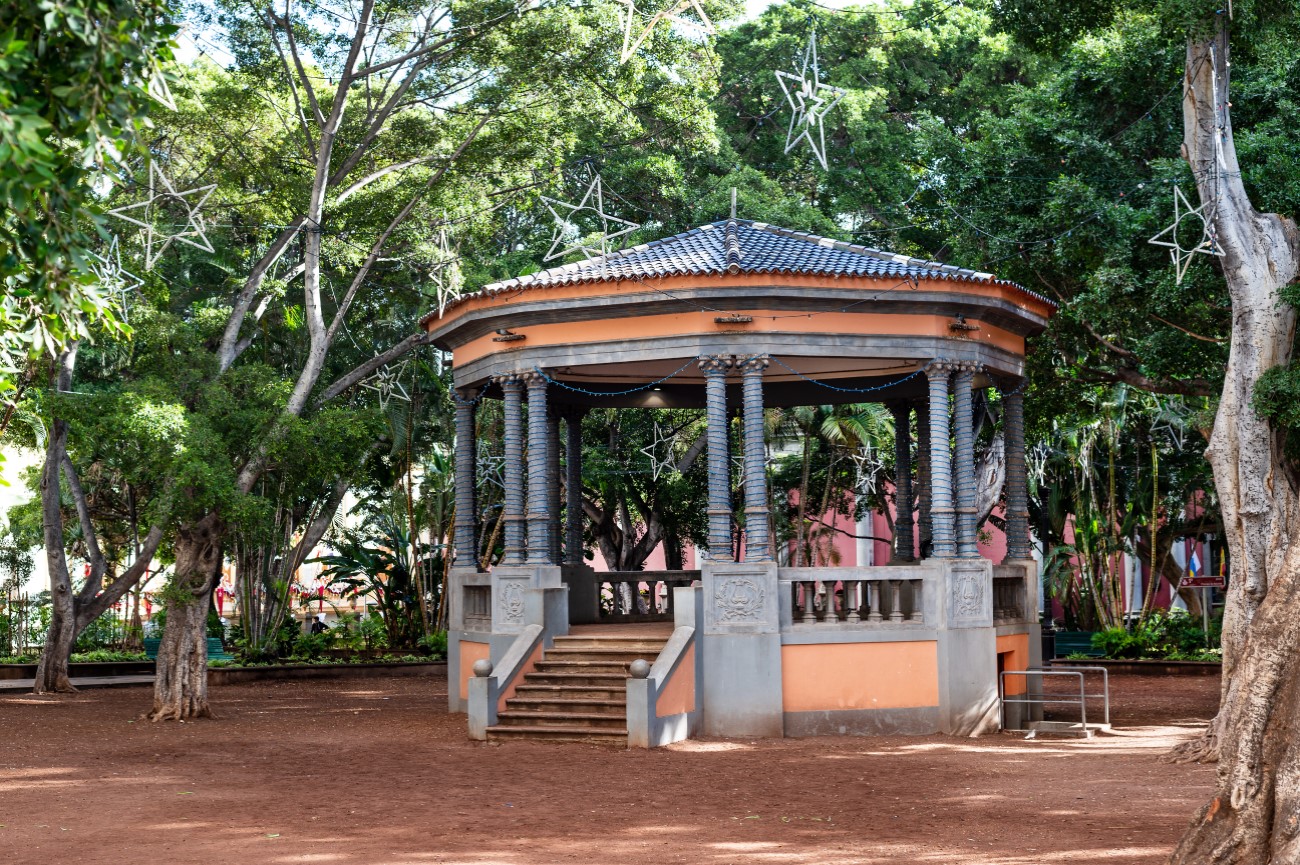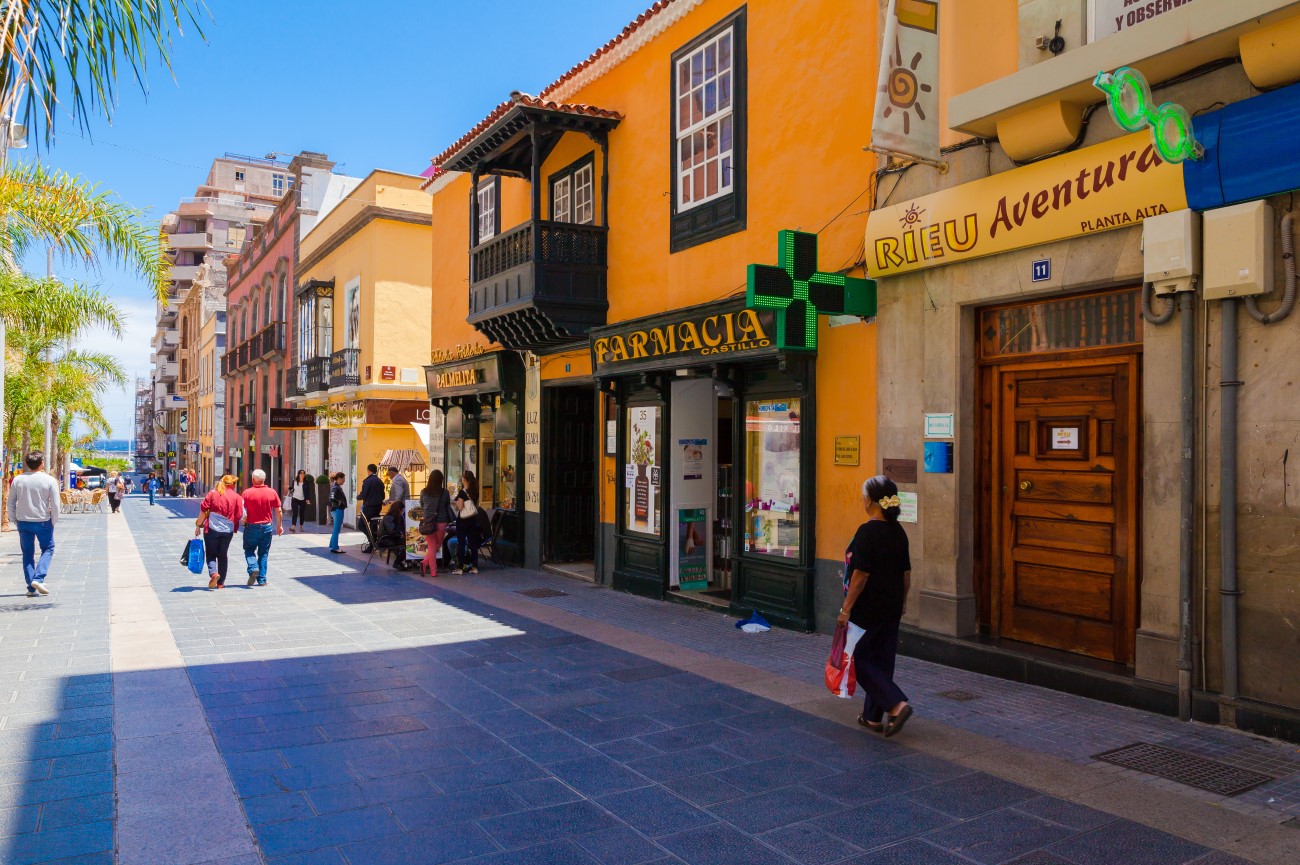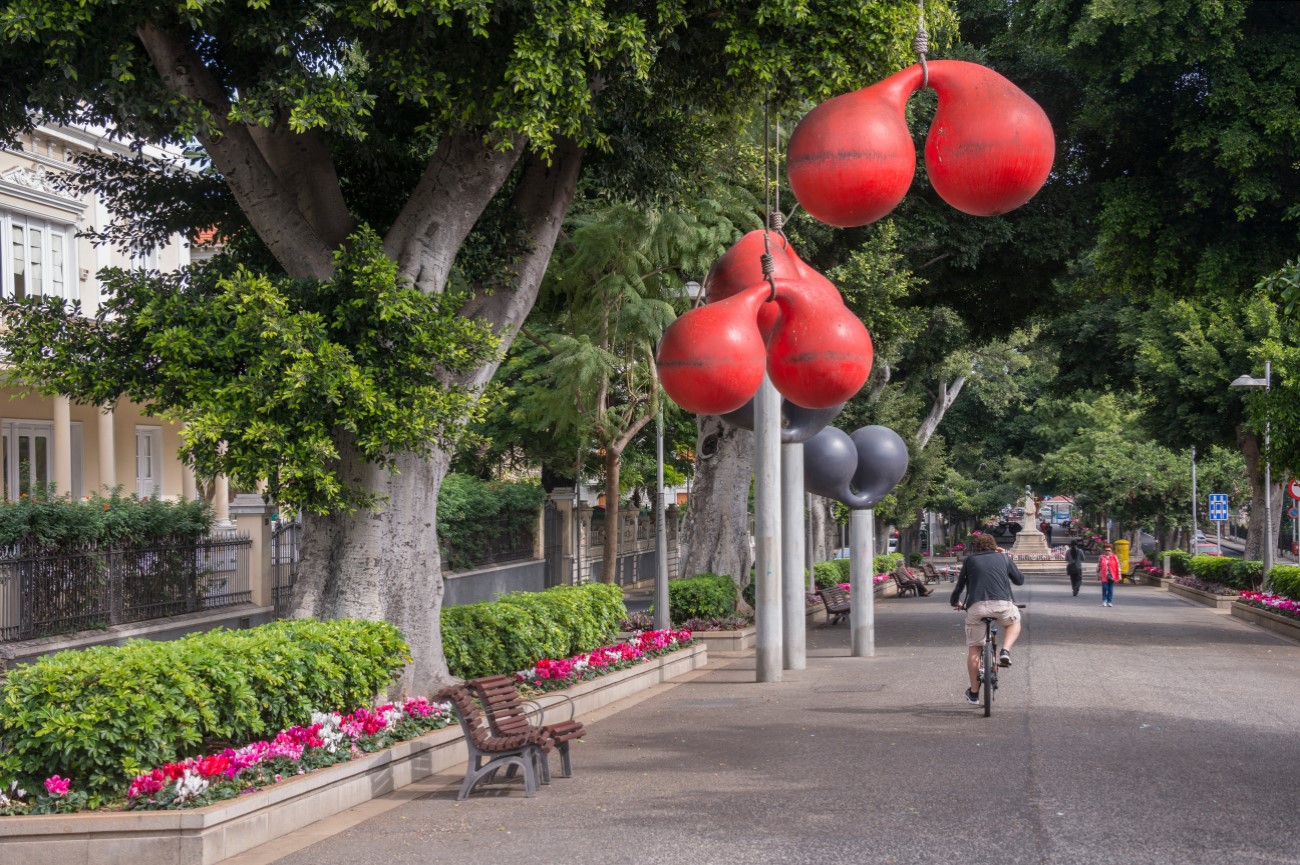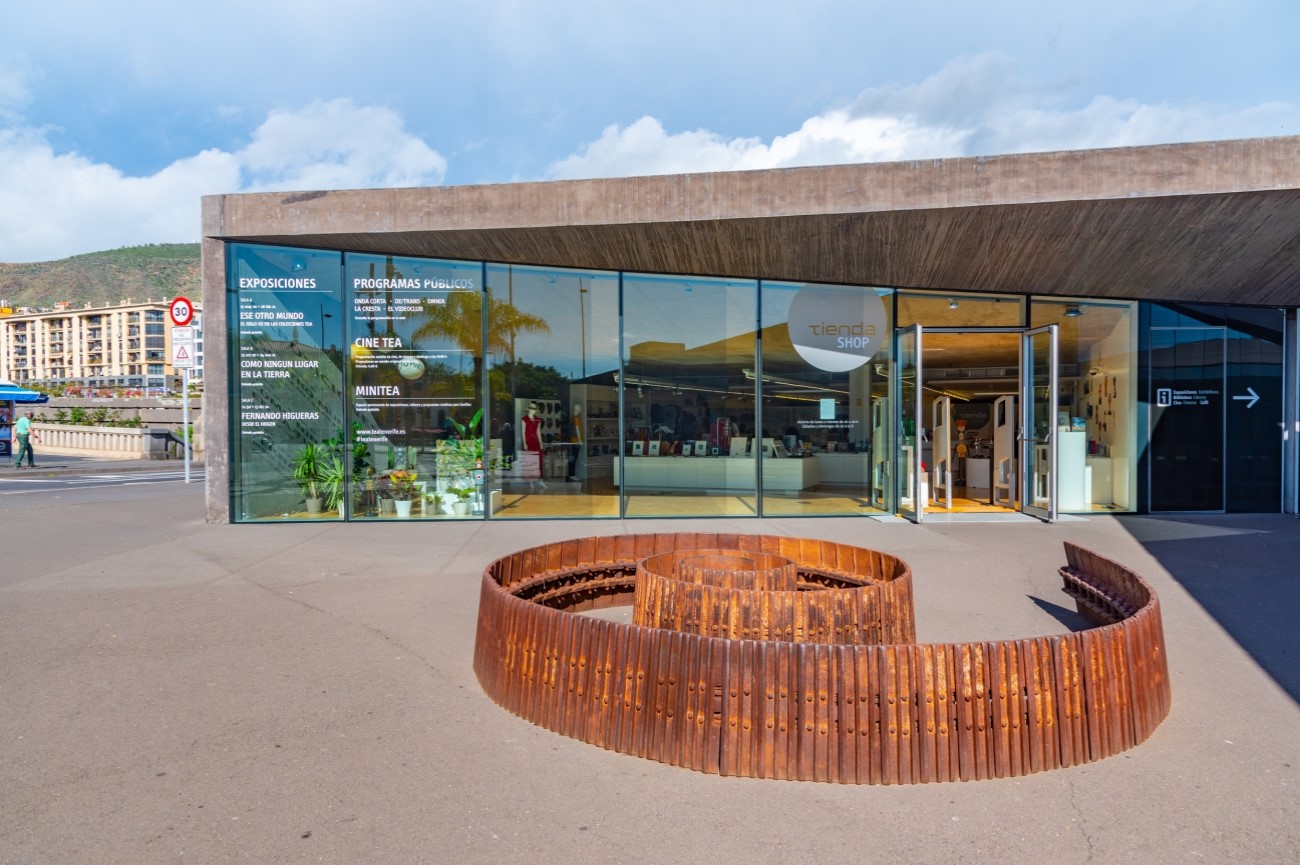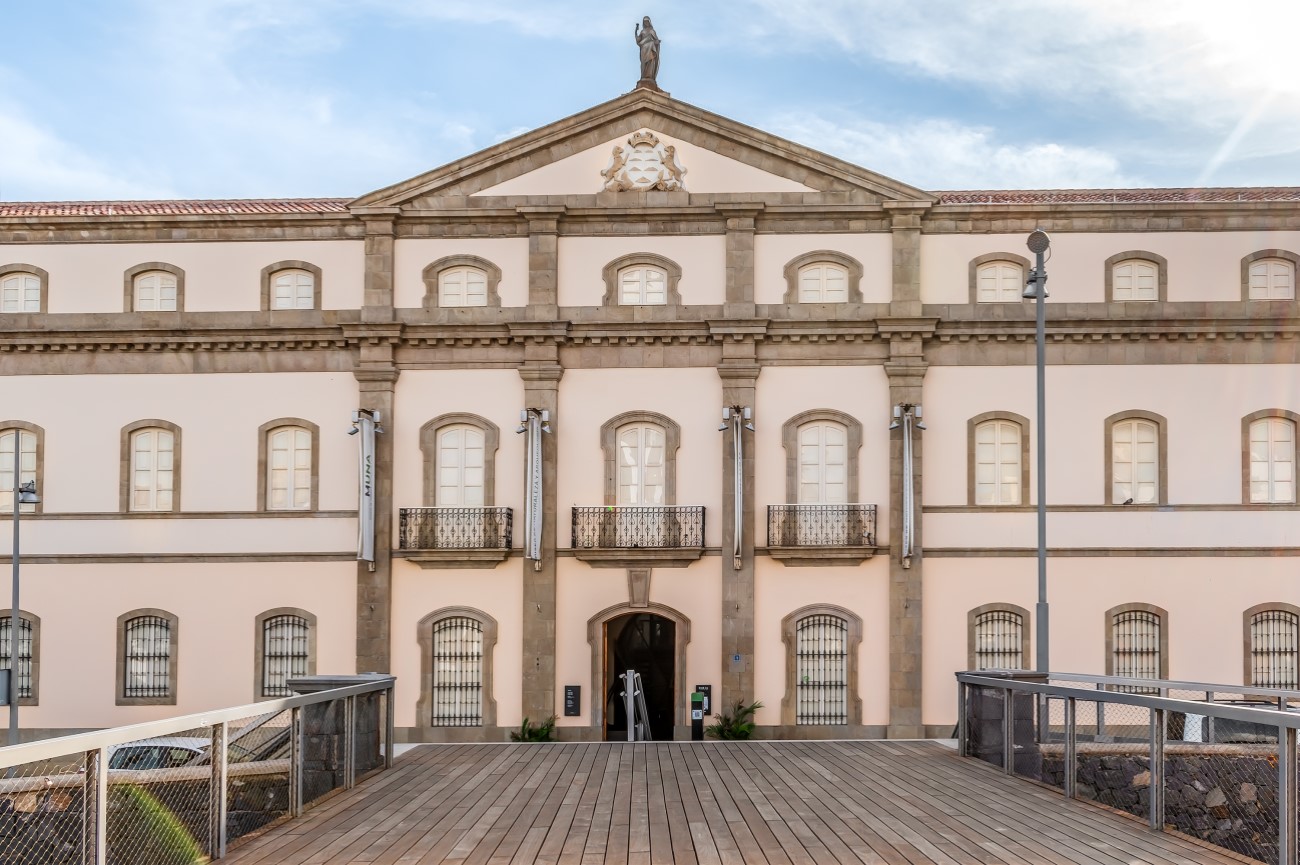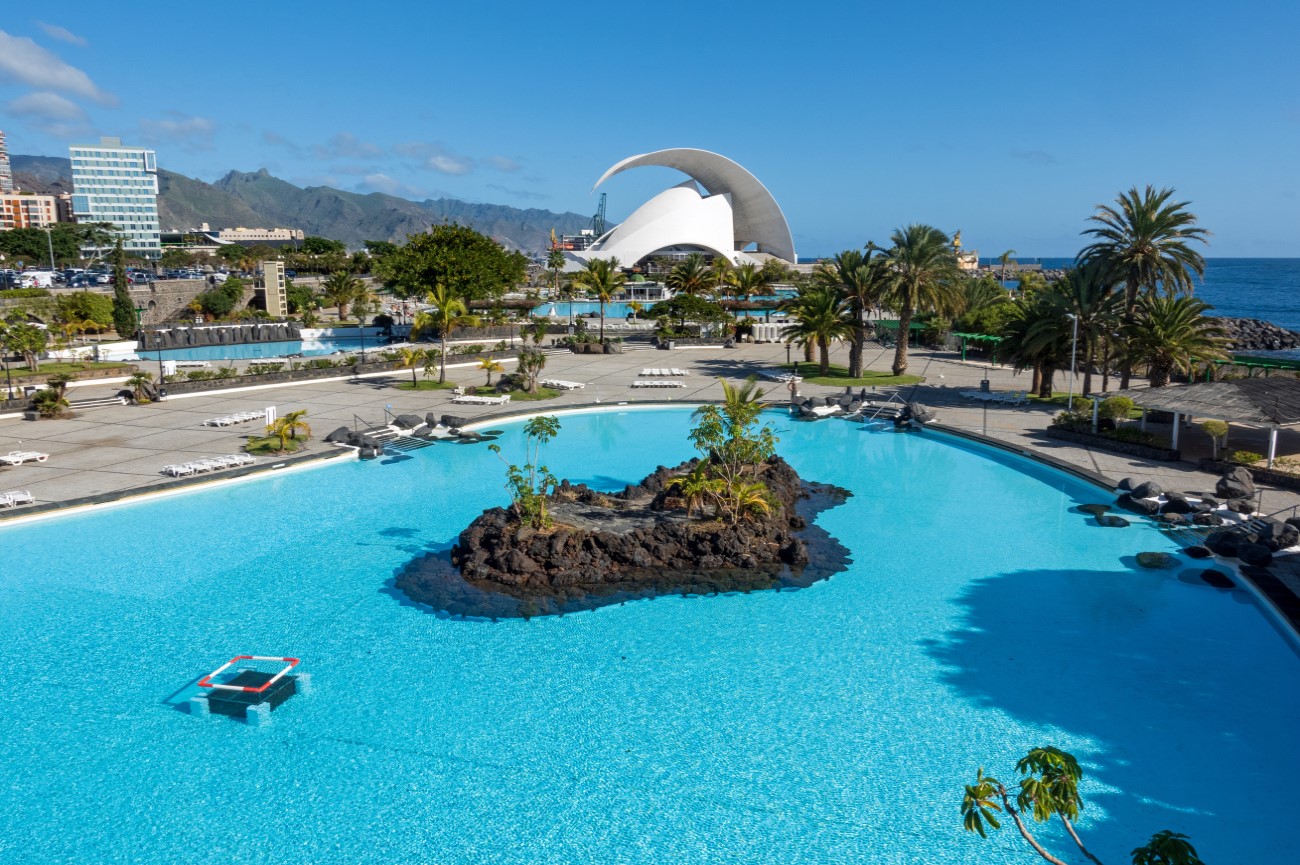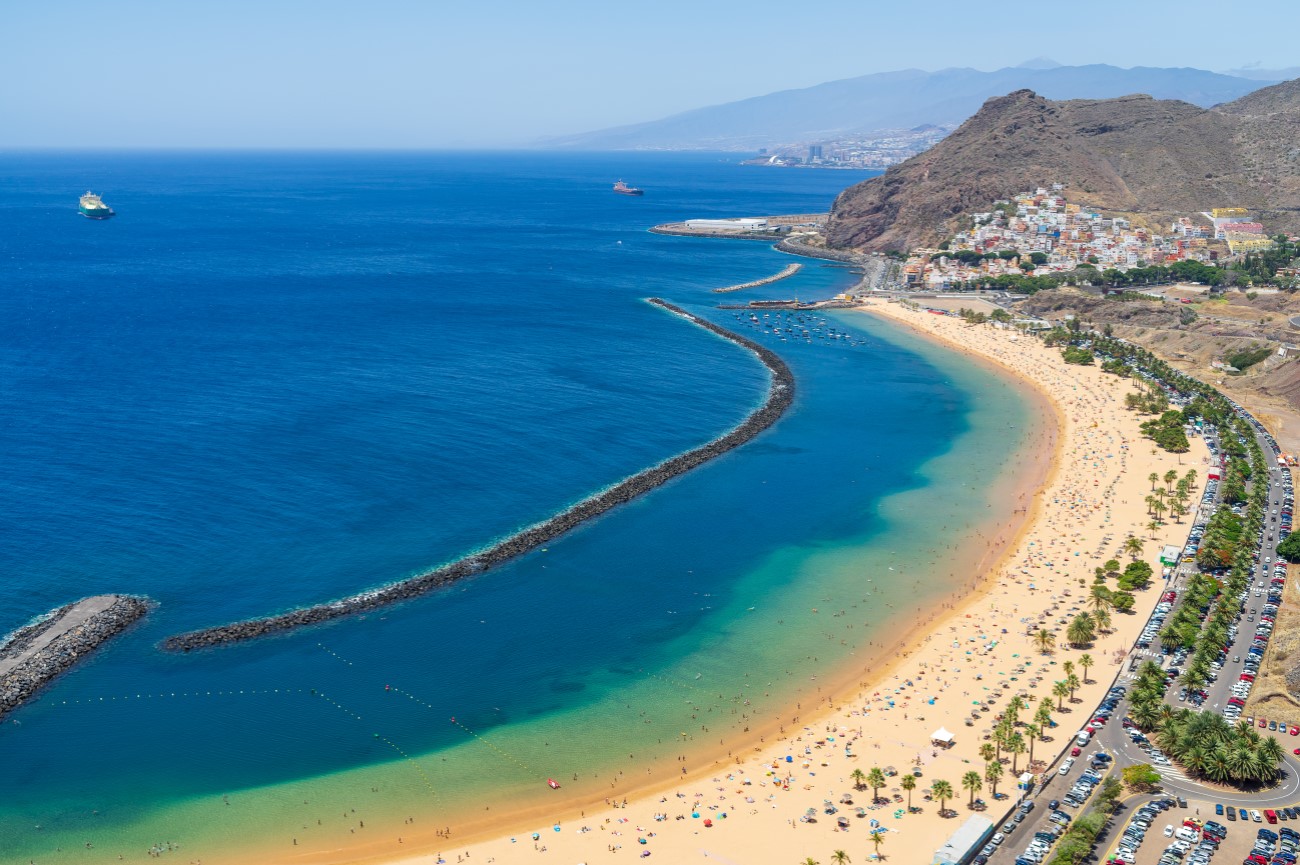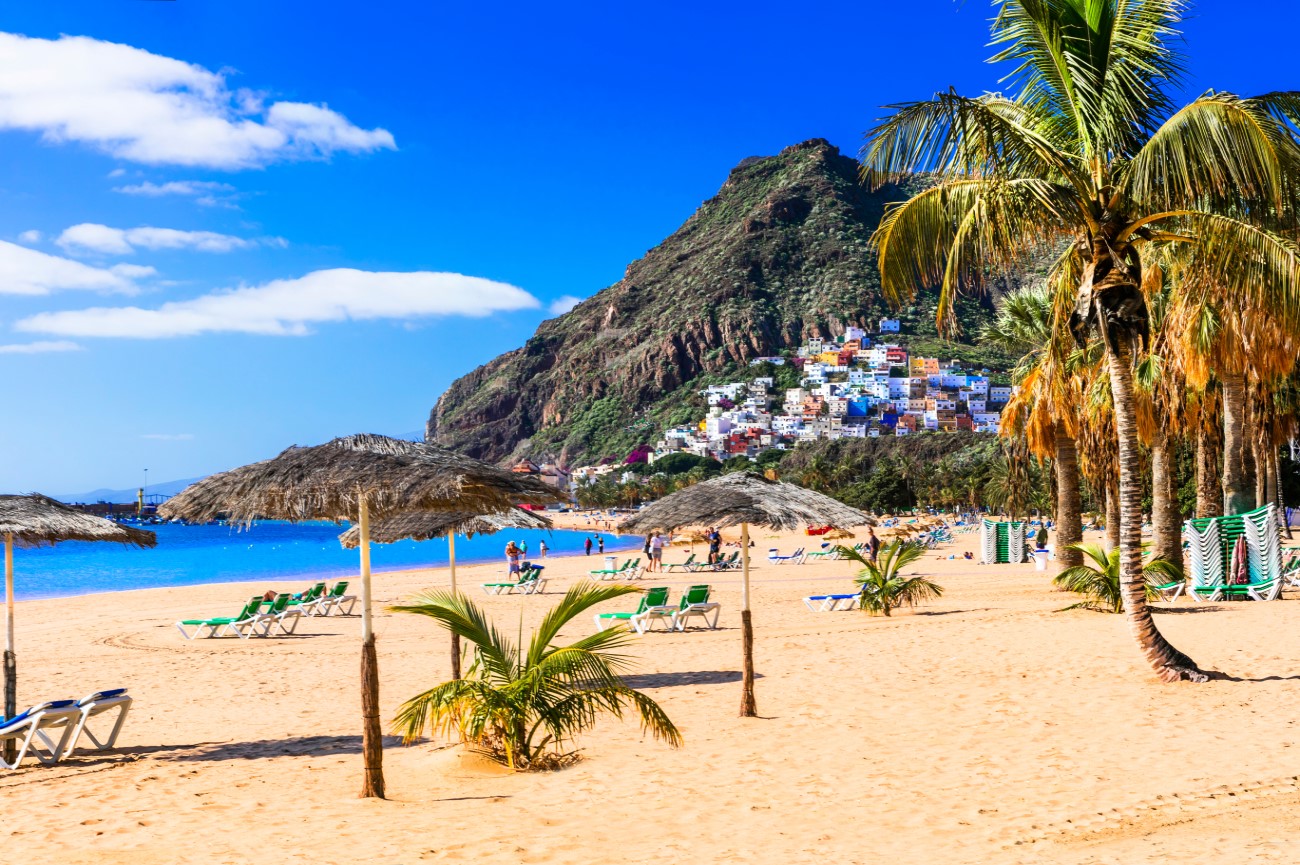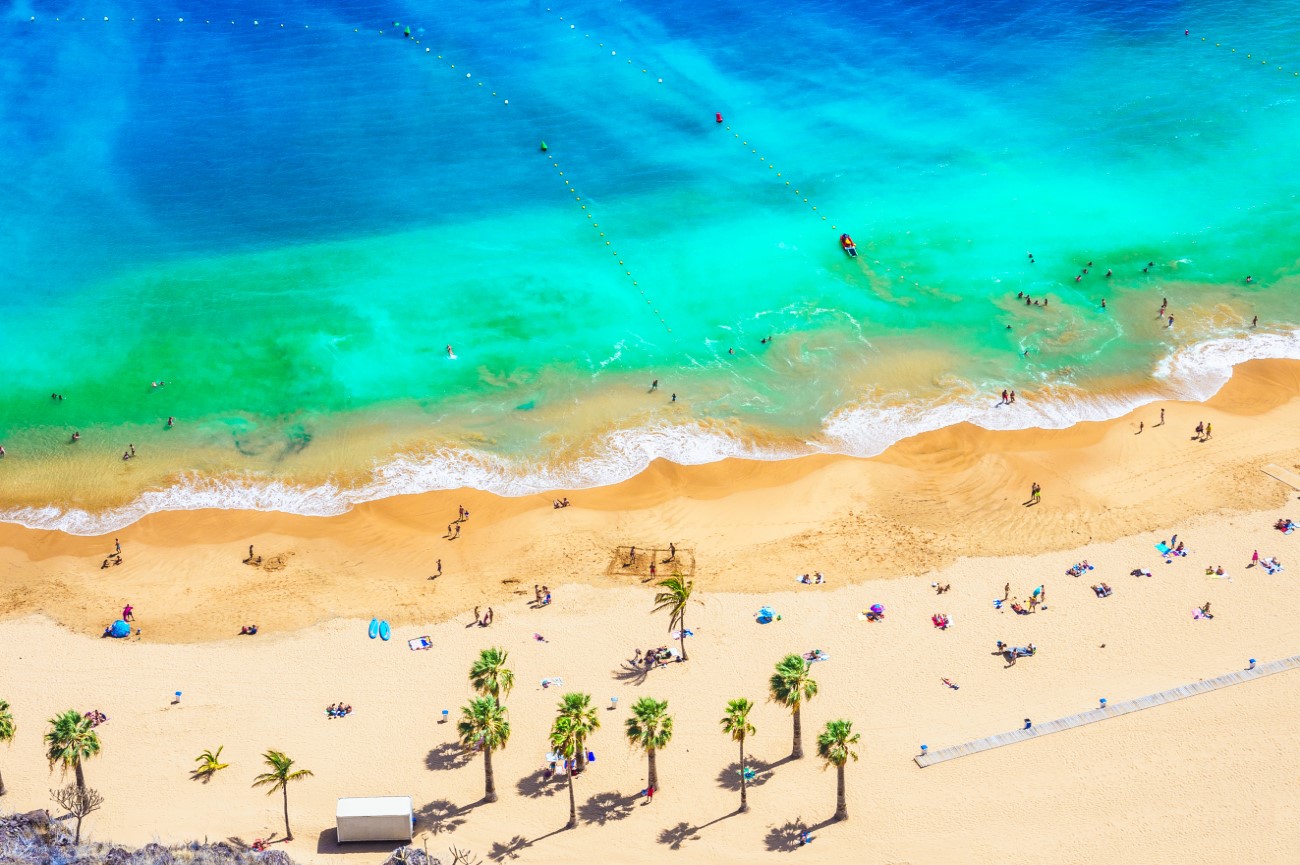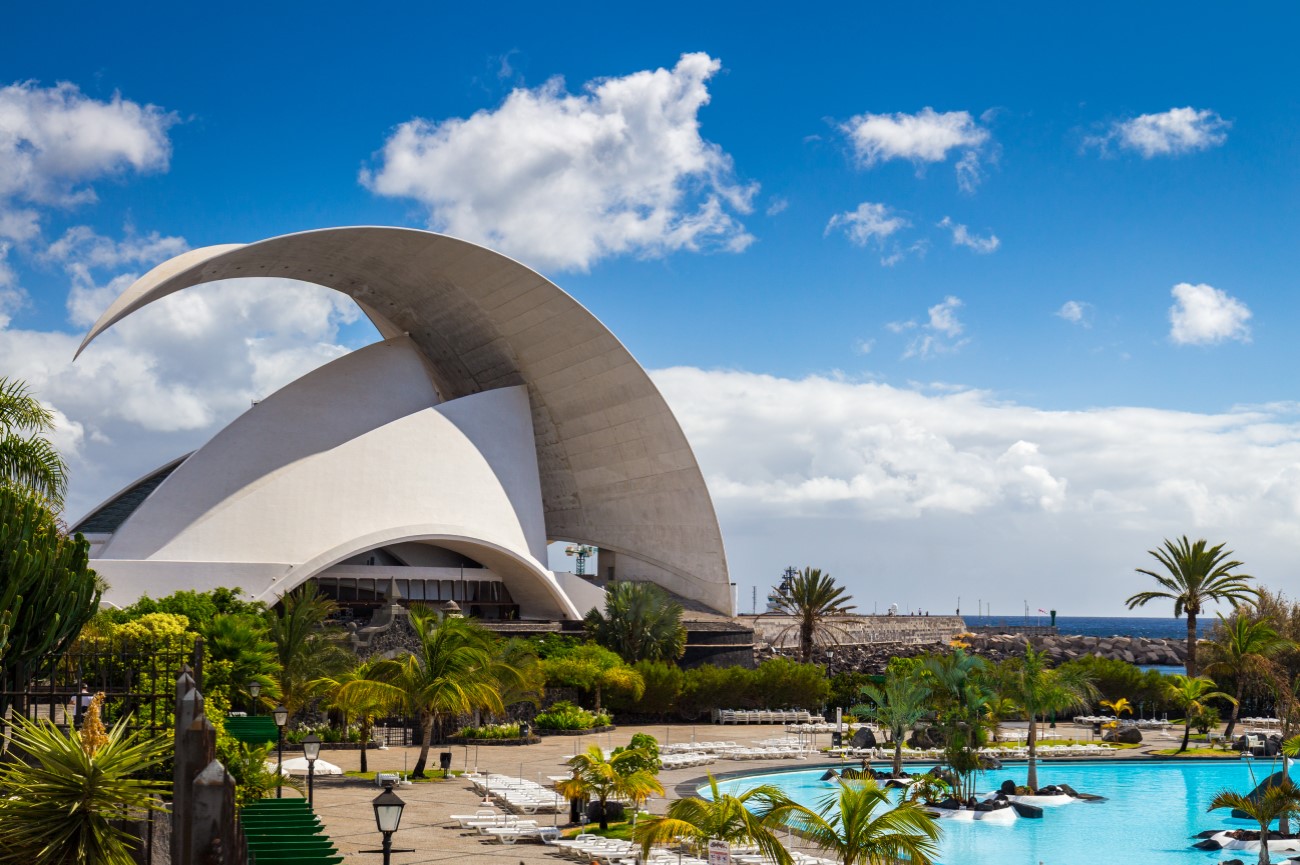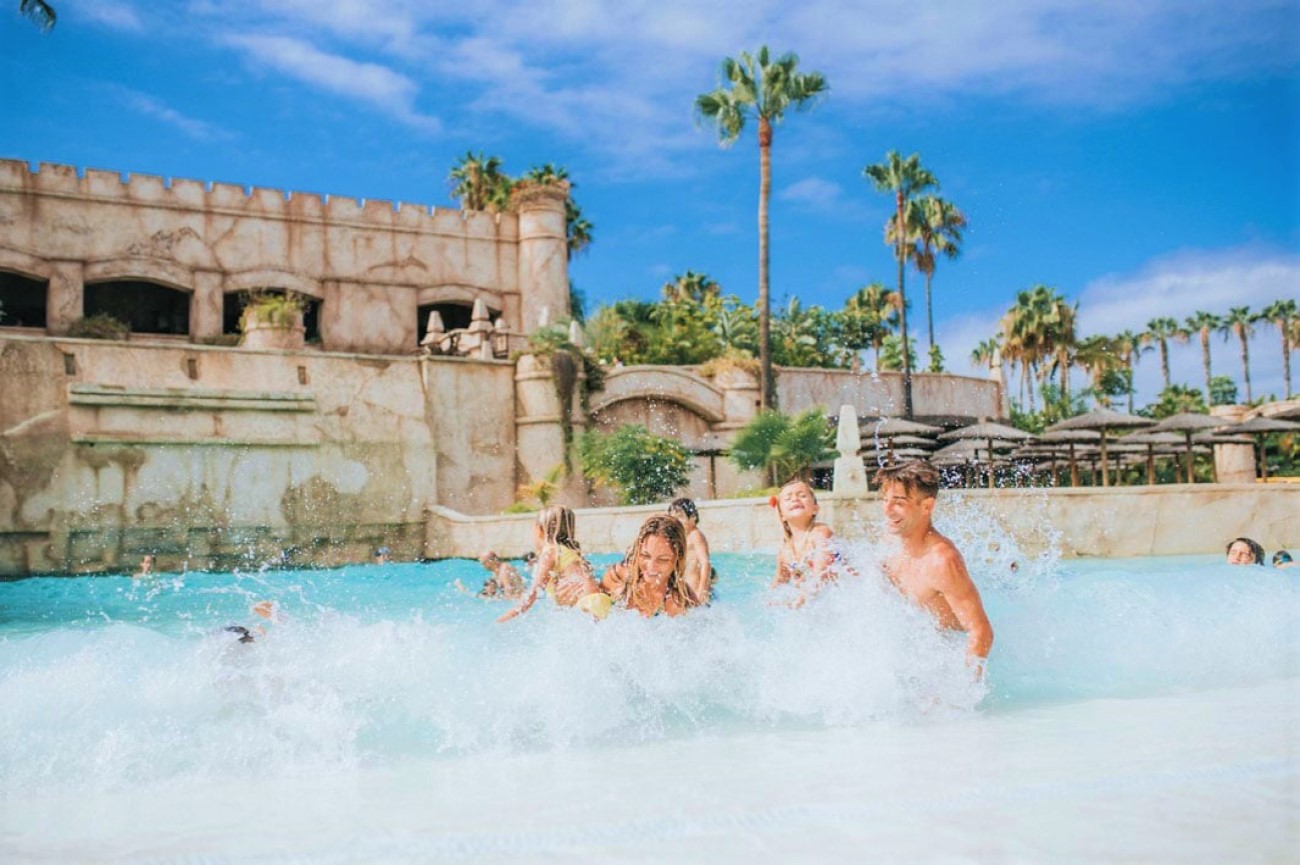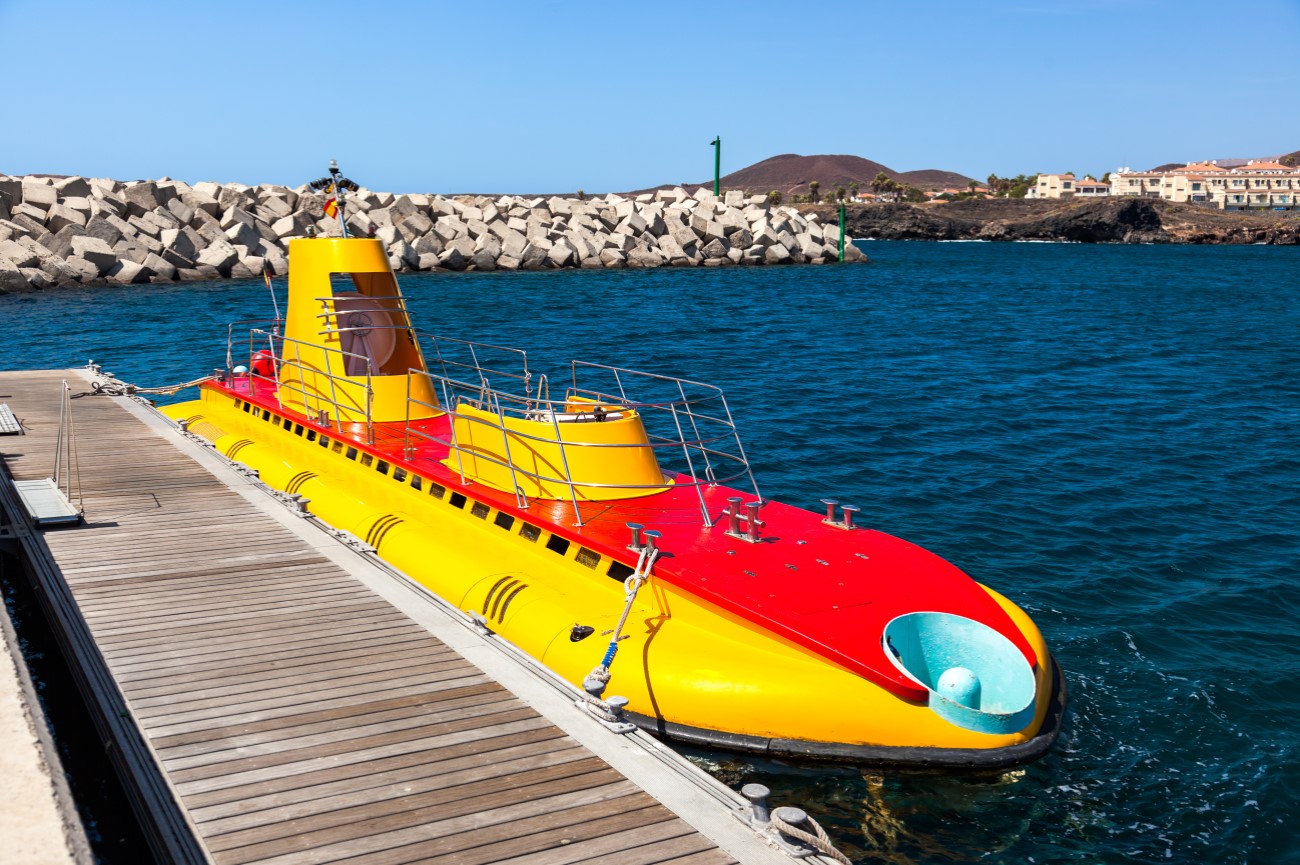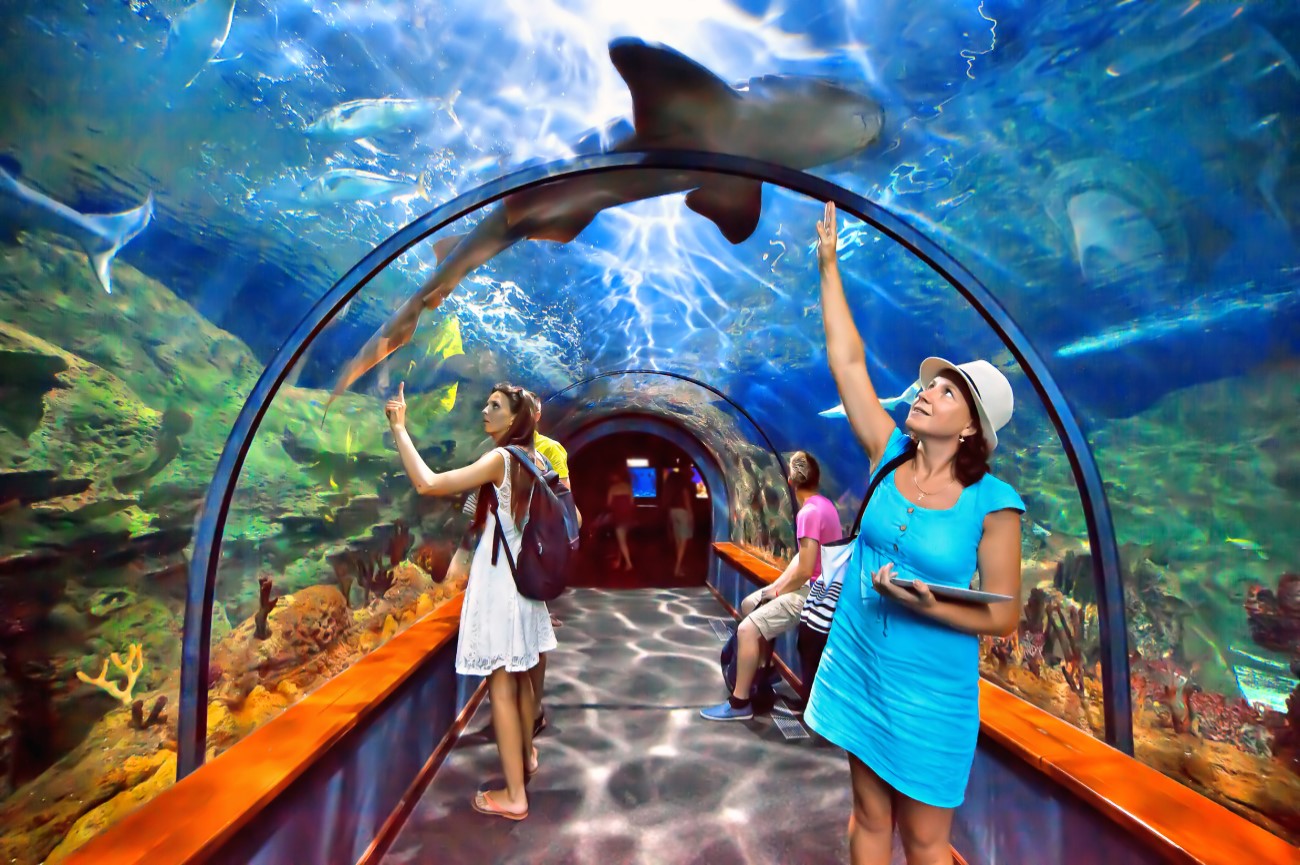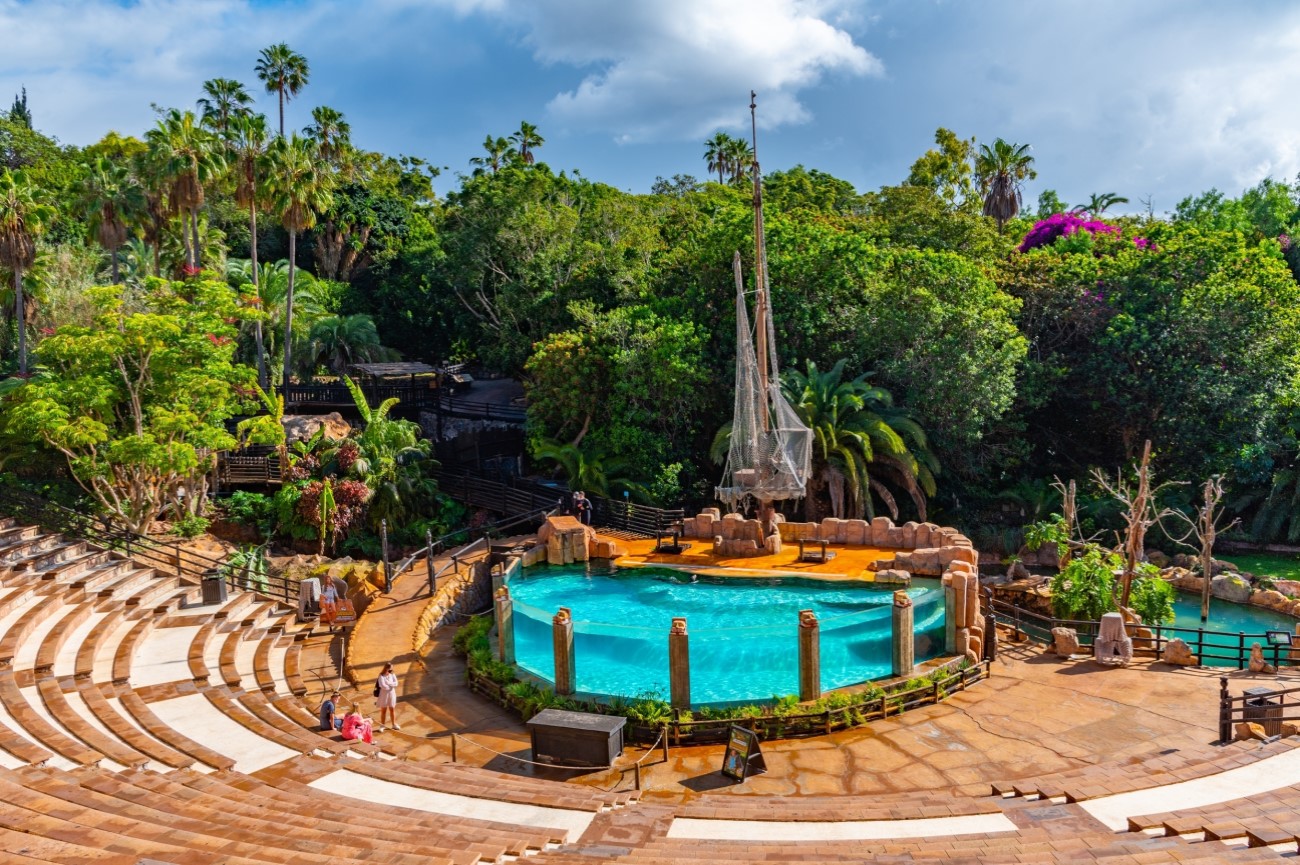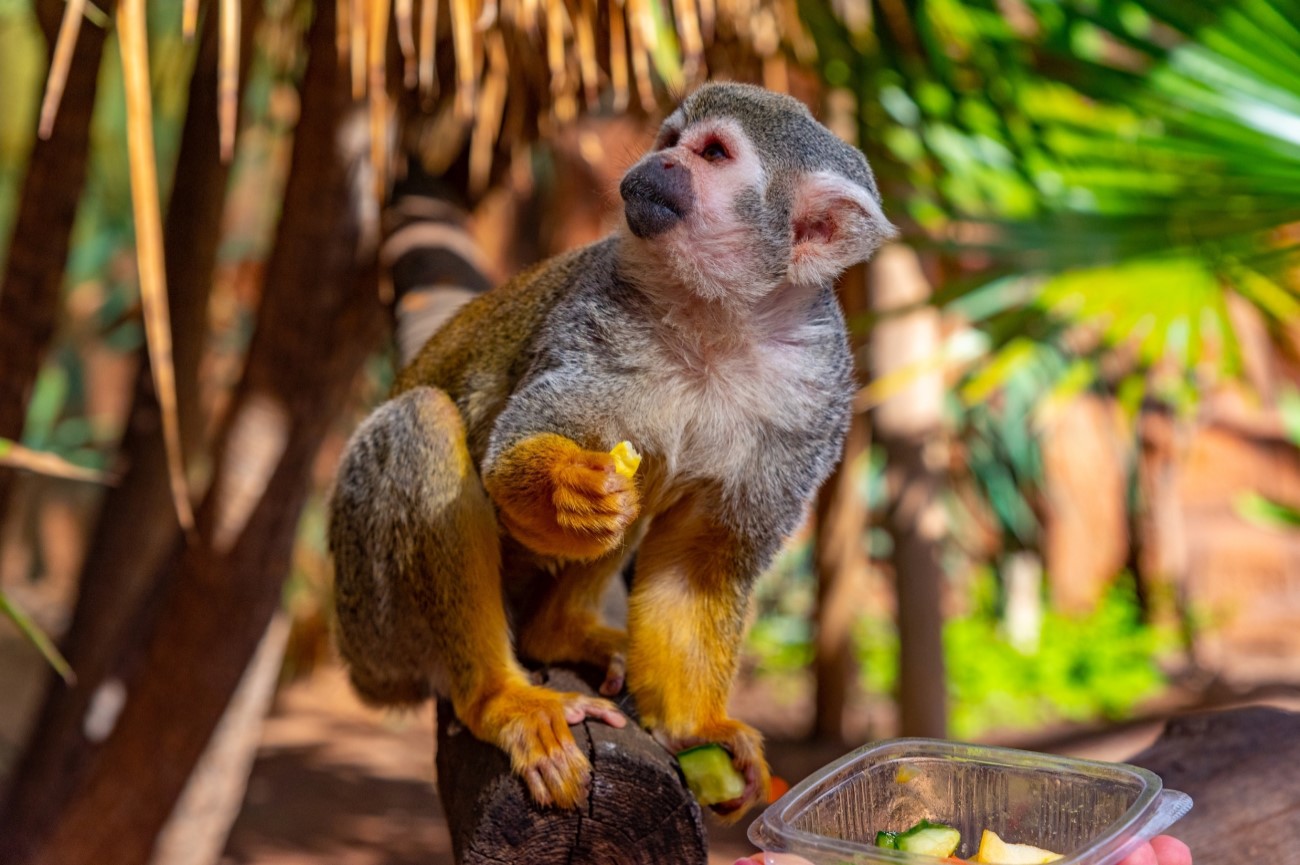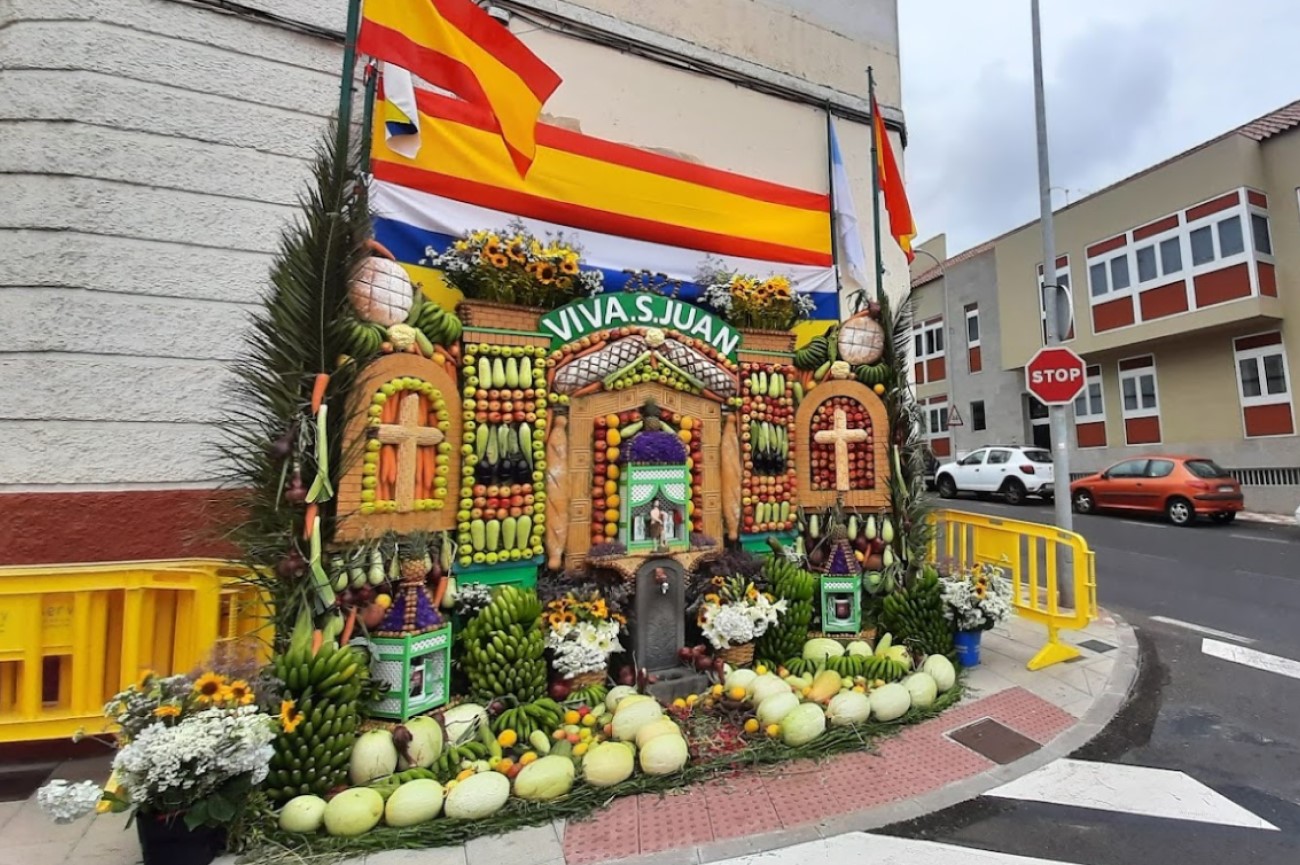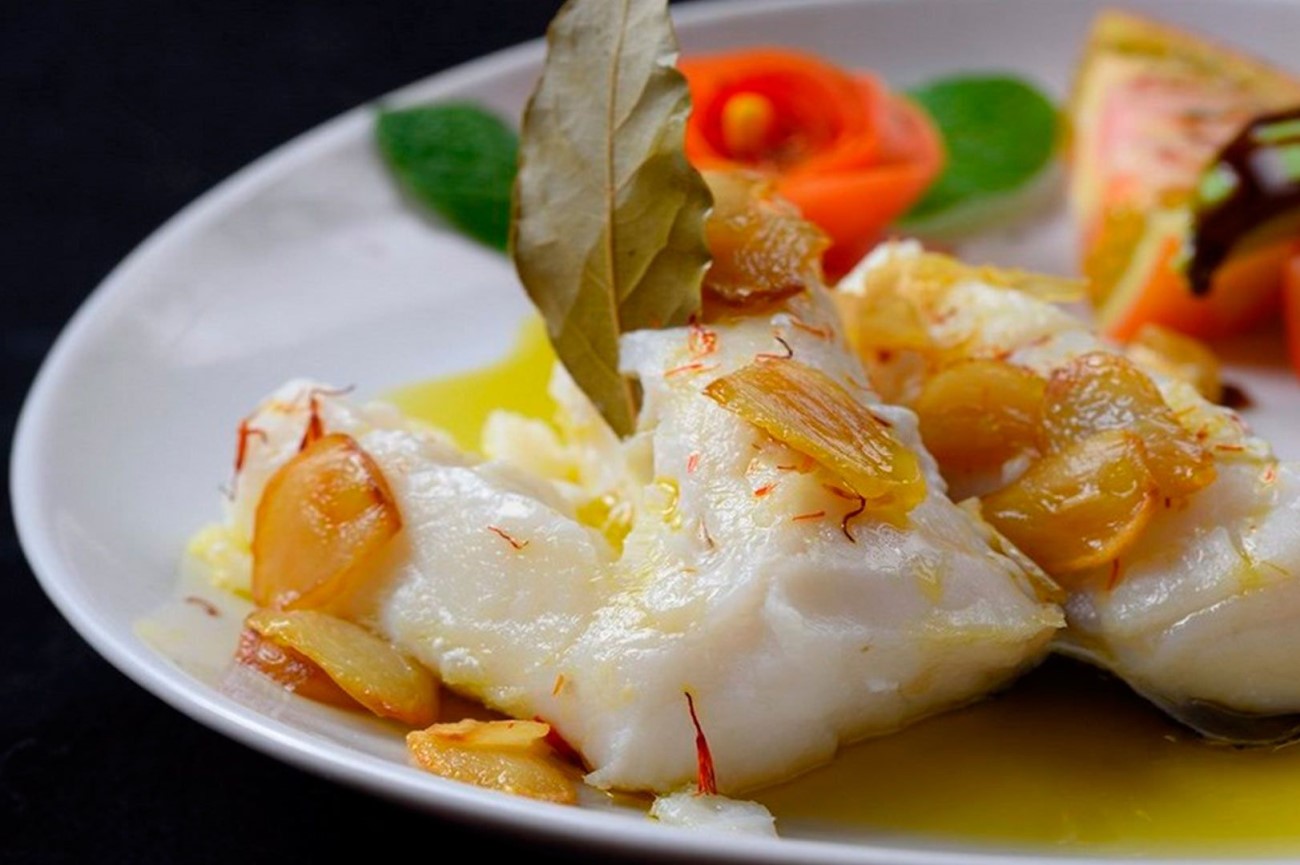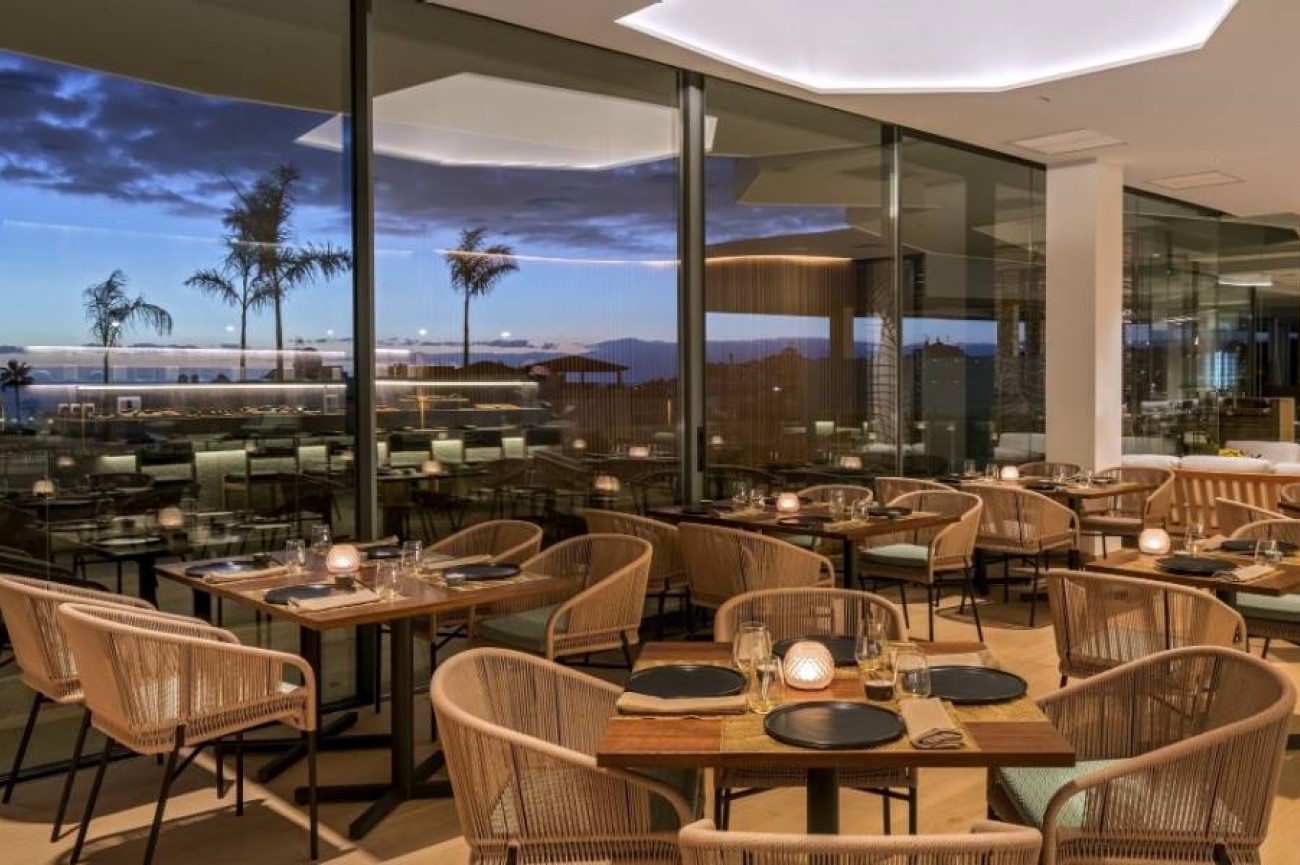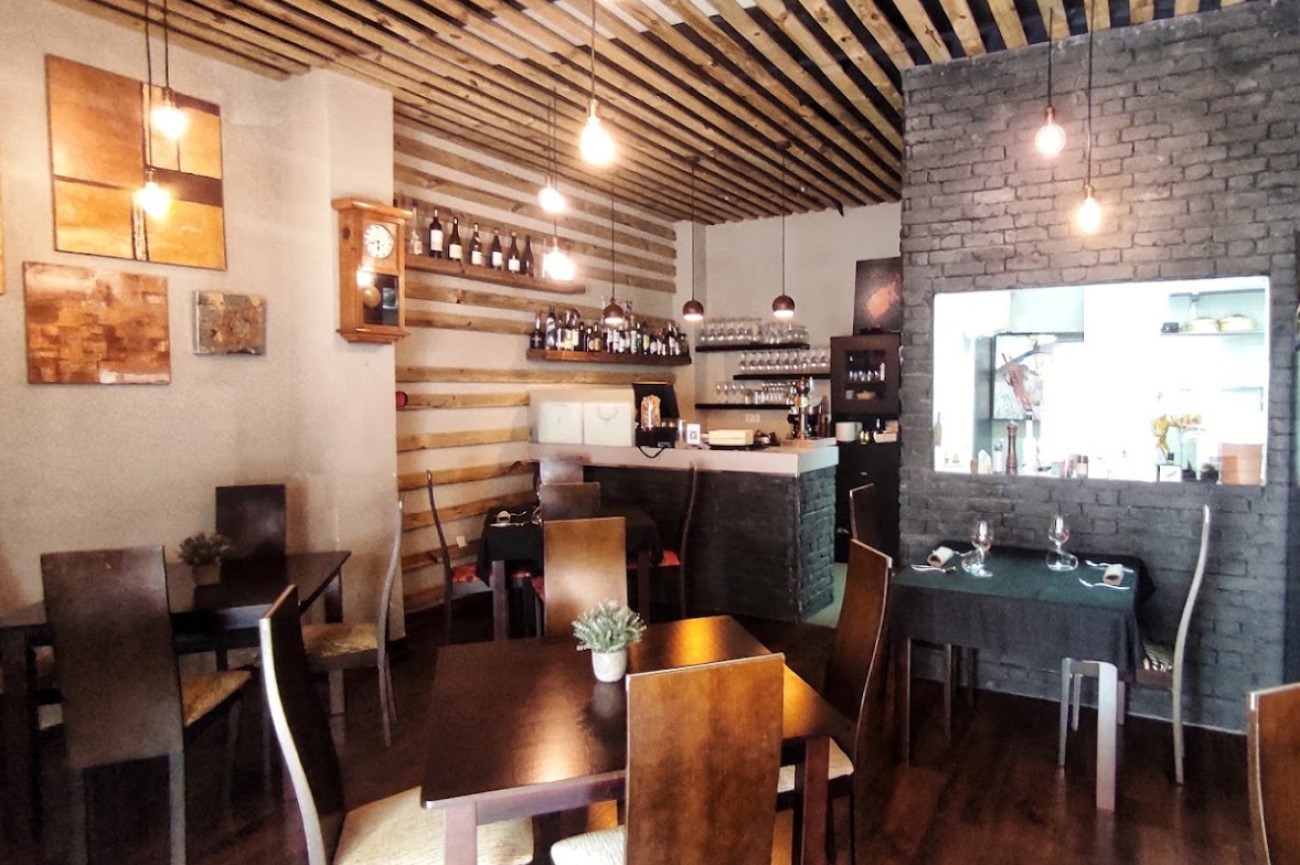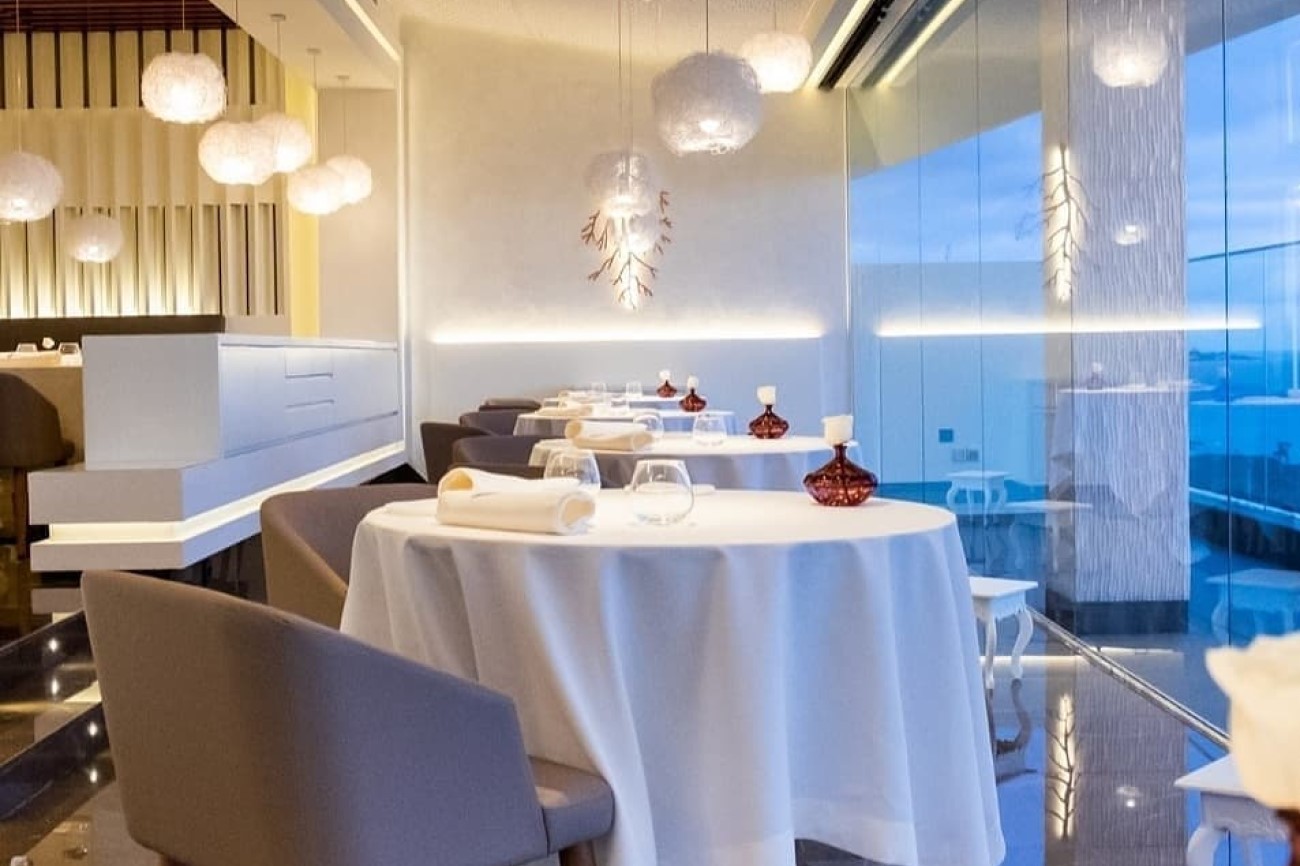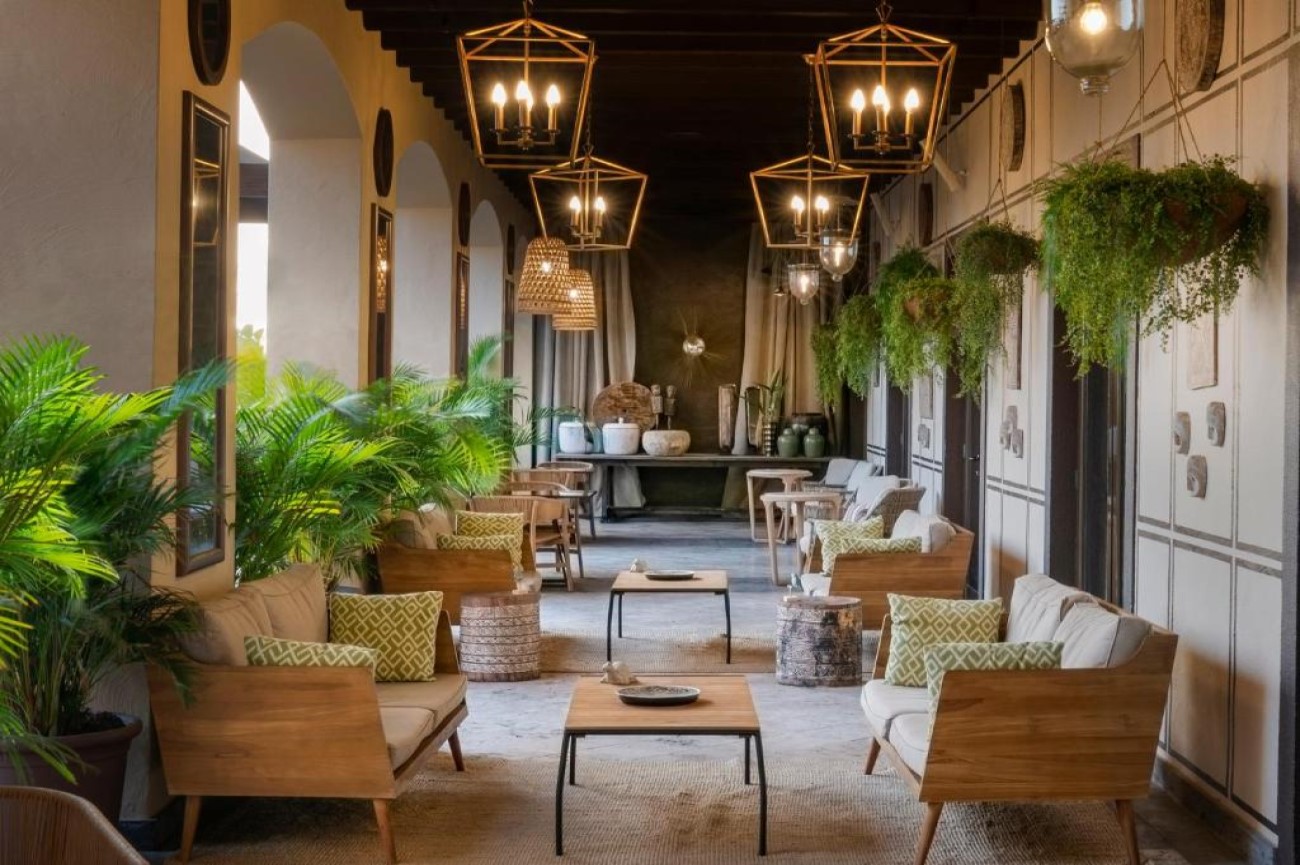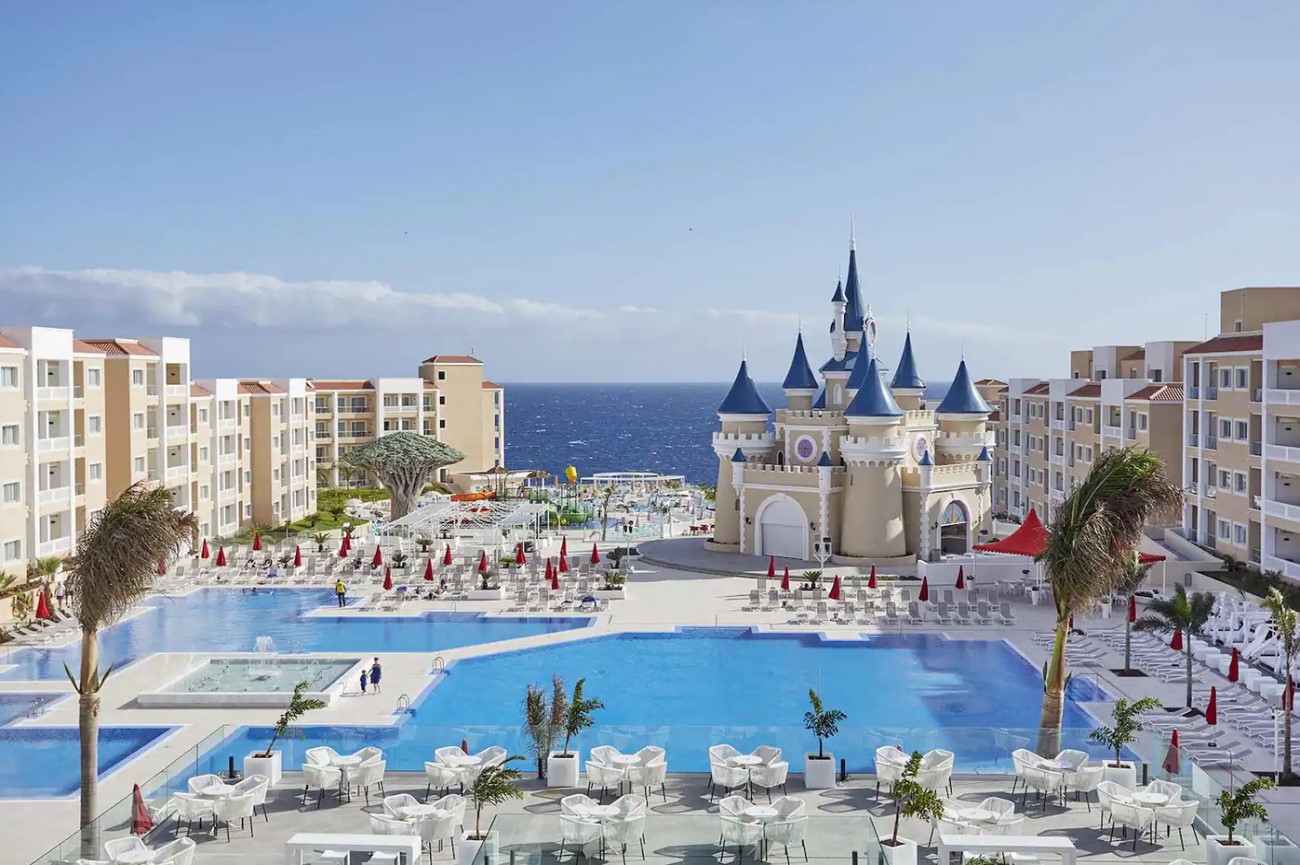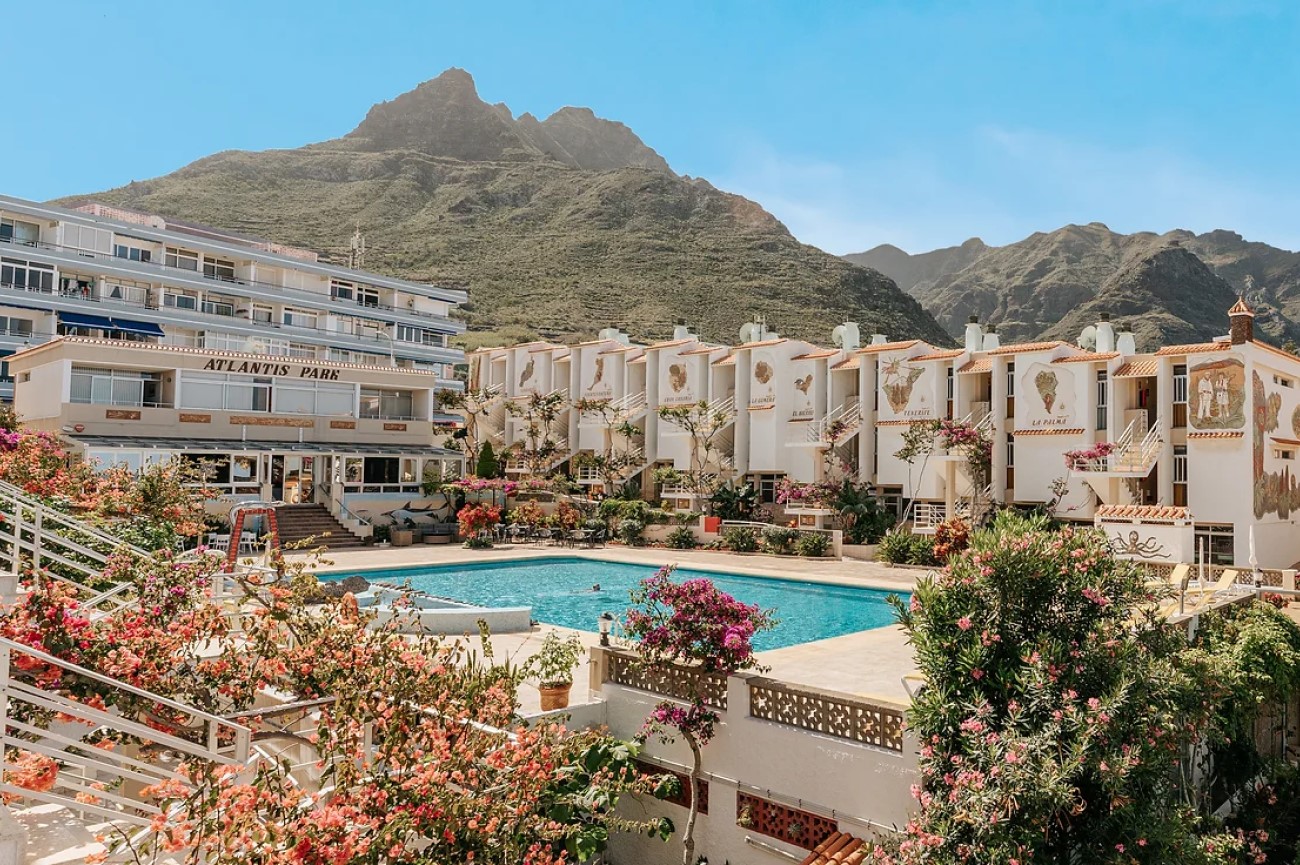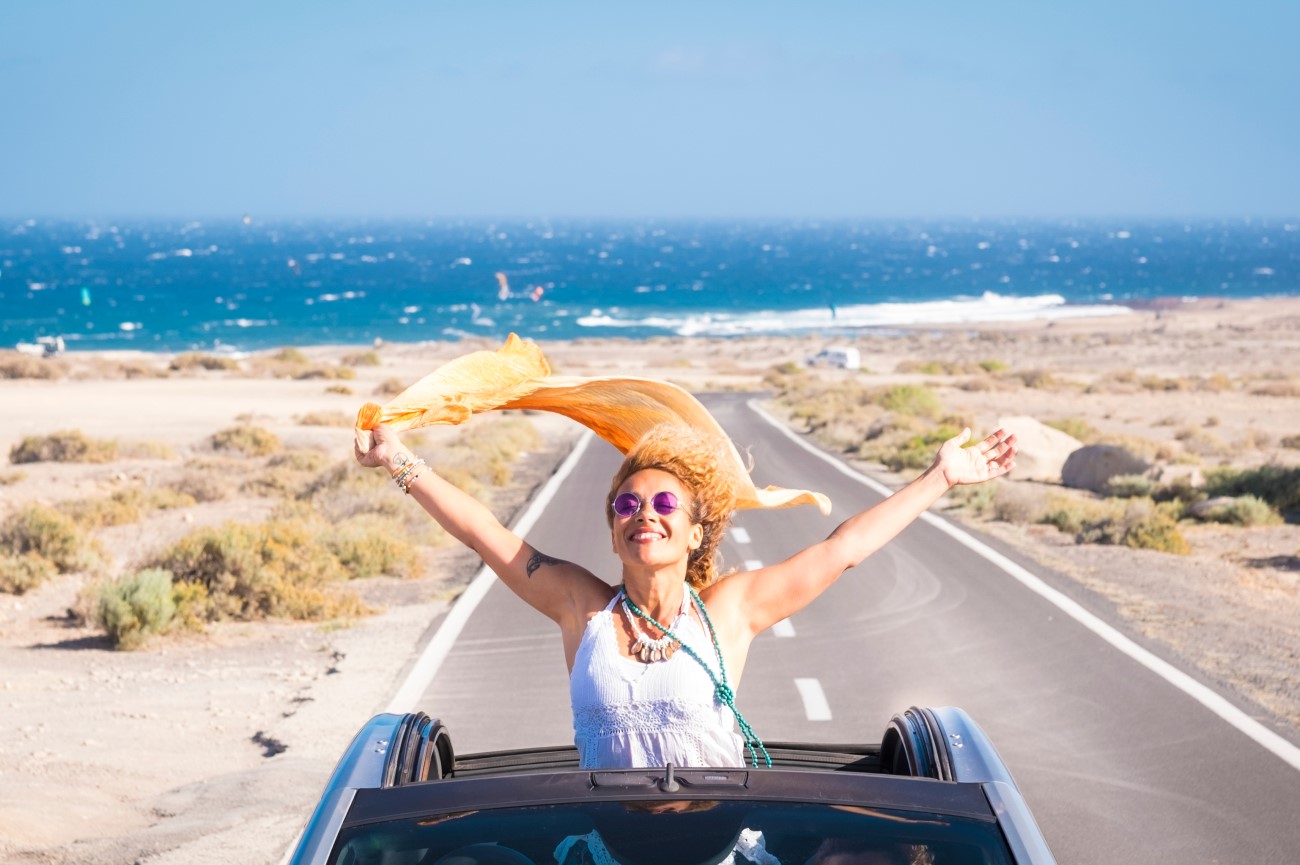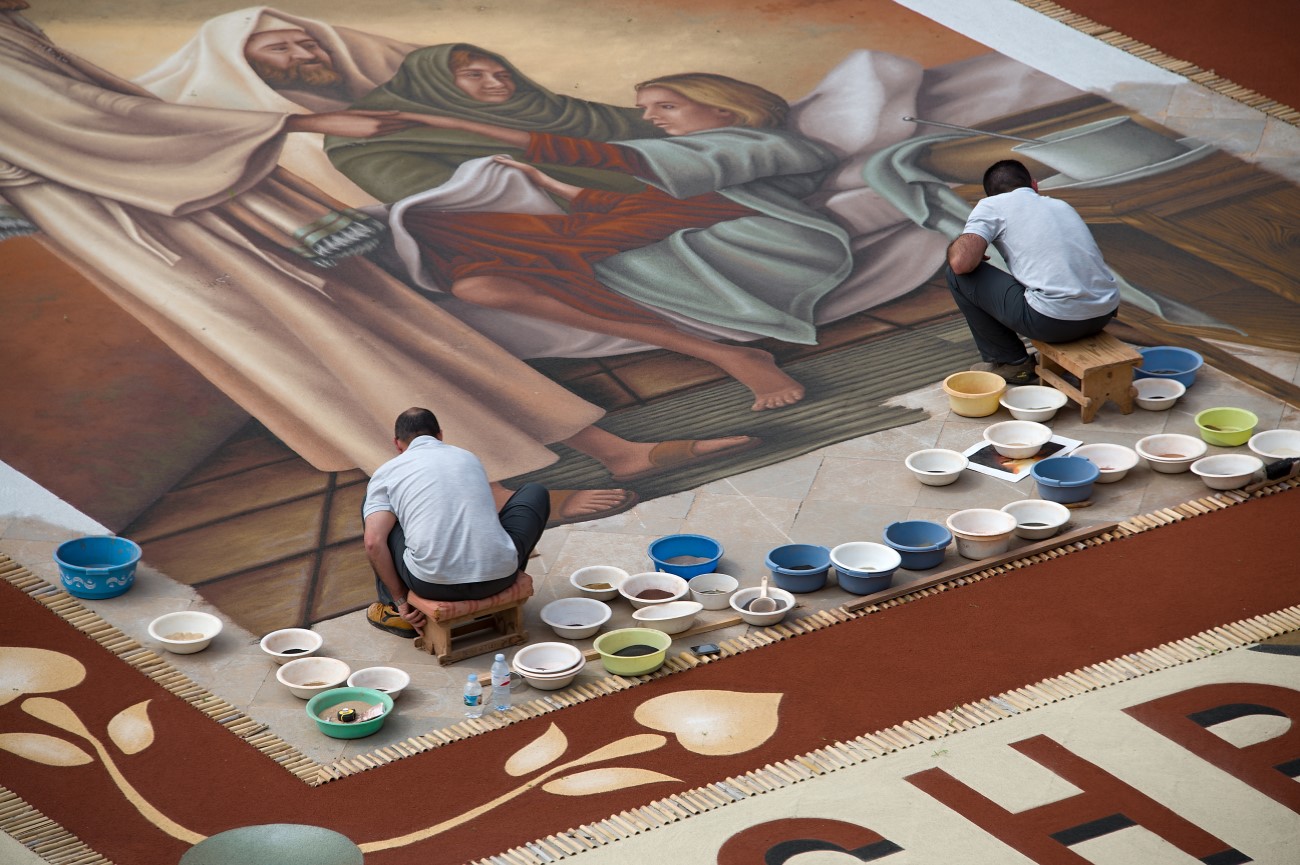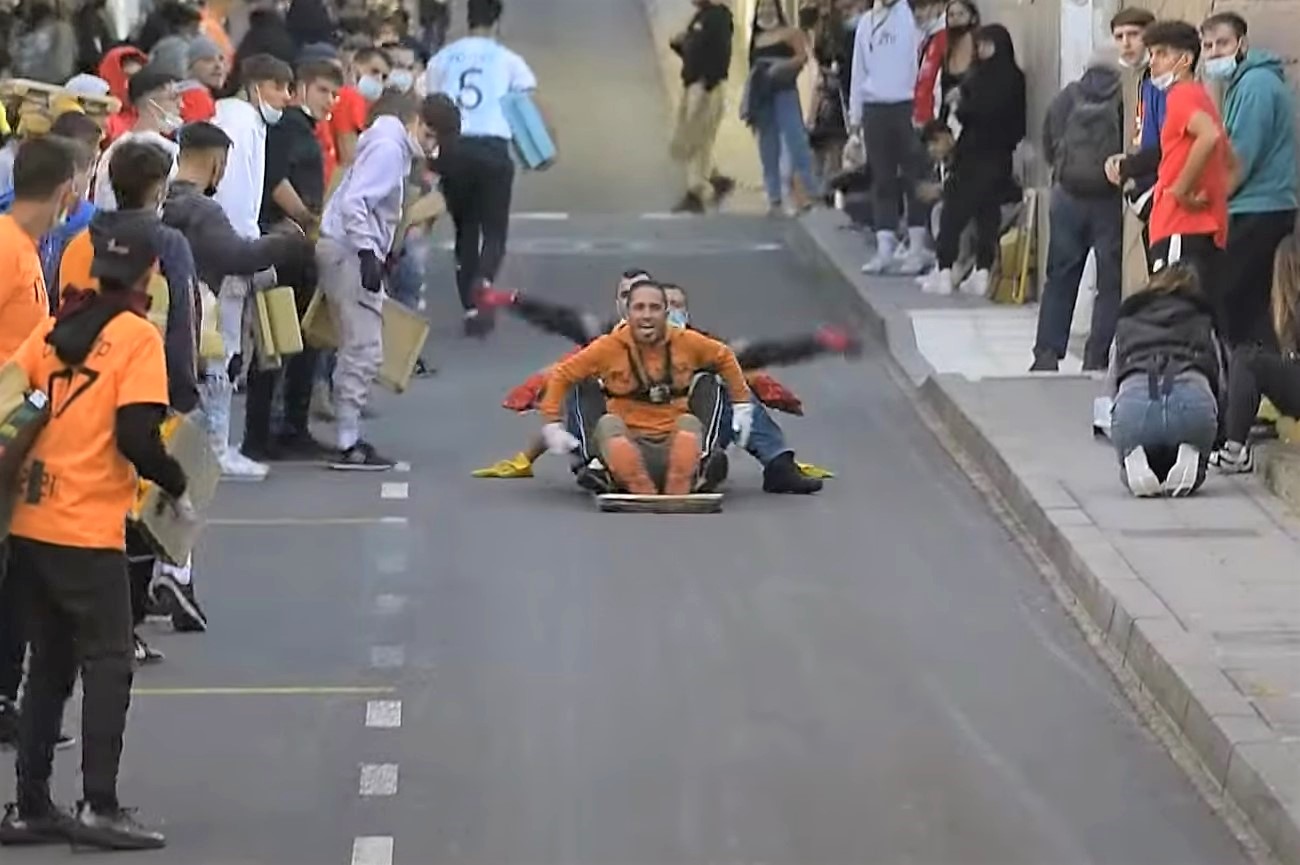Things to do in Tenerife, Spain - 6-day itinerary
Tenerife is the most popular island in the Canaries, welcoming over six million visitors annually. White sandy beaches and all-inclusive resorts dot the coast, while inland, lush forests and ancient towns await you. Hovering above the clouds is Mount Teide, the tallest peak in Spain and a favourite spot for hiking.
Our six-day itinerary features the best things to see in Tenerife, from breathtaking viewpoints to paradisical beaches and picturesque villages. We’ve also included some of the island’s top restaurants and hotels to help you plan your visit.
Day 1 -
Teide National Park

Morning:
Teide National Park
We’re starting our trip by ticking off one of the main sights in
Tenerife, the Teide National Park. Dominating the park is Mount Teide,
Spain’s highest peak and one of the tallest volcanoes in Europe. One of
the best ways to reach the mountain is to hop on the Teide Cable Car.
The ride takes around eight minutes. From here, there’s a path that
leads you to the peak. Keep in mind that the high altitude may cause
respiratory problems. Also, make sure to pack layers, as it’s usually
cooler up here. Around the park are several incredible viewpoints worth
checking.
Start at Mirador de Los Poleos, then continue to Mirador de las Narices del Teide and Boca Tauce. Turning left, you’ll encounter La Ruleta. From there, it’s only a few minutes to the cable car stop.
Afternoon: Samara Circular Trail
In the afternoon, you can set off on a hike around the crater of Samara. This trail takes you through lava flows and offers views of the neighbouring island of La Gomera along the way. It’s a circular route which takes around an hour and a half to complete. The starting point is the Mirador de Samara.
Day 1 - Teide National Park Tour Map
Day 2 - West

Morning: Punta de Teno
The Teno mountain range is one of the most incredible spots on the west side of Tenerife. You can explore the rugged cliffs by following the Punta de Teno hike. From the mountains, you’ll make your way down to the Punta Teno lighthouse, admiring the diverse landscape and flora. The trail is 10km long with 800m of elevation. There’s a beach nearby if you feel like going for a swim. Make sure you arrange transportation back to the starting point, or you’ll be forced to do the 10km back uphill. Most people opt to take the public bus back to Buenavista.
Masca
Make your way south towards the small town of Masca, home to little more than 100 people. A winding road leads you to the centre, with mountain views along the way. Once you get to Masca, spend a couple of hours wandering around the cobbled streets. If you’re up for another hike, you can always follow the Barranco de Masca, a three-to-four-hour trail that takes you down to the sea.
Los Gigantes
From Masca, drive down to Los Gigantes. This seaside town gets its name from the dramatic cliffs that overlook it, which reach up to 800 metres high. It’s worth wandering around the waterfront, taking in the ocean views. Nearby there is a beach and some stunning natural pools, where you can relax.
Afternoon: Costa Adeje
Continue driving along the coast until you reach Costa Adeje. This resort area is renowned for its beaches and activities such as golf and watersports. Along its 26 kilometres of coastline are more than a dozen beaches and coves. You can choose between large areas, such as Playa del Duque, Playa de Fañabé, Playa de la Pinta or Playa de Torviscas, or more remote spots like Playa Los Morteros and Las Salinas. It’s worth exploring the town itself and visiting monuments like the Church of Santa Úrsula and the ruins of Casa Fuerte. Beyond the centre, you’ll also find incredible natural sights like the Barranco del Infierno (one of the hardest hikes on the island) and the Caldera del Rey.
Playa de Las Américas
A bit further south is Playa de Las Américas, a popular departing spot for whale and dolphin watching tours. Tenerife is one of the few places with a colony of whales that don’t migrate, meaning you can spot them all year round. The island’s warm waters attract more than 20 species of whales and dolphins, so you’ll have plenty to capture during your three-hour tour. The area itself is a popular resort with plenty of beaches and a lively nightlife scene. Beyond Las Américas beach, we recommend checking La Honda, El Camisón and Troya.
Day 2 - West Tenerife Tour Map
Day 3 - South

Morning: Pyramids of Güímar
It’s time to explore the south of Tenerife. Our first stop is the Güímar Pyramids Ethnographic Park. With over 64,000 m2, the park stands out with its stepped pyramids made of lava stone. Alongside these iconic structures are also a botanical garden and a museum.
El Médano
Make your way down the coast towards El Médano. The beach of the same name is one of the longest sandy stretches on the island and a popular spot among surfers. Within the town, you'll also find smaller coves like El Salado, El Cabezo and La Jaquita. Further out is Montaña Roja, a wild beach sitting at the bottom of a volcano, and the remote Tejita Beach. There are a number of hiking trails that cross through the area too.
Afternoon: Playa de Los Cristianos
Spend the afternoon at Playa de Los Cristianos. Enjoy a swim by the beach and capture the colourful boats moored nearby. The calm waters make this an ideal area for families. It’s also one of the best spots to watch the sunset in Tenerife since it faces west. Wrap up the day at one of the lively bars along the promenade.
Day 3 - South Tenerife Tour Map
Day 4 - North

Morning: Rambla de Castro
Wake up early and head north for a hike along the coast. The 10km trail, Rambla de Castro, takes you along the cliffs, passing through countless palm trees. You’ll need at least three hours to complete it, but it’s worth it for the impressive sea views. If you want, you can continue to Playa de Castro for a swim or to capture the small waterfall on the beach.
Puerto de La Cruz
After your hike, drive off to Puerto de La Cruz. English writer Agatha
Christie wrote two of her books here following a visit in 1927. You can
find a bust of her at the La Paz viewpoint. It’s worth wandering through
the city’s port and visiting the botanical gardens up on the hill.
Inside you’ll find a variety of plants, including a century-year-old
mamey and a Lord Howe fig tree.
Another major attraction is the Lago
Martiánez complex. Designed by artist César Manrique, the installation
features a large lake, seven swimming pools, bars and restaurants.
The area is also full of beaches. Some of the best ones include El Muelle, San Telmo, Martiánez, and Jardín. To complete your tour around the city, make sure you visit the central square, Plaza del Charco, Castillo de San Felipe and Casa de la Aduana.
Afternoon: Cueva del Viento
Slowly make your way to Cueva del Viento, a volcanic cave formed about 27,000 years ago. The cave is nearly 18 kilometres long, making it one of the longest in the world. However, only a short section of the galleries is open to the public. You’ll need to book a tour to access this area. The guide will teach you about the geological formations and the diverse local fauna, which includes species like the eyeless cockroach.
Icod de Los Vinos
Just a few minutes from the cave is the lovely
town of Icod de Los Vinos. It is home to the infamous Drago Milenario, a
thousand-year-old dracaena tree that has become one of the island’s
icons. It has an unbelievable height of 17 metres and a trunk weighing
65 tonnes. You can also spot the tree from Plaza de la Constitución.
Other things worth seeing in the area include the wine museum, the 17th-century Convent of San Francisco, and the Mariposario Del Drago, a butterfly nature park housing over 800 tropical butterflies.
Garachico
Our last stop of the day is Garachico. This small coastal town features a couple of natural pools with sunbathing areas. Garachico used to be one of the island’s most popular ports but lost its relevance following the eruption of Montaña Negra in 1706. The lava that took over the place formed rock pools near the harbour, now a popular swimming spot. Finish the day with a wander along Plaza de la Libertad.
Day 4 - North Tenerife Tour Map
Day 5 - Anaga Rural Park

Morning: Taborno
Start your morning in Taborno, a tiny village on the east side of Tenerife. It’s worth taking a stroll around its streets and visiting the main square, all while taking in the surrounding mountain views.
Roque de Taborno
From the main square of Taborno, you can follow the hiking trail to the Roque de Taborno peak. This circular route is about four kilometres long and is among one of the easiest trails on the island. Along the way, you’ll enjoy panoramic views of the north coast. While it's on the low scale of difficulty, it has some steep areas that can get slippery if it rains, so be prepared.
Mirador Cruz del Carmen
Our next stop is the Mirador Cruz del Carmen. From this viewpoint, you can capture Mount Teide in the distance. After checking out the views, you can follow a short hike called Sendero de Los Sentidos (Path of the Senses). The trail passes through a laurel forest and includes three sections, with trail one being the shortest. Another scenic walk in the area takes you to the Mirador Pico del Inglés.
Bosque Encantado
Running through the northeast of Tenerife is the Anaga mountain range. There are countless hiking trails around this area with different lengths. The most famous one is the Bosque Encantado (Enchanted Forest) which takes you inside the Reserva Natural Integral de El Pijaral. In this lush setting is the largest collection of ferns in the Canary Islands.
Afternoon: Taganana
After lunch, we’re heading to Taganana, another tiny hamlet within the Anaga Rural Park. Until the 1950s, the town was isolated from the rest of the inland since there was no connecting road. Now it is a popular tourist destination. Taganana stands for ‘surrounded by mountains’ in the ancient dialect of the Guanches, Tenerife’s first residents. The main attractions in the area include the 16th-century church Nuestra Señora de las Nieves and the viewpoints of El Bailadero and Risco Amogoje.
Northern Beaches
Spend the rest of the afternoon hopping around the beaches of the north. Start with a visit to Playa del Roques de las Bodegas. With soft black sand and short waves, this is one of the best beaches near Anaga. Then head to nearby Almáciga, a slightly busier stretch popular among surfers. Finish off at Playa de Benijo. Perfectly nested between Roque Benijo and Roque La Rapadura, this wild cove is the perfect spot to end the day.
Day 5 - Anaga Rural Park Tour Map
Day 6 - La Laguna & Santa Cruz De Tenerife

Morning: San Cristóbal de La Laguna
For our last day, we’re sticking to the south coast near the airport,
starting at San Cristóbal de La Laguna. You can drive here or get the
tram from Santa Cruz. La Laguna is a famous university city surrounded
by 15th and 16th-century buildings. Among the most iconic structures are
the Casa de la Alhóndiga, Casa de Los Capitanes Generales, Casa del
Corregidor and Casa de Ossuna. The city’s historic quarter was declared a
Unesco Heritage Site in 1999. It’s worth wandering around the city,
passing through the lively streets of San Agustín, Obispo Rey Redondo,
and Herradores.
Of course, you should also visit some of the town’s main monuments, including the cathedral, the Convent of San Agustín and the Iglesia de la Concepción. Take a break at Plaza del Adelantado, where you’ll find the town hall, the Ermita de San Miguel and Palacio de Nava, a 16th-century palace that combines neoclassical and baroque details. Other places worth checking include the municipal market, the Museum of History and Anthropology and the Fundación Cristino de Vera.
Afternoon: Santa Cruz de Tenerife
In the afternoon, head to Santa Cruz de Tenerife, the island’s capital. You can easily cover the entire city on foot, exploring every little corner. Make sure to stop by the city’s picturesque squares, like Plaza de España and Plaza del Príncipe, and wander through Calle del Castillo and Ramblas.
Santa Cruz is also home to fantastic museums like the TEA (Tenerife Espacio de las Artes) and the Museo de la Naturaleza y la Arqueología. Finally, you can visit some of the city’s parks like García Sanabria or head for a swim at the Parque Marítimo César Manrique.
Playa de las Teresitas
Continue your trip to Playa de Las Teresitas, a white sandy beach backed by the cliffs of the Anaga.
Auditorio de Calatrava
Before you leave, you can attend an event at the Tenerife Auditorium. This avant-gard building often hosts exhibitions and concerts. There’s a restaurant on the terrace where you can enjoy incredible city views.
Day 6 - La Laguna & Santa Cruz De Tenerife Tour Map
Top things to do with kids in Tenerife
Tenerife offers plenty of activities for kids. If you're planning to spend time by the beach, the south side is usually better for the weather. Places like Los Cristianos, Costa Adeje, and Playa Las Américas are full of family-friendly resorts. Around here are some of the island’s water parks, like Siam Park and Aqualand. Kids will also enjoy the submarine safari from Marina San Miguel. If you’re in the north, however, you can drop by Costa Martiánez, a swimming pool complex designed by César Manrique.
Dolphin and whale watching tours are a popular activity for the whole family. Excursions usually depart from Los Cristianos, Los Gigantes and Puerto Colón. You can also spot other types of animals at the local zoos, including Loro Parque, Jungle Park and Monkey Park.
Hiking Mount Teide is a must while visiting Tenerife, but some trails may be better suited for older children. An easier option is the Chinyero walk, a mostly flat loop around a volcano. Other popular attractions include Forestal Park, home to the island's largest zipline and the Mariposario del Drago, a tropical garden with hundreds of butterflies flying around.
Where to eat in Tenerife
Tenerife has a remarkable restaurant scene. Visitors can choose between traditional eateries, known as guachinches, laid-back beach bars and high-end restaurants, including a couple of Michelin stars. Most dishes are seafood-based, like sancocho, a salted fish stew paired with potatoes and parsley. Wreckfish and parrotfish are common ingredients, both of which can be found around the Canary waters. Other staple dishes include gofio escaldado (corn flour dissolved in fish stock) and papas arrugadas (wrinkled potatoes), which you can pair with your favourite mojo (sauce). Below are some of the best places to eat in Tenerife:
- Guachinche Las Galanas: Located on the north side of Tenerife, this traditional guachinche specialises in fish dishes, often paired with white wine. Popular options include the octopus and the chickpea stew.
- Bodegon Campestre: This restaurant stands out with its rustic interior and barbecue setup. Locals head here for grilled meat and sausages like chorizo and morcilla (blood sausage).
- Bodegón Casa Tomás: On the outskirts of San Cristóbal de La Laguna, you’ll find this cosy spot specialising in Canarian cuisine. Beyond the classics like the chickpea stew and the ropa vieja, they are also renowned for their ribs.
- San Hô Restaurant: Housed inside the Royal Hideaway Corales Beach hotel, this Michelin-star restaurant takes inspiration from the Canaries, Japan and Peru. It is run by chef Adrián Bosch and chef Eduardo Domínguez, both of which rank among the best chefs in the Canary Islands.
- Noi Restaurante: Chef Pablo Amigó is behind this contemporary restaurant in the capital of Tenerife. The tasting menu combines local ingredients with Asian and Latin American flavours.
- San Sebastián 57: Also in Santa Cruz de Tenerife, this restaurant serves traditional dishes with a contemporary twist. They offer a great selection of Canarian wines to pair with the meal.
- Restaurante El Rincón de Juan Carlos: This two-Michelin star restaurant is run by the Padrón brothers, a popular duo from the Canaries. The dining room offers privileged views of the sea and the beaches of La Caleta.
Where to stay in Tenerife
- Hotel Vincci Selección La Plantación del Sur (5 stars): Set in Costa Adeje, this five-star resort has everything you need for a relaxing holiday. Guests have access to five swimming pools, a gym, a spa and sports courts. You can choose between rooms, suites and villas with private terraces.
- Fantasia Bahia Principe Tenerife (5 stars): This all-inclusive hotel is ideal for families. There are plenty of areas for kids, including two playgrounds, a splash pad and a water park. Meanwhile, parents can take advantage of the spa and the theatre. There are also multiple restaurants, bars and swimming pools.
- Sunlight Bahia Principe San Felipe (4 stars): Facing Playa de Martiánez, this hotel is ideal for those who want to explore the north side of the island. Rooms offer views of the sea or even Mount Teide. Other amenities include several restaurants, bars, pools, as well as a spa, gym and tennis court.
- Atlantis Park Resort (3 stars): If you're travelling on a budget, this three-star hotel might be a good alternative. Located near the Anaga rural park, it offers a range of apartments, from studios to family-size properties. Amenities include a rooftop bar, indoor and outdoor pool and a gym.
Best time to visit Tenerife
You can visit Tenerife any time of year. Winter is the high season for those seeking warm sunny days. It gets even hotter in the summer, especially when the Saharan Calima winds blow. Meanwhile, spring and fall are perfect for hitting the trails away from the crowds that often fill the island. The hottest month is August, with a daily maximum of 31ºC and an average low of 22ºC. On the other hand, the coldest month is February, with an average high of 22º C and an average low of 15º C.
Tenerife Festivals
- Carnival: Like many other Canarian islands, Carnival is a popular celebration in Tenerife. During February and March, the island dresses up for the occasion, particularly in the capital Santa Cruz. Locals participate in parades and parties until the wee hours.
- Corpus Christi: This celebration is held in June, especially in La Orotava, where people adorn the town square with colourful sand, signalling the procession route.
- Fiesta de la Virgen de la Candelaria: Around February and August, locals celebrate the Virgin of Candelaria, the patron saint of the Canary Islands. People travel from all over the archipelago to visit the city of Candelaria and participate in the processions.
- Festival Mueca: Every year in May, the island celebrates the Festival Mueca. Held in Puerto de La Cruz, this festival welcomes magicians, dance troupes and comedians. Most of the performances are in silence, making them suitable for anyone who doesn’t speak Spanish.
- San Andrés: The Fiesta de San Andrés takes place in Puerto de La Cruz and La Orotava on November 29th and 30th. It represents the opening of the wine cellars and the tasting of the new wine. In Icod de Los Vinos, youngsters sit on greased wooden boards and slide down the steep streets as part of the festivities.


